

PLANNING A TRIP TO YELLOWSTONE: The Only Guide You’ll Ever Need
Post Summary: Everything you need to know for planning a trip to Yellowstone. Advice on where to stay, when to go, and the best tips for an epic Yellowstone vacation.
Planning a trip to Yellowstone National Park can feel like a monumental undertaking. The sheer size of the park alone is enough to make any seasoned planner run for the hills. Before we took our big trip to Yellowstone, I spent a lot of time scouring through different books and sites to craft the perfect Yellowstone itinerary . To save you hours of reading through different Yellowstone travel guides, I created this Yellowstone trip planner so you can go to one place to find everything you need.
This guide on how to plan a trip to Yellowstone will cover:
-When to go to Yellowstone -Where to stay in Yellowstone -How to plan a Yellowstone trip itinerary -Must-see sights in Yellowstone -What to pack for Yellowstone -Getting to Yellowstone -Useful resources -Tips for visiting Yellowstone
RELATED POSTS: The Best Home Rentals in Yellowstone for every Budget The 10 Best Things to do in Yellowstone with Kids Everything you Need to Pack for a Trip to Yellowstone The Ultimate 4 Day Yellowstone Itinerary 10 Hidden Gems in Yellowstone
*This post may contain affiliate links, which means we might earn a small commission if you purchase from them. This is at no extra cost to you! We only recommend products and services we truly think are helpful.
Planning A Trip To Yellowstone
While it’s possible to wing a trip to Yellowstone, it’s not advised. The popularity of the park (over a million people visit a year) and its colossal size mean pre-planning a Yellowstone trip and itinerary is essential to maximizing your time there.
Here are the first two things you want to figure out when planning a trip to Yellowstone.
1. NEED TO KNOW When do you want to visit the park? How many days do you have to visit?
Best time to go to Yellowstone
In general, the best time to go to Yellowstone National Park is in the summer months of July and August. This is also the most crowded time of the year. The reason it’s often touted as the best time of year to visit Yellowstone is that the weather is nicer and, barring unforeseen closings, the entire park is accessible.
July and August weather averages in the mid 70’s Fahrenheit and drops down to the low 40s at night. That being said, the weather in Yellowstone can fluctuate quickly, so there’s always the chance of rain and thunder.
We visited in August, and while it was crowded at the park’s main sights, we never found it hard to find secluded, quiet spots. If you want to get away from crowds, it’s absolutely possible in the busy months. The summer months also have the advantage of being when large Bison herds congregate in the valley.
While July and August provide the best overall experience, let’s dive deeper into the best time to travel to Yellowstone since it will be different for everyone.

Visiting Yellowstone in the early Spring (March, April) This is one of the roughest times to visit because snowy, wet weather will cause muddy hiking trails, icy conditions, and multiple closures in the park. Due to Yellowstone’s high elevation, it will still feel like winter, and snow will be present. Most facilities like hotels, visitor centers, and campgrounds are closed. The upside is the park will be crowd-free, it’s a great time to spot wildlife (babies in particular), and the waterfalls will be gushing from ice melt. Visiting Yellowstone in the late Spring (May, June) If you’re set on visiting Yellowstone in the spring, the best time is May to June when more parts of the park will be accessible. A small number of concessions will start to open, wildflowers will begin to bloom, and wildlife sightings (bear cubs in particular) will be in full effect. Largely considered one of the best times to visit for its lack of crowds and the extraordinary opportunity for wildlife sightings.
Visiting Yellowstone in Fall (September-October) Early fall is a magical time in the park when the fall colors start to appear, and the elk are in rut. Crowds will have diminished, and some hotels and visitor centers will still be open. Most amenities will close by the end of October. With cooler weather ranging from the ’50-’70s, you won’t have to battle harsh winter conditions – although an early snowstorm is always a possibility in Yellowstone. It’s also a good time to spot bears since they come down to lower elevations to fatten up before hibernation.
Visiting Yellowstone in Winter (November – March) Visiting Yellowstone in winter can be a truly magical experience, but the effort it takes makes it best suited for adventurous types. Most roads will be closed by early November, with the exception of the road between Mammoth Hot Springs and the NE Entrance. Entering the park through the other entrances is only permitted via snowmobile, snow coach, snowshoe, and cross-country ski. You will need to find a snowmobile tour or get a special permit to enter the park . The only lodges open during the winter season are Old Faithful Snow Lodge and Mammoth Hot Springs Hotel.
Where To Stay in Yellowstone

Once you’ve decided when to go to Yellowstone, you can start to figure out where to stay in Yellowstone. Here’s where knowing more about what kind of Yellowstone itinerary you want will help you decide where to stay.
The reason? Yellowstone is gigantic. The main road of the park has the shape of the number 8. This road is called the GRAND LOOP . From the Grand Loop, there are five roads that offshoot to the five entrances of the park.
To give you a perspective, the time it would take you to drive the Grand Loop is estimated at 4-7 hours. That’s without any stops to see sights. The reason there’s a huge berth of time in the estimate is that wildlife traffic jams (from visitors stopping to look and from bison standing in the middle of the road), tourists looking for parking spots, and road closures often create hold-ups.
Staying at a hotel in the park
Since the park is huge, we highly suggest staying in the park to reduce driving time . That being said, if you choose to stay in Grant Village in the south and visit Mammoth Hot Springs in the North, it could mean five hours of driving that day! That’s why having a vague idea of your Yellowstone itinerary is important. Many people opt to stay in two different areas of the park during their visit to reduce driving time.
The most central location is to stay in the Canyon Area at Canyon Lodge & Cabins . A good option is to stay at Canyon Lodge and Old Faithful Inn , both of which are close to the park’s main highlights. Old Faithful Inn is a crowded spot, so if you’re looking for something a little more restorative and peaceful, I would also check out Lake Yellowstone Hotel and Cabins .
Lodging for all 9 Yellowstone Hotels can book out a year in advance, so you must book early. If you cannot secure lodging in the park, you’ll need to find somewhere else or wait till it’s closer to your desired dates and check every day for last-minute cancellations. You can look here for all other Yellowstone lodging options available in the park.
Camping in the park
Hotels in the park are expensive. There’s no way around it. To make it worse, the price doesn’t mean it’s an upscale experience. If paying $400 a night for an average to a below-average hotel room is out of the question for you, another option is to camp in the park.
We camped at Madison and Bridge Bay Campground to split up our time and loved it there. There are 12 front country campsites in the park, and most are first come-first served, except for Bridge Bay, Madison, Canyon, Fishing Bridge, and Grant Village. You can learn more about the campgrounds HERE .
Staying outside of the park
If neither of those options works for you, then your next option is to stay in a vacation rental or hotel near one of the five entrances to the park. If you choose that option, remember that the drive from the park entrance to the park’s main road can be up to an hour long, depending on which entrance you use. Staying outside of the park will mean a lot of driving time.
I’ll break down the different entrances below, along with lodging recommendations for each entrance.
If you’re interested in staying in a home rental, you can check our post on the best vacation rentals in Yellowstone for every budget.
Entrances to Yellowstone

Here’s a breakdown of the five different entrances to Yellowstone. We’ll look at which Yellowstone entrance is the best and the cities you could find lodging in for each entrance.
West Yellowstone Entrance Driving Distance and Time from Entrance to Grand Loop: 14 miles, 45 minutes This is the most popular entrance and the best choice if staying outside of the park. Located in West Yellowstone, MT, it has plenty of restaurants, grocery stores, and gas stations. Burnt Hole Cabin is a 2-bedroom home rental right near the entrance and within walking distance of restaurants. For a more conventional hotel stay, The Kelly Inn, is an affordable choice with free breakfast and comfortable beds, and is within one mile of the entrance. If you’re willing to drive more, the VRBOs in Island Park, Idaho , are about 25 minutes away from the entrance but tend to be nicer.
North Entrance Driving Distance and Time from Entrance to Grand Loop: 5 miles, 15 minutes Gardiner, MT, is the closest town just outside of the entrance and is a good location for visiting the Lamar Valley, Mammoth Hot Springs, and the Boiling River. It’s further from areas like Old Faithful and West Thumb Geyser Basin, but doable if you don’t mind a long drive. Gardiner is a cute, small town with grocery stores, a small selection of restaurants, and gas stations.
The Arch View Studio is a nice, simple guest house on VRBO for two people that offers all the same amenities as a hotel but is bigger and cheaper. If traveling with a family, the Gardiner Home is a beautiful home rental with a deck overlooking the Yellowstone River. I also love the look of this chic two-bedroom house rental with a loft.
If you prefer a hotel over a house rental, the Park Hotel Yellowstone is a well-rated hotel with clean, comfortable rooms.
Northeast Entrance Driving Distance and Time from Entrance to Grand Loop: 29 miles, 1 hour The closest city to this entrance is the tiny city of Cooke City, MT. With a population of just over 100 people, it offers a grocery store, restaurants, and a gas station. It’s a great entrance for access to the Lamar Valley; however, it is far from everything else in the park.
I would suggest staying near this entrance only if you are passionate about animal watching and want to be as close as possible to the Lamar Valley so you can get there before sunrise. The Mountain Lux Guest House is a beautiful home with a hot tub and sauna to enjoy after visiting the park.
East Entrance Driving Distance and Time from Entrance to Grand Loop: 27 miles, 1 hour The closest city to the entrance is Cody, Wyoming. We don’t suggest staying here simply because it’s 53 miles from the entrance to the park. That means it will take you around two hours to get to the Grand Loop of Yellowstone. While Cody, Wyoming, is a cute town with some interesting sights, its distance makes it tough for anyone looking to go in and out of the park every day.
South Entrance Driving Distance and Time from Entrance to Grand Loop: 22 miles, 45 minutes The south entrance is the gateway to Grand Teton National Park. While 10 miles is all that separates the two parks, there is only one lodging choice, the Headwaters Lodge and Cabins . Otherwise, you would need to drive 55 miles through Grand Teton National Park to lodge in the cute city of Jackson, Wyoming. Because of traffic and length, staying outside the South entrance is generally not recommended for anyone looking to visit the park every day.
Making a Yellowstone Trip Itinerary
When planning a trip to Yellowstone, your itinerary is vital to helping you create an amazing trip. Here are some key things to think about when planning a Yellowstone itinerary.
2. NEED TO KNOW What parts of the park do you want to see? How many days do you want to visit?
How many days do you need to visit Yellowstone National Park?
Figuring out how many days you need to visit Yellowstone is dependent on how deep you want to explore the park.
Three days at Yellowstone is enough to allow you to see all the park’s main highlights.
Four days at Yellowstone allows you to see all the main highlights, with an additional day to go hiking or explore more features of the park.
(RECOMMENDED) Five to Seven days at Yellowstone is for anyone who is looking to explore all the main highlights with extra time for hiking, fishing, or relaxing in the beauty of the park.
Not everyone has 5-7 days at their disposal, so if you want to get the main highlights, we suggest doing four days in the park. If you notice, we don’t suggest one or two days in Yellowstone. With traffic, parking, and crowds, it would make for a stressful and rushed time at the park. Do people do it? Of course. If you only have one day in the park, focus on doing two or three main highlights to enjoy your time there fully.
In general, it’s best to visit a section of the park each day to maximize your time there.
Best things to do in Yellowstone

Now that you have an idea of how many days you want to spend in Yellowstone, it’s time to plan out an itinerary. The best way to start planning a trip to Yellowstone is to familiarize yourself with the must-see spots and their location in the park. From there, you can plan out an itinerary from there.
We have an entire post with an in-depth four day Yellowstone itinerary . Check it out to get a day-by-day breakdown of what to do, advice on where to stay, as well as inspiration for your trip.
Here are the main highlights in Yellowstone that are considered must-dos when visiting the park.
1. Old Faithful Geyser 2. Mammoth Hot Springs 3. Grand Prismatic Spring + Midway Geyser Basin 4. The Grand Canyon of Yellowstone 5. Wildlife Viewing in Lamar Valley and/or Hayden Valley
Here are secondary highlights for those who have time and want to dive deeper into the park’s geothermal features.
1. Upper Geyser Basin and Morning Glory Pool 2. West Thumb Geyser Basin 3. Norris Geyser Basin 4. Yellowstone Lake 5. Boiling River
And then, of course, there are hiking trails, fishing spots, and lesser-known off-the-beaten-path spots in Yellowstone . Be sure to check out our Yellowstone itinerary post to get the full rundown.
What to pack for Yellowstone

A Yellowstone packing list is dependent on what time of year you will be visiting. This shortlist is intended for June to September travel. While the weather will be nice (especially in July and August), you’ll want to be prepared for sudden shifts in weather. Also, due to the high elevation, nights can and will be cold. We visited in late August and experienced beautiful warm weather and bursts of torrential rain and thunder, with nighttime and early morning temps in the upper 20s Fahrenheit. A week after we left, a snowstorm came through, and the park was coated in snow. Anything is possible in Yellowstone! Pack clothing you can layer up.
For an in-depth look at what to pack for Yellowstone, as well as where to get the supplies, check out our Yellowstone packing list post .
1. Bear Spray 2. Water shoes 3. Rain jacket 4. Comfortable walking shoes 5. Hiking boots 6. Binoculars 7. Sunhat 8. Sunblock 9. Bug repellant 10. Backpack 11. Trash bags 12. Reusable water bottle 13. Quick dry towel 14. Picnic blanket 15. Flashlights or headlamp 16. Clothing layers 17. Camera + Go Pro
Getting to Yellowstone
There are quite a few airports to choose from, but most are small airports with higher prices. The closest airports are Jackson Hole Airport, located in Jackson, WY, and Yellowstone Regional Airport, located in Cody, WY.
You can also look into the following cities to see if they offer cheaper options:
- -Billings Logan Internation Airport in Billings, MT
- -Bozeman Yellowstone International Airport in Bozeman, MT
- -Idaho Falls Regional Airport in Idaho Falls, ID
If all those choices are too pricy, many people opt to fly to Salt Lake City International airport due to easier and cheaper flight options. The drive from Salt Lake City is about five hours to the West Yellowstone entrance.
No matter where you fly, you will have to rent a car since there is no shuttle service within the park. You can check Rentalcars.com to see current car rental prices. Rentalcar.com is an aggregator that compares rental prices from different providers.
Entrance Fees to Yellowstone
Entrance fees are per vehicle and are $35. The pass is good for seven days from the date of purchase. You can save some time by purchasing your vehicle pass before you arrive.
If you plan to visit Grand Teton National Park during your Yellowstone trip and any other National Parks or federal lands in the same year you visit Yellowstone park, you might want to consider buying an America the Beautiful Pass . Good for one year, the pass gives you entrance to every National Park and more than 2000 federal recreation sites. A fantastic choice that can save a lot of money if you have additional National Park travel plans. You can learn more and buy the annual pass HERE.
Useful Resources and Tips for Planning a Trip to Yellowstone

Is Yellowstone a good park to visit with kids or toddlers? Yes! We visited the park with our three-year-old, and he loved it. Yellowstone is a fabulous place for kids. If you want help with your Yellowstone family vacation planning, you can read our entire post on visiting Yellowstone with kids and the best things to do with them.
How is the internet and cell service? Barely existent. While there may be spots where you can get a patch of service, it’s not something to rely on. I have T-Mobile, and my husband has AT&T, and neither one of us was able to connect. The park claims to have hot spots you can jump onto, but those were pretty unreliable. Be happy if you do get it, but don’t expect it.
If there’s no cell service, how do I figure out directions? I’m so reliant on GPS! I know. Me too. First off, the park is very easy to drive in, and everything is clearly marked. That being said, we can’t recommend enough downloading the Yellowstone National Park app that has offline directions and maps to all of the sights in the park. We found it really helpful when looking for trailheads and picnic areas. It also has a wealth of other amazing information that is good to have. It offers education about what all the geothermal features are and fun facts about the park. Download it BEFORE you get there. You can also get a Yellowstone map from the visitor centers.
What’s the food situation in Yellowstone? Cafeterias, restaurants, ice cream stands, and grocery stores are available in all the park’s main sections. All are located close to the hotel lodges or inside the hotel. You can see a full list of dining options here . As is to be expected, food prices are higher than what you would pay outside of the park.
If you’re looking to save, you can bring your own food in and picnic in various areas around the park. Just remember to dispose of all food in a bear-proof trash can or take it with you to dispose of later if none are available.
Are there gas stations in Yellowstone? Yes, gas stations can be found in Canyon Village, Fishing Bridge, Grant Village, Mammoth Hot Springs, Old Faithful, and Tower Junction.
I’m overwhelmed. Can I just go on a tour and have someone be my personal Yellowstone vacation planner? Yes! We have never personally done a tour, so we can’t recommend any to choose from. But, what you can do is look through the tour service Viator to see if they have any that appeal to you. Viator is owned by TripAdvisor and has the same system where they collect reviews. It’s a great way to see what’s out there and if it’s highly rated.
Is a bear going to eat me? Ahh, those cute but enormous bears. While the likelihood of you getting attacked by a bear is very unlikely, practicing bear safety and following all rules set by the National Park Service is vital to keeping not only you safe but the bears safe as well. To further my point of how unlikely it is, since the park’s establishment in 1872, eight people have been killed by bears in the park. You can read more about your likelihood of getting attacked by a bear HERE .
The best way to keep yourself and the animals safe is to hike in groups of three or more, to make noise while you hike, and to keep your senses aware (no listening to headphones). Also, have bear spray with you and know how to use it. We use this bear spray brand and so far have never had to use it!
Lastly, never touch, approach, or feed any animals in the park and stay at least 100 yards away from wolves and bears and at least 25 yards away from all other animals, including elk and bison. Most animal-related injuries are from visitors not following these simple guidelines.
You can read more about safety in the park HERE .
Should I visit Grand Teton National Park while I’m at Yellowstone? Any other spots to visit? Yes! If you have time, a day or two at Grand Teton NP and exploring Jenny Lake is a great way to see a completely different park. If you really want to collect some national park passport stamps , make a long road trip out of it and head North to Glacier National Park. If you want a break from the National Parks, you can also spend a few days in the fun and hip city of Jackson, Wyoming.
Okay, I’m getting excited. Anything else I should know? Yes, that old saying about the early bird catching the worm? It applies to Yellowstone! Get yourself up before sunrise and start your day early. Seeing Yellowstone uncrowded with the hot springs letting off a cloud of steam is pure magic. Get up early and beat the crowds. You won’t regret it.
Also, give yourself a lot of time for everything. Traffic and road closures are very commonplace. We dealt with a fire, an overturned fuel truck, traffic jams from drivers looking at bison, and routine road maintenance. It’s part of the package that comes with Yellowstone. Give yourself a buffer and go with it.
Here’s a recap and checklist for planning a trip to Yellowstone.
1. Decide when you want to visit the park 2. How many days do you want to stay in the park 3. What sights are on your must-do list 4. Sketch out a simple itinerary for hotel planning 5. Book lodging 6. Buy necessary items for your trip 7. Download Yellowstone App 8. Count the days till you’re in Yellowstone!
You’re ready to start planning a trip to Yellowstone! Let me know if I missed anything and if you have any questions in the comments below.
PIN IT FOR LATER

READ NEXT: 11 Amazing National Parks in the East 160 Questions for your next Road Trip The Ultimate Road Trip Food List
Hi, we’re Christina and Brad, Idaho based writers and photographers who live to explore. We did a short stint of traveling full time with our two year old and discovered we're much happier as part time nomads. What does that mean? We travel a lot! And then we go home. We love helping fellow parents and everyday adventurers discover new places and experiences.
Similar Posts

A GUIDE TO THE MIGHTY 5: HOW TO HAVE AN UNBELIEVABLE UTAH NATIONAL PARKS ROAD TRIP

Escape To The Blue Ridge: 25 Fun Facts About Shenandoah National Park

YELLOWSTONE WITH KIDS: 10 Unforgettable Adventures Your Kids Will Love

WHAT TO PACK FOR JOSHUA TREE: 20 ESSENTIALS YOU’LL BE GLAD YOU BROUGHT

22 AWE-INSPIRING NATIONAL PARK BOOKS (FOR EVERY TYPE OF READER)

WHITEFISH, MONTANA IN WINTER: 12 AMAZING THINGS TO DO FOR THE WINTER TRAVELER
One comment.
It’s great that you elaborated on the importance of planning to make the most out of your time. My aunt mentioned last night that she was arranging a tour for her birthday and asked if I had any suggestions for where we should go. Thanks to this educational article, I’ll be sure to advise her that we should think about doing a Yellowstone private trip because it will provide us with wonderful memories.
Leave a Reply Cancel reply
Your email address will not be published. Required fields are marked *
A beginner's guide to visiting Yellowstone National Park: Everything you should see and do

Update: Some offers mentioned below are no longer available. View the current offers here .
I recently returned from an incredible trip to Yellowstone , our nation's first national park. It was very strange to be there in the days of COVID-19, but it was also one of my best visits yet, as it wasn't as crowded as it's been in the past. It was also my first time actually staying inside the park, which was quite a treat.
For more TPG news delivered each morning to your inbox, sign up for our daily newsletter .
Of course, you could easily spend weeks exploring the sprawling 2.2 million acre park and still not see it all. But even a day trip here or long weekend getaway is well worth your time. Here's everything you need to know to plan your trip to Yellowstone National Park.
What to see and do in Yellowstone
Let me start with the highlight: the wildlife.
Among the many rare species you might encounter are grizzly and brown bears, wolves, mountain lions, foxes, coyotes, elk, deer, buffalo, moose and every matter of birds. You can easily pull off the road and see any or all of these animals at once. Buffalo, in particular, are known to cause traffic jams as they use the same roads you do to commute.

Travelers will also discover a ton of adventure in this park. You can camp, hike in the backcountry, boat, fish, cycle and, in the winter, you can even try cross-country skiing.
Both biking and hiking are great ways to experience the natural wonder of this incredible park, and there are plenty of mountain biking and off-roading opportunities. Campsites are available from just $5 a night, and there are approximately 900 miles of trails to explore in the park — just be hyper-aware of your surroundings, as you'll be sharing the territory with some fearsome predators. When I was there last, I saw both bears and wolves.

There are so many amazing hikes here that aren't too difficult and are within walking distance of accessible parking areas. My favorite was probably the hike to Mystic Falls from Biscuit Basin, not too far from Old Faithful. The 2.5-mile round-trip walk takes you to a dramatic waterfall. If you hike a little farther you might luck out like I did and see Old Faithful erupt on the horizon.

Old Faithful
Probably the most famous of all Yellowstone's attractions, Old Faithful is a massive geyser that erupts reliably every 60 to 110 minutes. It's a cone geyser in the Upper Geyser Basin and easily accessible by road, and park rangers can tell you when the next eruption is during the day. There are benches from which you can watch the spectacle. It erupts about 20 times per day, and the plume of water and steam can be as high as 180 feet!
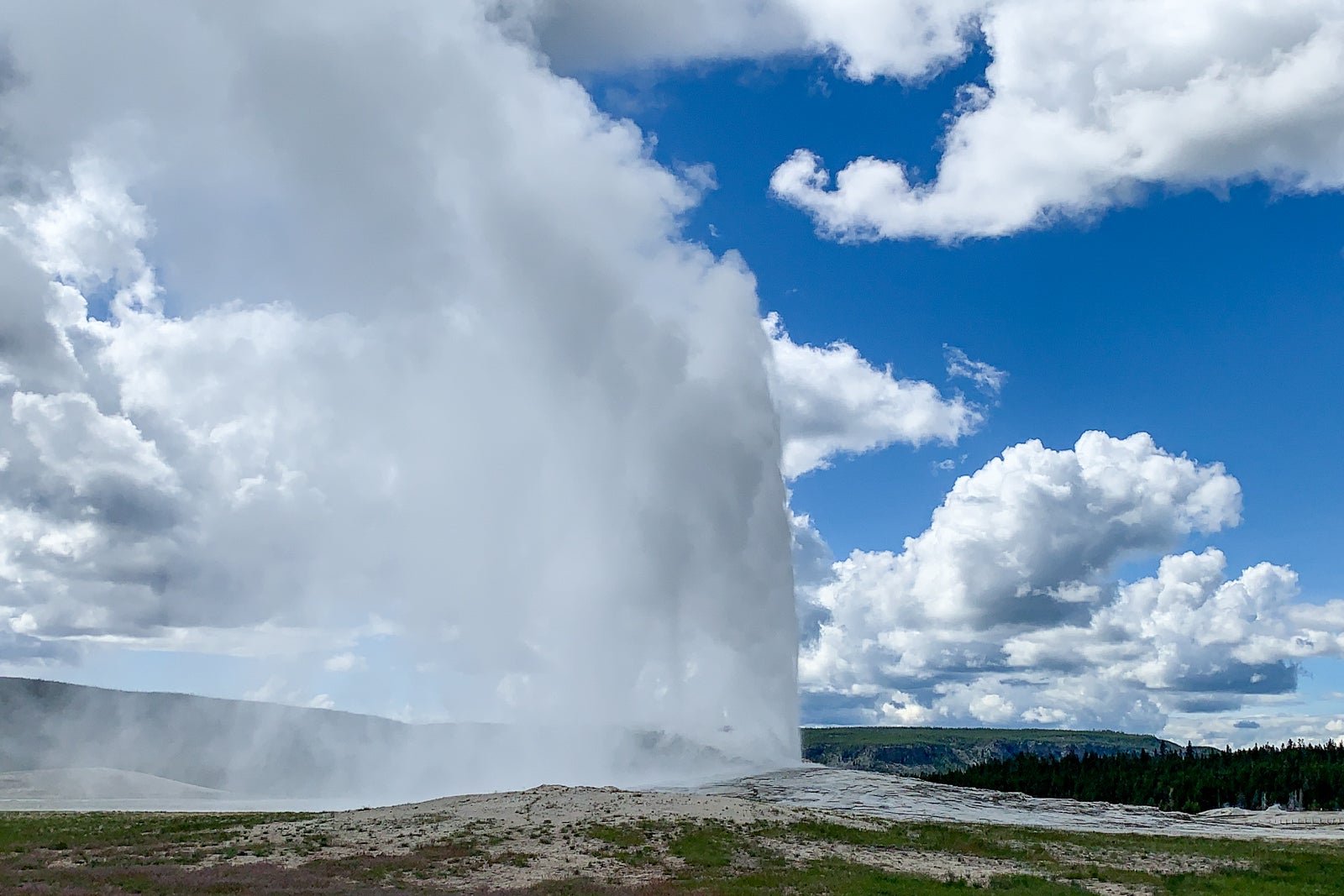
You can usually stay at a lodge near Old Faithful, but for the 2020 season, only cabins are available.
Grand Canyon of Yellowstone
This river valley formed by the Yellowstone River is probably my favorite part of Yellowstone. I've been here now in several different seasons and it's always changing, always distinctly different and always awe-inspiring.
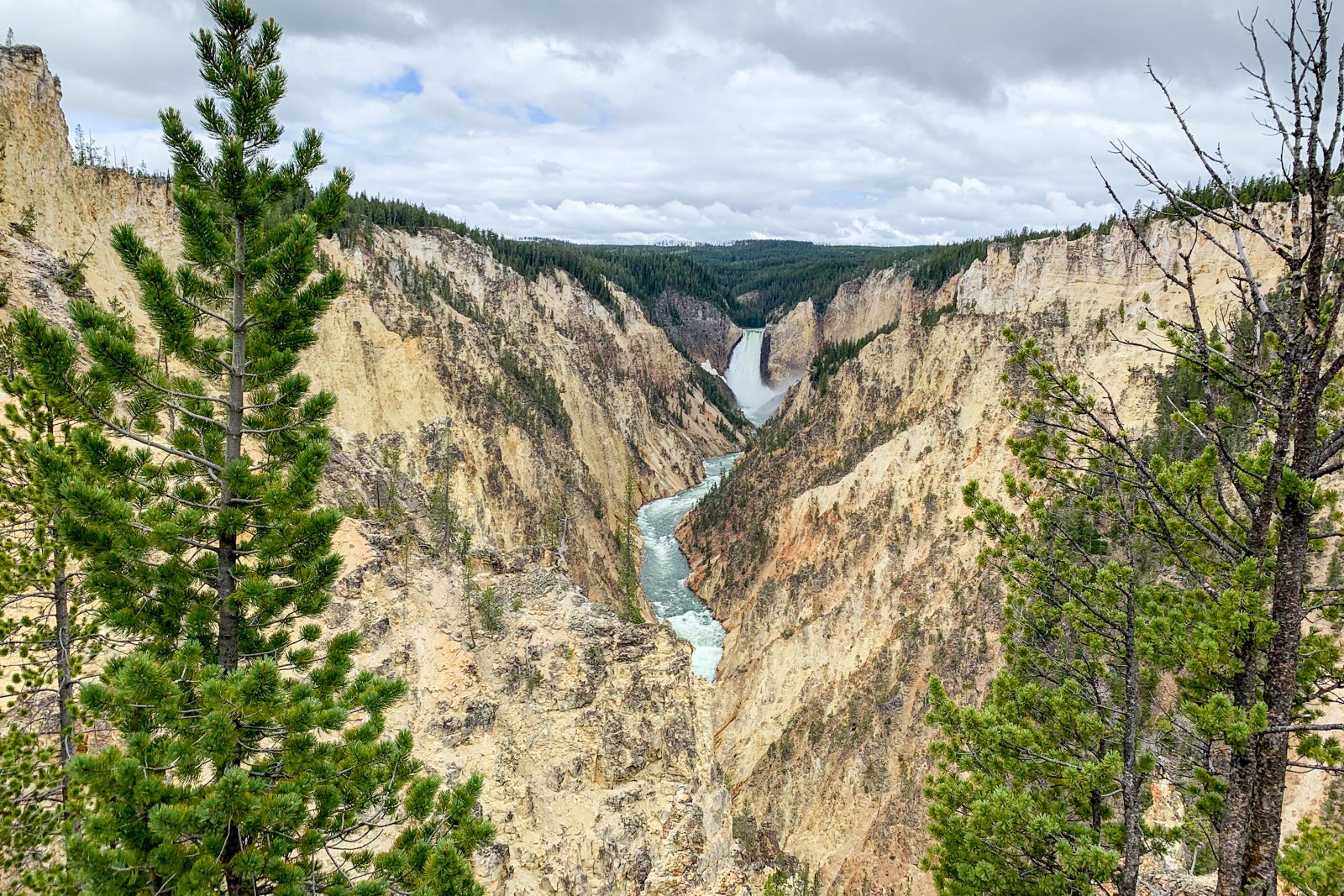
There are several viewpoints, and it's one of the most dramatic areas in the country. I'm especially fond of Artist Point. As you can imagine, they call it that for a reason.
You can also check out the Canyon's Lower or Upper Falls viewing areas. I highly recommend doing the Brink of the Lower Falls observation point where you can really get a sense of the river's immense power. If you're driving, be prepared to pull over constantly to get a new perspective.
Mammoth Hot Springs
Mammoth Hot Springs was one of the first parts of the park that saw policing back in the 1800s when poaching was a problem. The U.S. Army had a base there (it still houses park employees) and it's home to historic Fort Yellowstone.
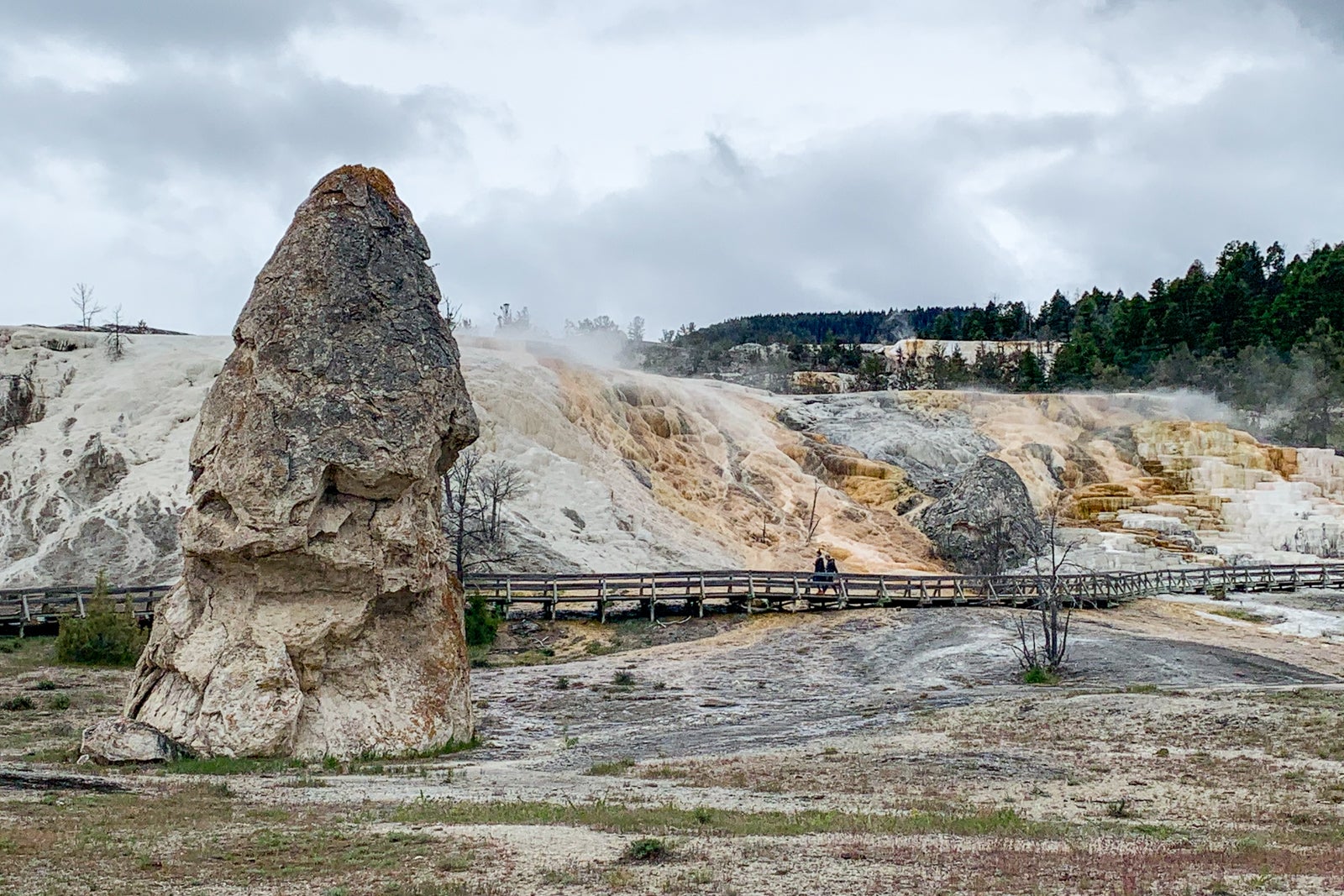
Travelers will also find the Mammoth Hot Springs lodges and cabins, places to eat and even a gas station.
But the best features are the dramatic hot springs laced with boardwalks for closer observations. You can get a good look at the many steaming hydrothermal pools and the travertine terraces. You can walk (or drive) to the Upper Terraces. There's also a hiking trail circling the pools and falls, but bring your bear spray. In a 24-hour span, I saw a grizzly bear and her cubs, and the next morning I saw another grizzly near the road.
There are also herds of elk that call the area home. You're pretty much guaranteed to see elk during a trip here.
Biscuit Basin and Mystic Falls
Not far from Old Faithful you'll find Biscuit Basin, which is home to gorgeous hot springs and small geysers with fairly regular eruptions.
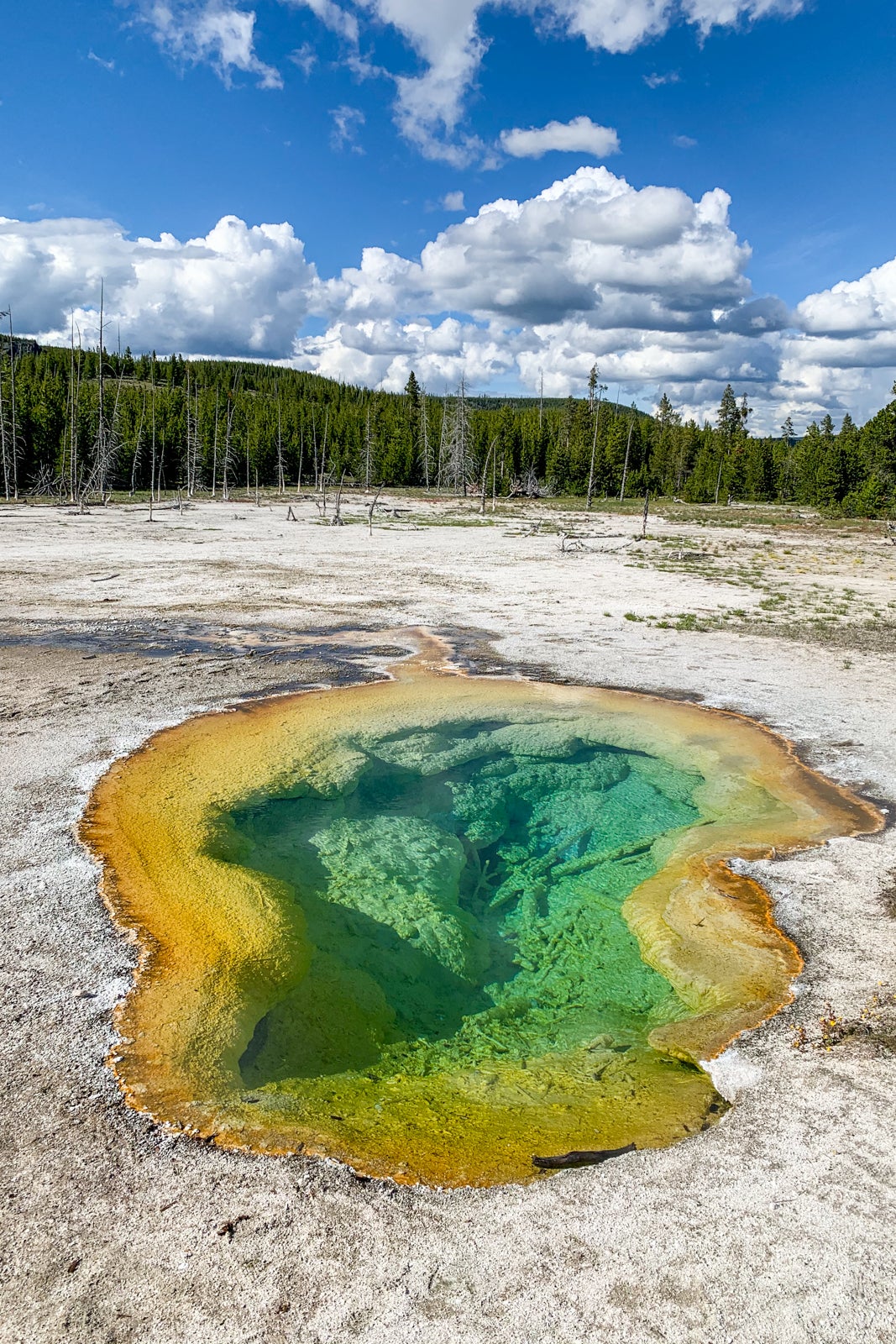
The mix of colors and textures in the rocks is striking. You can follow a wooden walkway and it will eventually lead to an easy hike to Mystic Falls and a spectacular waterfall in a river valley.
Related: State-by-state guide to reopening America
There are also plenty of fun family-friendly activities just outside the park in cities such as Gardiner and West Yellowstone, Montana. Consider, for example, the Grizzly and Wolf Discovery Center in West Yellowstone. You and the kids can see live bears and wolves who can't return to the wild and learn a ton about the fearsome animals from a safe distance.
Whether you're exploring the park by foot or car, don't forget to grab an $80 annual national park pass . Yellowstone National Park normally charges a $35 entrance fee per vehicle, so if you have any other national park trips on the horizon, you can easily get your money's worth.

The best times to visit Yellowstone
The peak time is definitely summer when everything is open. It can get hot, but it's generally not humid. You should pack shorts for the daytime, and be sure to bring sweaters, a sweatshirt or a coat. Yellowstone is in the mountains and it gets cold at night even in the summertime.
You can travel here all year long, including during the winter , which would be a magical (albeit cold) time to visit Yellowstone. Warren Smith, a chiropractor at HealthSource in Butte, Montana, told me he has cross-country skied into the park from West Yellowstone, and outfitters will take even take you snowmobiling.
My personal favorite time to visit is in the early fall when the crowds are thinner, and the colors begin to change. Temperatures are more moderate and it's not quite so hot. You get more of the park to yourself and wildlife is more likely to be around. Keep in mind, though, there can be freak snowstorms even in September — so pack for anything.
Read our complete guide on the best times to visit Yellowstone .
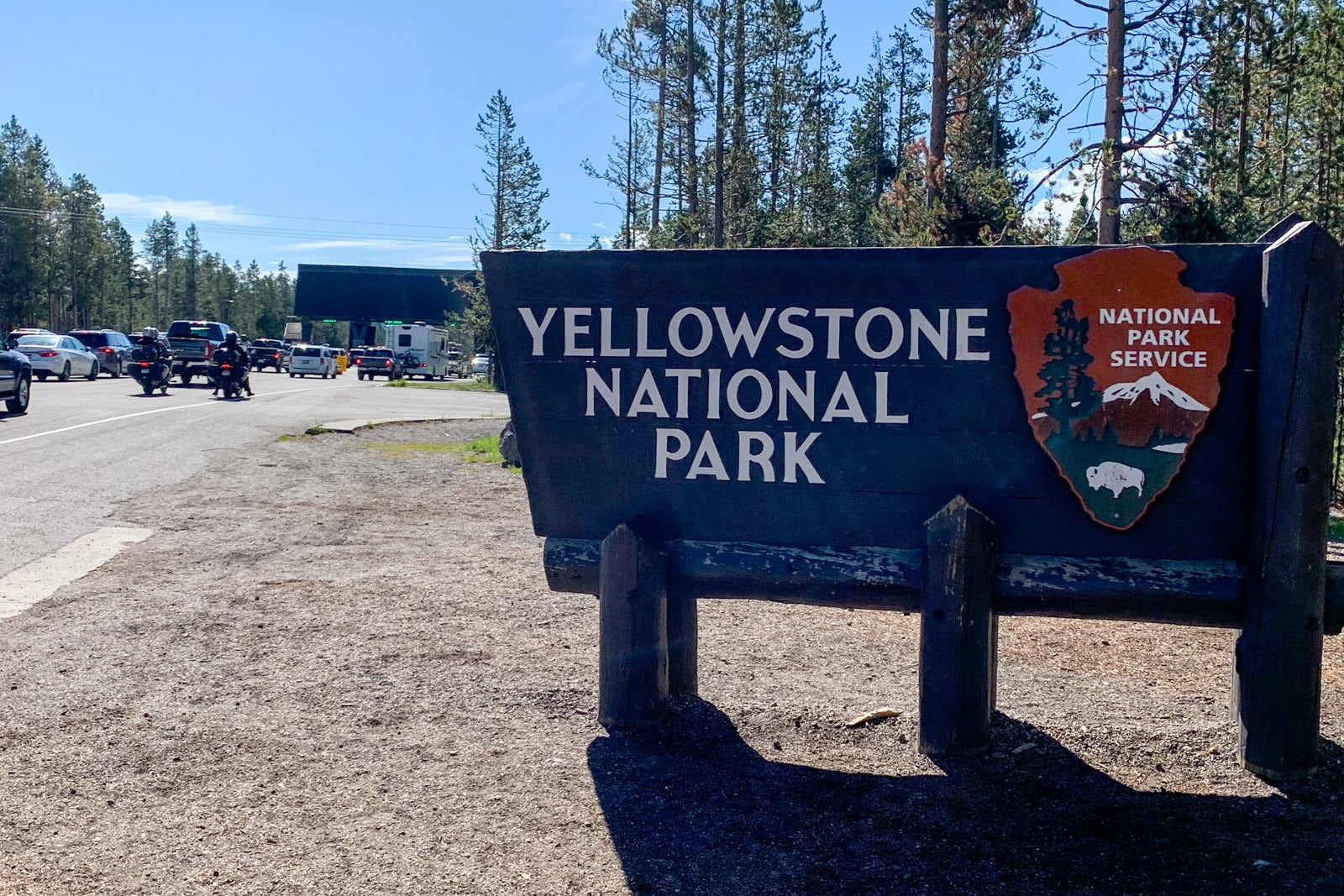
Where to stay in Yellowstone
There are plenty of places for you to stay in and around Yellowstone. Both vacation rental properties and hotels are plentiful at all five entrances to Yellowstone (there are three in Montana and two in Wyoming).
Related: How to visit the national parks for less
Points hotels near Yellowstone
Search Cook City, Gardiner, Red Lodge or West Yellowstone in Montana for hotels or rental properties near the trio of Montana entrances. There are also plenty of places to bed down at the two Wyoming entrances. You can search Cody, Wyoming and areas in Idaho.
If you're looking for places to spend points, however, there are far fewer options unless you're willing to stay a few hours outside the park in places like Bozeman, Montana or Idaho Falls, Idaho.
There's a nice Holiday Inn in West Yellowstone where last-minute rooms in July started at $281 a night. That's steep, but if you book early you can certainly find better rates. A long weekend in September will set you back $252 a night, or you can use 45,000 IHG Rewards Points per night.

I booked a room here in July and, despite the last-minute reservation, managed to secure a decent rate. Just watch out for added taxes and fees (unlike the rest of Montana, there are taxes in West Yellowstone). The final price ended up being almost $300 a night. Ouch.

There are also two Choice hotel properties travelers may want to consider: An Ascend Hotel for $212 a night and a Comfort Inn starting at $186 a night in West Yellowstone. Choice also has select properties in Livingstone, Montana, but that's an hour away from the park.

Travelers can also consider the Days Inn by Wyndham West Yellowstone (from 15,000 Wyndham points per night). And if you have Best Western Rewards points, you could try the Best Western Desert Inn or the Best Western Weston Inn , both from 28,000 points per night.
If you're looking for a major chain hotel, you'll need to head to Bozeman, Montana for a Hilton or a Marriott property. Rates are generally better, but it's a good 2-hour drive to Yellowstone. Prices are also high during the peak summer season — yes, even in 2020 — and can easily run at least $250 per night.
When it welcomes its first guests on Aug. 18, the 122-room Kimpton Armory Hotel Bozeman will be one of the area's most exciting new properties. The art deco building dating back to 1941 and features a whiskey bar, a rooftop pool and a concert hall. It's about an hour from Big Sky and two hours to the north entrance to Yellowstone .
In Big Sky, the relatively new Wilson Hotel, a Residence Inn by Marriott, is one of the first from a major brand in the area.
Related: How to use points to stay near national parks
Staying inside Yellowstone's borders
Within the park, travelers will discover several rustic lodges. Xanterra is the concessioner for all accommodations inside Yellowstone National Park (as well as Glacier and others, too). Many of the large lodges have existed for more than a century, so keep that in mind and manage your expectations accordingly.
Related: I went to Glacier and Yellowstone during COVID-19 and it was weird
Hotels sell out quickly during the high season. Even this summer, with the coronavirus crippling travel, there isn't much availability. In fact, only cabins are available in the park right now. Lodges are closed and are likely to remain shut down for the remainder of 2020. That makes inventory even scarcer than it usually is this time of year.
I was able to find some dates with availability, but prices are high. At Mammoth Falls Lodge cabins, rates were $277 a night for dates in July and August.
Back in June, I stayed in the cabins at Mammoth Hot Springs Lodge. They are charming but basic. The beds are small, and there's no air conditioning. Still, it was really fun staying inside the park and having easy access to hiking trails and the beautiful Mammoth Springs.

The cabins at Old Faithful Lodge are cuter and just steps from the famous Old Faithful geyser. They're tiny, sure, but the perfect base for exploring the nearby geysers, mountains and hot springs when I stayed there in June. Rates in August start at $174 a night.

If you're thinking about staying inside the park this summer, you want to act fast.
Betsy O'Rourke, chief marketing officer at Xanterra, told TPG earlier this year, "We open the inventory 13 months out and we sell out in a few hours. However, about 30% of that inventory cancels and gets rebooked."
Her advice? Check back frequently. "Our cancellation policy is 48 hours out, so we do get cancellations even close in."
You can find better deals if you're willing to stay at a vacation rental instead. Airbnb has plenty of properties, especially for travelers who want something unconventional like a traditional log cabin, glamping-style tent or a treehouse.
Even last minute, there's availability on Airbnb outside the park. I recommend searching for West Yellowstone or Gardiner. I found plenty of options near Montana's Western entrance to the park starting at $157 a night.

Luxury accommodations near Yellowstone
It can also make a lot of sense to use your credit card points to help offset the cost of an upscale stay near the park. Consider redeeming a stash of Chase Ultimate Rewards points to book a stay at an independent property. You could also "erase" a qualifying travel charge by using a card like the Capital One Venture Rewards Credit Card.
The Under Canvas "glamping" lodge is just 10 minutes from Yellowstone's West Entrance. I found availability in August for $264 a night. With taxes and fees, a four-night stay would be just over $1,200.
If you really want to splurge, try the Triple Creek Ranch in Darby, Montana — it's about 4.5 hours from the park, and rates start around $1,600 a night. Paws Up resort in Greenough, Montana is also a 4.5-hour drive, and rooms will set you back about $1,700 a night. And the first five-star, ultra-luxury hotel in the entire state, a Montage in Big Sky, will debut in 2021.
Camping in Yellowstone
Of course, you can always camp inside Yellowstone. Yellowstone has 12 proper campgrounds with over 2,000 individual spots. You can head over to Yellowstone National Park lodges to make reservations, which cost $27 a night, on average.
Other campgrounds are available on a first come, first served basis. They fill up quickly in the summer, and in 2020 not all campgrounds are available because of the pandemic, so your mileage may vary. A search in July found just four of the 12 campgrounds open and accepting reservations. In fact, most were full by 7 a.m.
If you have an RV or camping equipment, you can stay outside the park in the surrounding national forests for very little — or nothing at all. It's called dispersed camping, and travelers comfortable with a more primitive stay should consider the surrounding Custer Gallatin or Bridger Teton National Forests.
How to get to Yellowstone
Flying to yellowstone.
You can fly to a number of cities that put Yellowstone within reach. The easiest and closest airport is Bozeman Yellowstone International Airport (BZN) in Montana, which bills itself as the "Gateway to Yellowstone." It's the busiest airport in Montana with nonstop service to 21 U.S. cities.
Related: New routes make it easier than ever to visit these top US National Parks
American Airlines has been betting big on Montana and added four seasonal flights last year for this summer. American was set to fly to Bozeman from Los Angeles (LAX), New York-LaGuardia (LGA) and Philadelphia (PHL) and to Kalispell (FCA) from LGA. None of those flights are happening, but we're hoping they return next year.
American normally flies from Newark (EWR), Chicago O'Hare (ORD) and Dallas Fort-Worth (DFW) nonstop to Bozeman. I found tickets in September for between $377 and $425 in the main cabin. Award prices started at 25,000 AAdvantage miles in coach or 50,000 miles for first class, plus $11.20 in taxes and fees.
United flies to Bozeman from six of its hubs, and Delta Air Lines also flies from six hubs, including Salt Lake City (SLC). At this time, Delta is only flying from Minneapolis-Saint Paul (MSP) and Salt Lake City (SLC). Alaska Airlines has flights from Portland, Oregon (PDX) and Seattle (SEA), and Allegiant flies from four cities including Nashville, Tennessee (BNA). Frontier flies from Denver (DEN), and Sun Country now flies from its Minneapolis hub. JetBlue normally flies from New York-JFK and Boston (BOS) but this summer, they're not flying from New York.

Give yourself two hours for the drive from Bozeman to Yellowstone depending on traffic, weather and which park entrance you're using. There are a variety of operators that offer guided tours of Yellowstone. Karst Stage is one touring company that operates charter buses and day trips from Bozeman to the park.
You can also fly into Jackson Hole Airport (JAC) in Jackson, Wyoming. The airport is only 45 miles south of the park. It also gives you easy access to Grand Teton National Park. American Airlines, Alaska Airlines, Delta Air Lines, and United Airlines all fly to Jackson Hole airport, and Frontier offers seasonal service.
Delta has flights from Salt Lake City for about $300 in the main cabin in August or 23,000 SkyMiles plus $11.20.

You could also fly to Idaho Falls, Idaho and its Idaho Falls Regional Airport (IDA). It's just under 100 miles from Yellowstone. Allegiant offers year-round, nonstop flights from Las Vegas (LAS) and Phoenix-Mesa (AZA), and seasonal service from Los Angeles and Oakland (OAK).
Delta offers year-round, nonstop flights from Salt Lake City and seasonal service from Minneapolis, and United has service from Denver. United's flights to IDA were about $347 round-trip in main cabin or 25,000 United miles and $11.20 in taxes and fees.

Of course, there's always Yellowstone's eponymous airport. Yellowstone Airport (WYS) is located just 2 miles from Yellowstone National Park . Delta flies into this airport from Salt Lake City, and I found tickets from $175 in August.
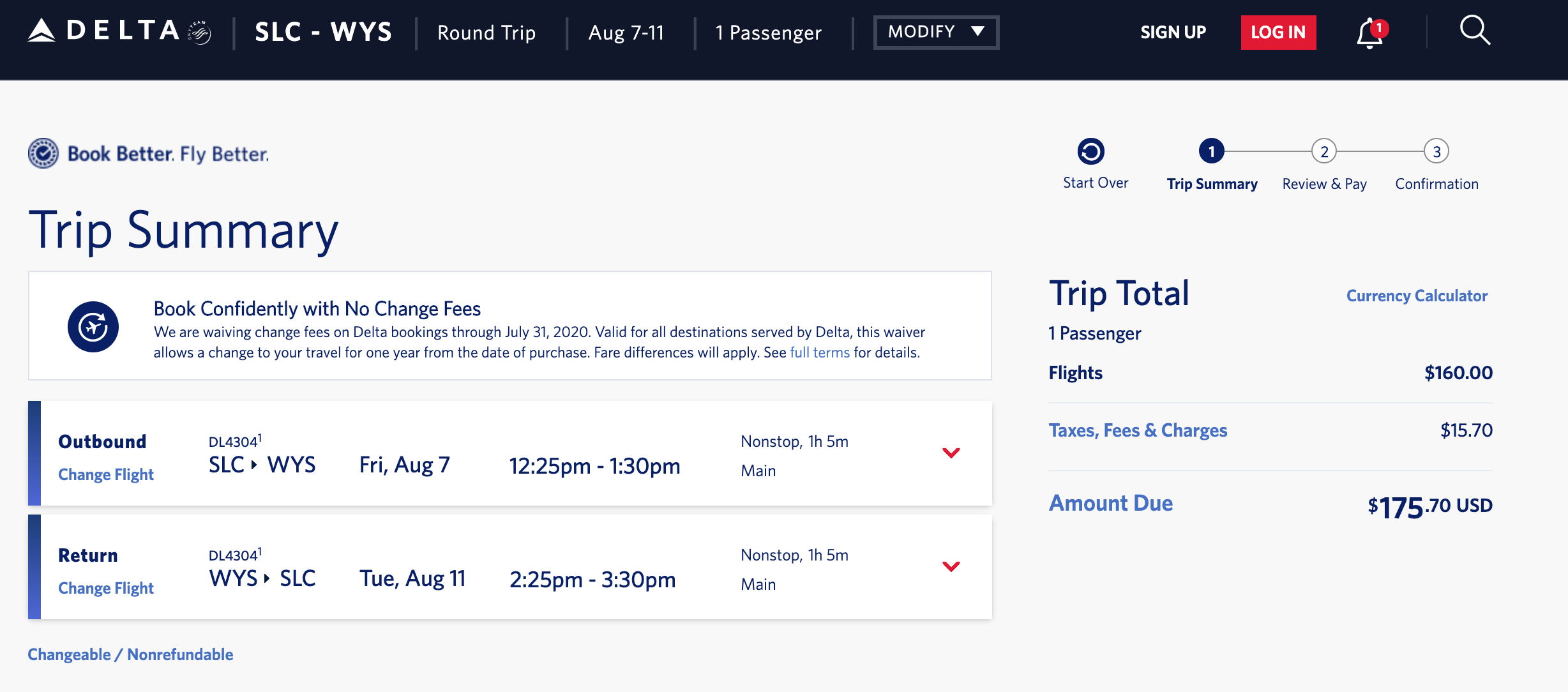
Where to eat in Yellowstone
Montana and Wyoming aren't exactly known as foodie paradise. There are plenty of cafes and restaurants, but haute cuisine isn't exactly a thing.
Personally, I recommend doing grocery runs and always keeping a picnic ready for those mountain meadows you stumble upon. Be sure to pack lots of snacks, as restaurants are typically only open in the high season and often have limited hours.
They are also few and far between, especially inside the borders of the park, and they're especially scarce in the age of coronavirus. In fact, most restaurants inside the park remain closed, and the few that are open are take-out only. Forewarned is forearmed.

Smith, the chiropractor from Butte, told me he really likes two places in West Yellowstone: the Slippery Otter Pub that serves bison and elk burgers, and The Branch Restaurant and Bar. Unfortunately, it was closed when I visited in early July (probably due to COVID-19). Hopefully, it will reopen next year.
One of the most important things to know about visiting the national parks right now is that most of the bathrooms I encountered in both Yellowstone and Glacier were closed due to the coronavirus outbreak. If you go, definitely have a plan for the call of nature. Folks driving motorhomes will be fine, but be sure to plot your visit and use bathrooms wherever you find them.
Getting around Yellowstone
I strongly recommend renting a car (or an RV!) for your trip to Yellowstone National Park. The park is really designed for drivers, with major roads taking you to most of the iconic attractions. Still, if you really want to explore, bring hiking boots. And don't forget to pack your bear spray. You can't fly with it, though, so buy bear spray after your flight.
If you'd rather not drive, seasoned park veterans take visitors on the famous Yellowstone Yellow Bus Tours . The vintage 1920s buses are an iconic part of the park's heritage. The long, yellow buses with rollback tops are perfect for gazing at the mountains without worrying about the notorious curves in the park's roads.
"These days, a fleet of eight vintage White Motor Co. buses ferry visitors on guided wildlife-watching tours, photo safaris, sunset tours and more," says operator Xanterra. "The distinctive antique yellow vehicles have retractable canvas roofs and panoramic windows, making them ideal for sightseeing. Plus, they're really cool to ride around in."
They also book up quickly, so you'll want to be aggressive with your planning. But, unfortunately, Yellow Bus tours are not running during the 2020 season due to coronavirus concerns.

You could also bike around the park, but there's not a lot of separated bike lanes. There are, however, a few trails specially designed for mountain biking. There's a complete guide to biking in Yellowstone here , but you can also rent bikes at Old Faithful Lodge.
Bottom line
Yellowstone National Park should be very high on your travel bucket list. It's a great time to go local and explore the nation's many national parks. Yellowstone is a personal favorite, and getting to see wolves and bears here was one of the highlights of my entire year.
If you're traveling to Montana, don't limit yourself to Yellowstone National Park, though. Across the state, there's Glacier National Park and countless sites that tell the incredibly important history of Native Americans in the United States. Big Sky, not far from Yellowstone, is also surging in popularity. It's a great spot for skiing in the winter.
I highly recommend a visit here this year, especially since travelers with a U.S. passport might find they can't venture too far from home. Just be sure to pack your masks and have a firm plan for where to stay — and use the bathroom — before you go.
Additional reporting by Meghan Hunter.
All photos by Clint Henderson/The Points Guy.
- skip to content
- skip to sitemap
- '' this park
- Find a Park
- Preservation
- Collections
- For Travelers
- For Teachers
- Publications
- Air Resources
- Biological Resources
- Climate Change
- Environmental Quality
- Geologic Resources
- Help Your Parks
- Inventory & Monitoring
- National Natural Landmarks
- Natural Sounds & Night Skies
- Partnerships
- Photos & Multimedia
- Science & Research
- Social Science
- Water Resources
- Do Your Part
- Tax Incentives
- National Register of Historic Places
- Outdoor Recreation
- National Historic Trails
- Field Trip Planning
- Traveling Trunks
- Materials to Loan
- Online Galleries
- Guest Speakers
- Distance Learning
- Professional Development
- Teacher-Ranger-Teacher Program
- Park Suggested Reading
- Environmental Education
- Reading List
- Institutes and Field Schools
- Junior Rangers
- Work With Us
- Jobs for Students
- Doing Business with Us
- Laws & Policies
Yellowstone
National park id,mt,wy, explore this park.
- Operating Hours & Seasons
- Current Conditions
- Fees & Reservations
- Accessibility
- Eating & Sleeping
- Things To Do
- Things To Know Before You Come
- Photos & Multimedia
- History & Culture
- Nature & Science
- Support Your Park
- View Park Map
Plan Your Visit
Did you know.
There are more people hurt by bison than by bears each year in Yellowstone. Park regulations state that visitors must stay at least 25 yards away from bison or elk and 100 yards away from bears.
Explore Nature
Discover history.
- About Our Programs
Get Involved
Working with communities.
- Frequently Asked Questions
- Website Policies
Last Updated: 08/26/2013
10 things you should know before visiting Yellowstone National Park

Jan 30, 2023 • 6 min read
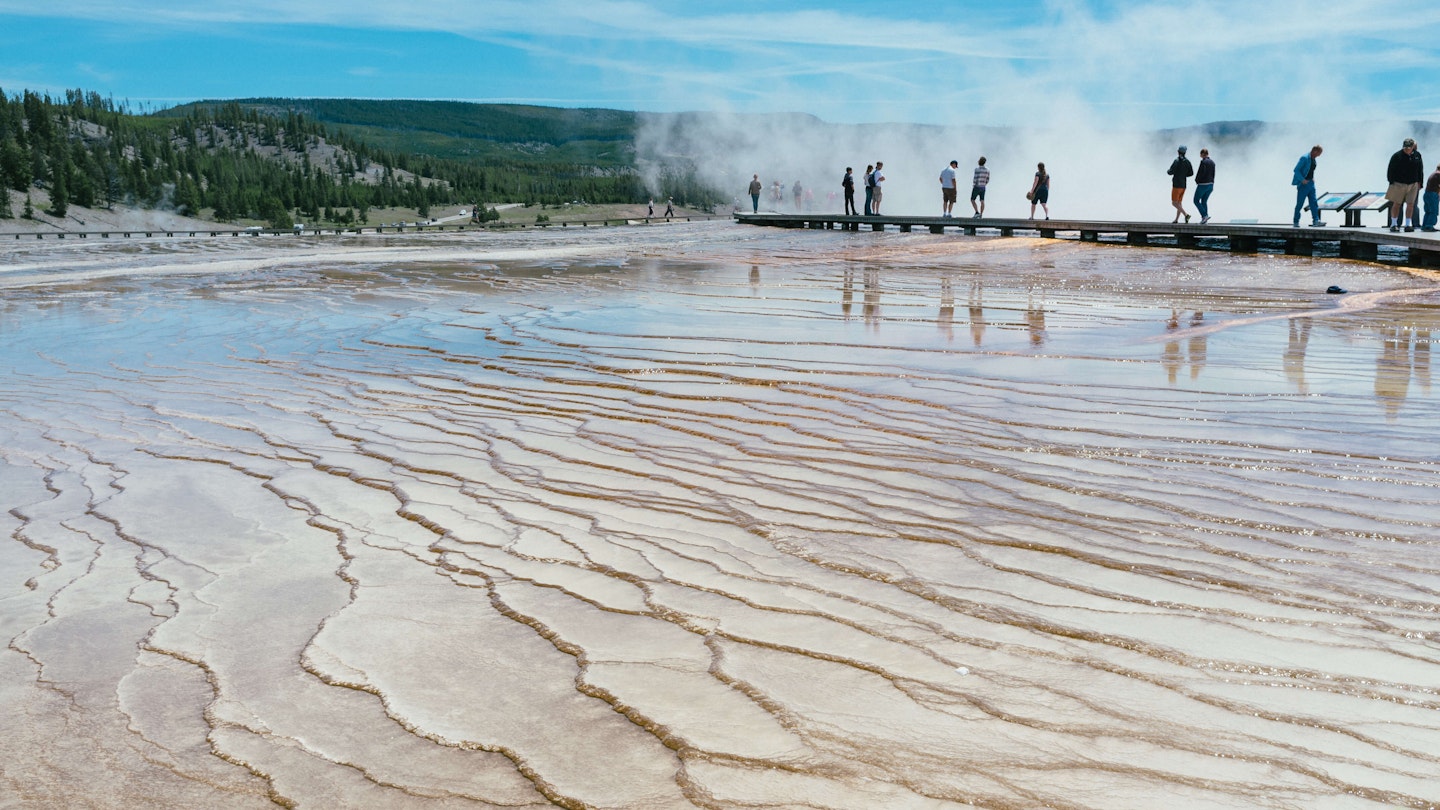
Most people see Yellowstone's Grand Prismatic Spring from the busy boardwalks of Midway Geyser Basin © Jonathan Percy / Shutterstock
After 15 years living in Yellowstone County, Montana , and authoring four editions of Lonely Planet’s guidebook to Yellowstone & Grand Teton National Parks , I’ve learned a trick or two about visiting Yellowstone.
From avoiding the summer crowds to staying safe in grizzly country, here’s what I wish I had known on my first visit to Yellowstone National Park .
1. Visit in shoulder season
More than 4 million people visit Yellowstone National Park every year, with almost 70% of visitors arriving in the three summer months of June, July and August. Campgrounds, trailheads, restaurants and roads are stuffed to capacity.
If your vacation dates allow, visit the park at the very beginning or end of the summer instead. September is a fabulous month for both good weather and lower crowds, especially after Labor Day, and this continues until mid-October. May is also good, especially in the northern half of the park and at lower elevations (high passes and some roads are still snow-covered in May).
Also remember that, unlike Yellowstone’s other entrances, the northern section of the park is accessible year-round via the Mammoth to Cooke City road, so you can explore it any time you want.
2. Book accommodation well in advance (even campsites)
If you do decide to visit during the mad months of July and August, you will need to book your park accommodation months in advance, even campsites. Since 2022 all of Yellowstone’s campgrounds are now reservable, whether they be the seven National Park Service (NPS) sites (bookable through Recreation.gov ) or the five sites run by Yellowstone National Park Lodges (YNPL). NPS-run sites take bookings six months in advance, whereas YNPL accepts them 13 months in advance.
A few NPS campsites are released just two weeks in advance, so all is not lost if you are gambling on a last-minute trip, though you will need to be flexible. A tip: Indian Creek campsite, south of Mammoth Junction, is normally the last of the park’s campsites to fill up. Without a reservation, you’ll have to camp outside the park, which will add to your daily driving time.
One important note is that flooding in June 2022 damaged Mammoth, Pebble Creek, Slough Creek, Tower Fall and Norris campgrounds, which were closed throughout 2022, so check with the park service for 2023 opening dates.
For hotels inside the park, you need to book up to a year in advance. The reception desk at any of the park’s accommodations can advise you of any last-minute room cancellations at any lodge inside the park.
3. Check that the roads are open
If you are visiting in April or May, be sure to check the road-opening schedule on the NPS website, as roads and accommodations in the southern half of the park open on a staggered schedule, ending with the road between Tower and Canyon junctions by Memorial Day. A couple of campgrounds here (Lewis Lake and Grant Village) don’t open until early June. Travel a park road that has only just opened and you’ll largely have that section of the park to yourself.
Road construction dates are also posted online, so check in advance to see if you need to budget some extra driving time. For example, the Yellowstone River bridge between Tower Junction and the Lamar Valley is under reconstruction from 2023, meaning traffic delays and the closure of the Yellowstone River picnic area.
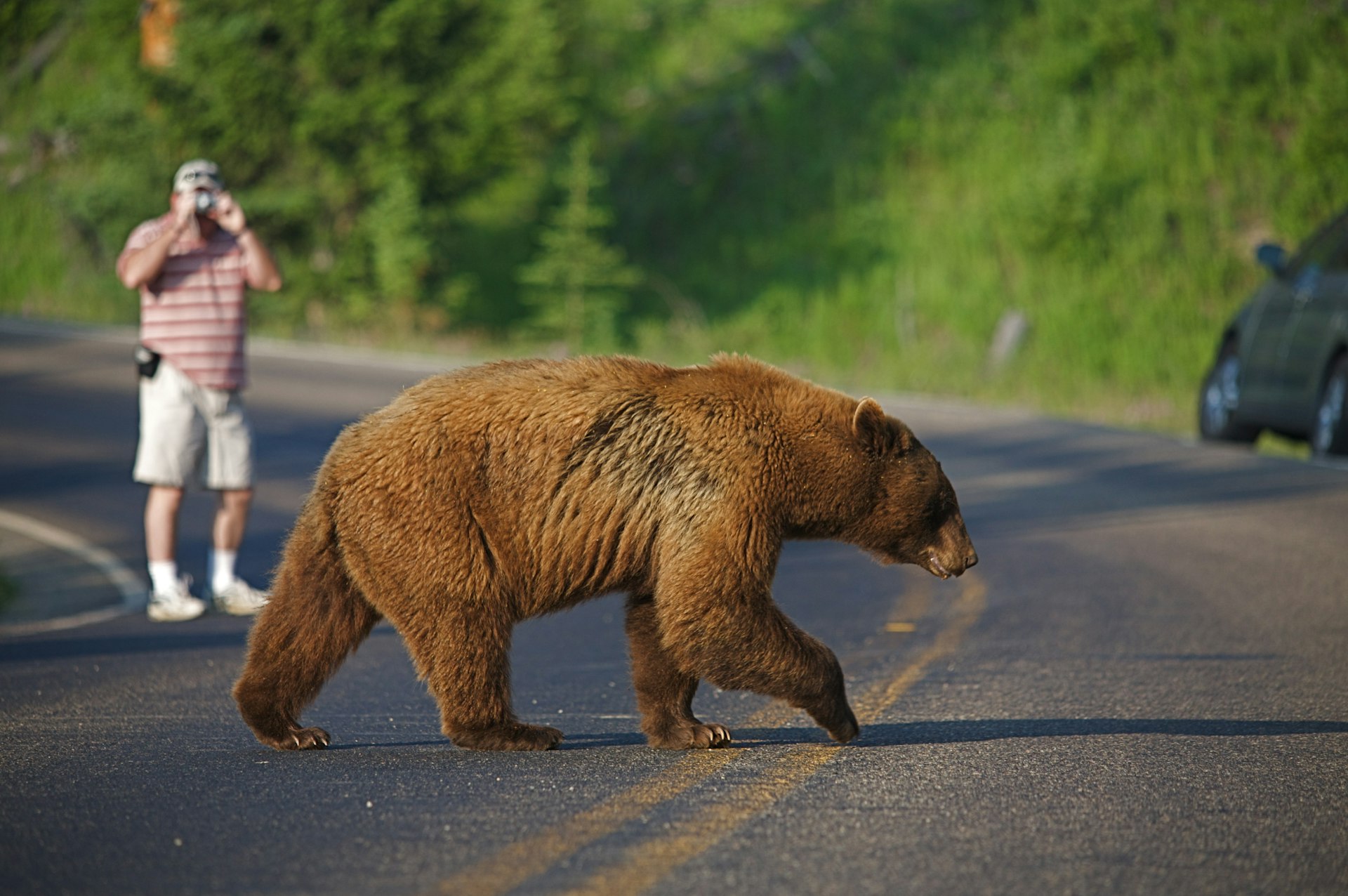
4. Keep your distance!
Yellowstone is an elemental, untamed place, not a petting zoo, and its wild nature demands respect . Every year tourists die in the park, due to everything from being attacked by a grizzly bear to falling into a boiling hot spring.
Your natural instinct for self-preservation should keep you the requisite 100 yards away from bears and wolves, but it’s also important to keep at least 25 yards from bison, elk and moose, especially if there are young around. Bison injure more park visitors than any other animal.
5. Carry bear spray
If you are hiking off the boardwalks into Yellowstone’s wild backcountry (something we strongly recommend), be sure to invest in a can of bear spray and know how to use it. Outdoor stores at regional and gateway towns (and inside the park, at a premium) sell spray and you can even rent it inside the park, so there’s no excuse not to take one. It could save your life, and the bear’s. And no, bear spray is not like mosquito repellent – you don’t spray it on yourself, but rather at an advancing bear.

6. Practice your Western pronunciation
To blend in with the locals, be sure to hone your best Montana/Wyoming pronunciation, particularly for words like creek (pronounced crick ) and coyote (normally KAI-ote, not kai-O-tee ). Pronounce Slough Creek as Slew Creek to gain kudos with the local fly fishers. Brits should be aware that geyser is pronounced guy-zer , not gee-zer (which is an elderly dude). And while we are on the subject, those are bison, not buffalo, grazing the Lamar Valley.
7. Be prepared for limited cell phone reception
Teenagers and digital junkies should be warned that Yellowstone has limited cell-phone service, mostly focused around the junction hubs of Mammoth, Canyon, Grant Village, Old Faithful and Lake Village. Wi-Fi is even patchier, with free Wi-Fi only available at Mammoth’s Albright Visitor Center. Don’t panic, you’ll survive.
If you simply can’t live without connectivity, you’ll have to drive to gateway towns, such as Gardiner and West Yellowstone, outside the park.
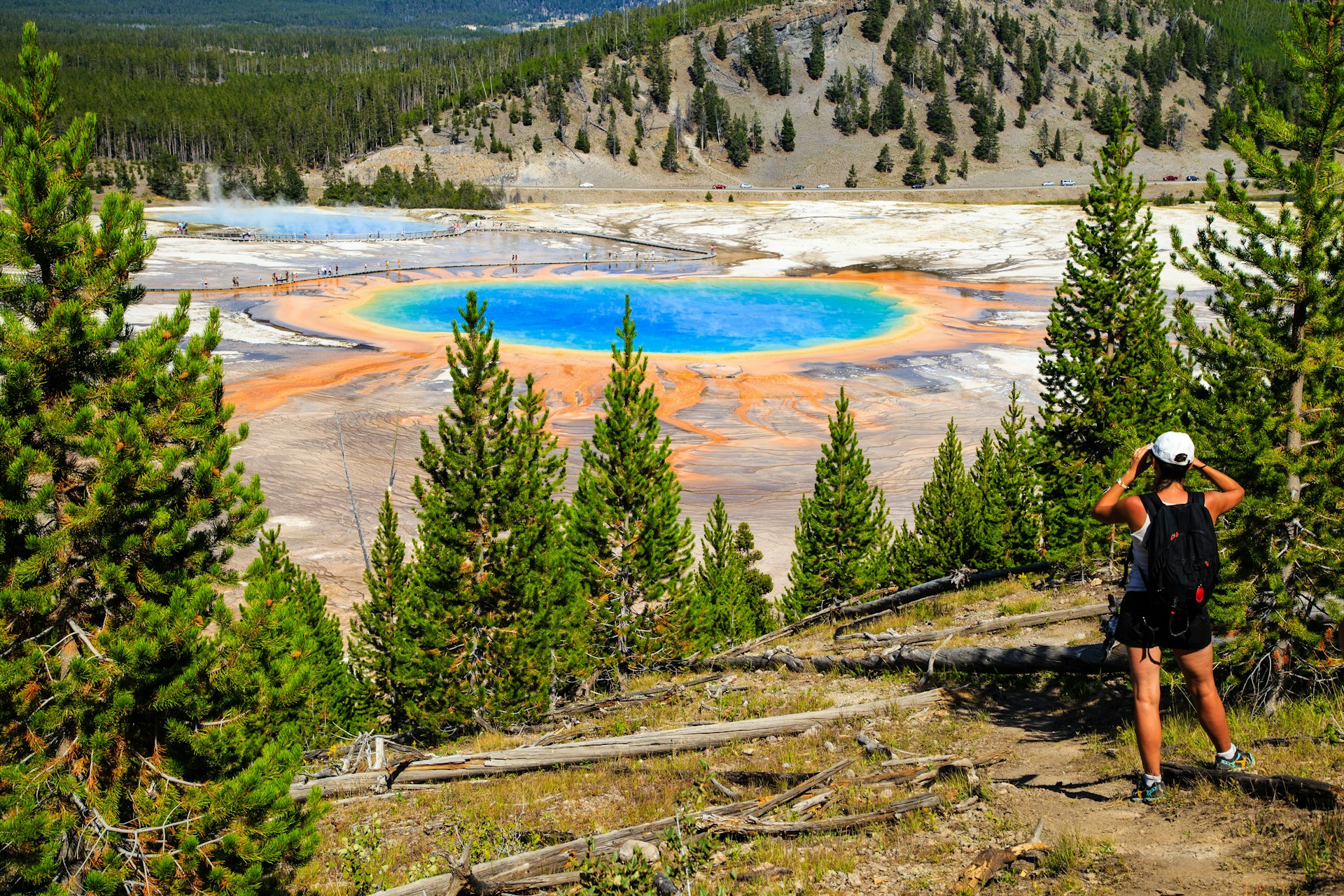
8. See the most popular sights from a different perspective
Many of Yellowstone’s most dramatic sights naturally attract big crowds and full parking lots, but you can often dodge these and snag your own private viewpoint by doing a bit of legwork.
Calcite Springs Overlook in the Tower-Roosevelt area, for example, is most commonly accessed via an often-full roadside parking lot, but it’s possible to hike an hour from the Yellowstone River Picnic Area, on the other side of the Yellowstone River, to enjoy the same views in RV-free serenity.
Grand Prismatic Spring is another spectacular sight, one which most people see from the busy boardwalks of Midway Geyser Basin. But you can score a much better view over the pool’s rainbow-colored rings by walking 0.6 miles south from the Fairy Falls trailhead to a magical, semi-secret overlook.
9. Make use of park intel to maximize your time
Inside the park, visitor information centers can be a mine of useful information for your trip. The Old Faithful visitor center , for one, lists the predicted eruption times for the basin’s most impressive geysers, which allows you to plan your time there to witness as many as possible.
Mammoth’s Albright Visitor Center in the north of the park details the locations of the latest wildlife sightings, which is particularly useful if you want to spot a bear or wolf pack. It’s all about maximizing your chances.
10. Read up on the park
The more you know about Yellowstone’s incredible geology and wildlife, the more astonishing it becomes. The park’s most popular hike , for example, leads to the top of Mt Washburn for epic views over the park, but it’s only when you realize that you're standing on the lip of a 30-mile wide super-volcano caldera (collapsed crater) that the true mind-blowing significance of what you're seeing sinks in. The more you learn about Yellowstone, the more you’ll want to return.
Explore related stories

Tips & Advice
Jan 17, 2024 • 8 min read
Maximizing American employer PTO is a complex calculus. Here's what days to take and where to go to make the trip of a lifetime a reality.

Dec 15, 2023 • 7 min read
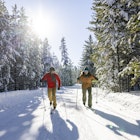
Sep 22, 2023 • 6 min read
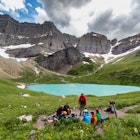
Sep 11, 2023 • 6 min read

May 10, 2023 • 11 min read

Feb 8, 2023 • 5 min read
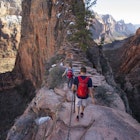
Jan 10, 2023 • 8 min read

Jun 19, 2022 • 8 min read

May 17, 2022 • 6 min read
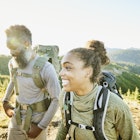
Jan 24, 2022 • 8 min read

Planning a Trip to Yellowstone
Welcome to the BEST guide for planning a trip to Yellowstone National Park ! I’ll show you how to make the most of your time here.
I’ve spent a lot of time in Yellowstone and planned over 100 trips for friends, family, and vacation coaching clients — it’s basically my backyard. From backpacking and camping to day trips to hotel and cabin stays in all seasons, I’ve experienced many ways to visit this park. I put this trip planner together to make it easier for YOU to travel to Yellowstone!
I’ve put everything in this comprehensive trip planner for Yellowstone National Park to help you navigate every aspect of your journey and ensure a memorable experience in Yellowstone.

Here are the things you will need to know for planning your trip to Yellowstone in the order you need to know them:
- Getting to and around Yellowstone (best airport and car options)
- Choosing when to visit
- Planning what to do
- Deciding where to stay
- How to make reservations
- What it costs to enter the park
- Visiting Yellowstone in spring, summer, fall, and winter
- Where to eat in the park
- Finding cell service and wifi in Yellowstone
- What kind of weather to expect
- What to pack for Yellowstone
- And everything else you need to know to plan your Yellowstone trip

Here’s a Table of Contents so you can jump around:
- 1 Planning A Trip to Yellowstone is More Than Must-Sees
- 2.1 Best Airport for Yellowstone
- 3 Do You Need a Car for Yellowstone?
- 4.1 STEP 1: Choose Your Dates and Check Flights
- 4.2 STEP 2: Create Your Yellowstone Itinerary
- 4.3 STEP 3: Decide Where to Stay in Yellowstone
- 4.4 STEP 4: Make Reservations
- 5.1 Best Time to Visit Yellowstone
- 5.2 Spring (April to June)
- 5.3 Summer (July to August):
- 5.4 Fall (September to October):
- 5.5 Winter (November to March):
- 5.6 General Tips for When to Visit:
- 6 Where to Eat in Yellowstone
- 7 Where to Get Fuel and Other Essentials
- 8 Visitor Centers and Museums
- 9.1 Cell Service in Yellowstone
- 9.2 WiFi in Yellowstone
- 10 Accessibility
- 11 Yellowstone National Park Roads
- 12 Yellowstone Weather
- 13 What to Pack for Yellowstone
- 14 FAQs About Planning a Yellowstone Trip
Planning A Trip to Yellowstone is More Than Must-Sees
Yellowstone boasts natural wonders like the iconic Old Faithful geyser, the Grand Canyon of the Yellowstone, and vibrant hot springs. You can explore diverse ecosystems and Yellowstone is home to a variety of wildlife, including bison, elk, and grizzly bears.
Beyond the boardwalks, this is a place where you can create lifelong memories with your family and friends. You can make time to connect with nature and each other.
Everyone should take at least one trip to Yellowstone in their lifetime (but I recommend more!). Are you ready to find out how to plan a trip to Yellowstone?
Getting To and Around Yellowstone

Best Airport for Yellowstone
For air travel, consider Bozeman Yellowstone International Airport (BZN), Jackson Hole Airport (JAC), or even Salt Lake City (SLC).
The Jackson Hole Airport is closest to Yellowstone, and they sometimes have the cheapest flights and rental cars, but since you will be entering the South Entrance, consider how far you will have to drive to get to your lodging once you are in the park. And it’s slow driving in Yellowstone!
Many people fly into Bozeman Yellowstone International Airport. It’s relatively close to both the North and West Entrances to Yellowstone. It’s the biggest and busiest airport in Montana and there are a lot of flights, especially in the summer. Plus, groceries and other necessities can be picked up in Bozeman and somewhat reasonable prices.
If you don’t mind driving, Salt Lake City Airport can be a good option as you can often find a good deal on tickets into Salt Lake.
- Distance from Bozeman Yellowstone Airport to West Entrance: 91 miles
- Distance from Bozeman Yellowstone Airport to North Entrance: 88 miles
- Distance from Jackson Hole Airport to West Entrance: 137 miles
- Distance from Jackson Hole Airport to South Entrance: 49.2 miles
- Distance from Salt Lake City Airport to West Entrance: 325 miles
- Distance from Salt Lake City Airport to South Entrance: 337 miles
Check on the best flight deals to Yellowstone here.

Do You Need a Car for Yellowstone?
In a word, yes. There is little to no public transportation for travel to Yellowstone National Park and none once you enter the park.
Unless you are on a bus tour, you will need a car to access the many, spread-out wonders.
Find the best deals on rental cars fo r Yellowstone here and book early as they have run out of cars for hire in the past.

How to Visit Yellowstone
There are a few options for planning a trip to Yellowstone.
I recommend that you first consider your priorities for the trip. Do you want to see all of the “main attractions?” Focus on seeing wildlife? Maybe hiking or photography is more your speed.
Most people want a little of everything on their first trip to Yellowstone.
But, please, don’t try to see it all, because you won’t be able to. Take that task off your shoulders and you will enjoy your trip so much more. I promise.

STEP 1: Choose Your Dates and Check Flights
You will probably need to visit Yellowstone whenever it fits in your schedule, but if you do have some flexibilty, consider what you want to do and look through the “Best Time to Visit Yellowstone” section below. Most people come in summer, but there are benefits to visiting in the other seasons, too.
This flight checker will help you find the best flights to Yellowstone.
STEP 2: Create Your Yellowstone Itinerary
Customize your itinerary based on your interests, whether it’s hiking, wildlife watching, or enjoying scenic drives. Check out my Things to Do posts and get an idea of what’s possible. Then piece together a trip that covers everything you want to do in Yellowstone.
Or choose one of the itineraries I’ve created. They have everything in there and all you have to do is follow along. See itineraries and hiking guides here .

STEP 3: Decide Where to Stay in Yellowstone
My Where To Stay posts outline the best lodging options in and near Yellowstone.
Because Yellowstone is such a big park, the speed limit is never higher than 45 mph, and you will most certainly get stuck in construction and more than one animal (or tourist) jam, I suggest staying in two locations . That can be Lake Hotel and West Yellowstone. Or Canyon and Mammoth. The goal is to minimize your driving by staying in disparate locations.

STEP 4: Make Reservations
Lock it down. This is important because lodging in the park fills up quickly. This includes campgrounds. See the Where To Stay posts for the earliest dates you can make hotel and campsite reservations in Yellowstone. If you plan to have dinner at any of the park hotel dining rooms, make those reservations, too.
Reserve your Wild West Dinner and horseback riding (See Things to Do posts ). Book your park tours. These are the experiences that fill up quickly.

Yellowstone Entrance Fees
Currently, reservations are not required to enter Yellowstone as there are other parks, including Glacier National Park . But you do need to pay an entrance fee.
Yellowstone National Park fees are :
- Private, non-commercial vehicle: $35
- Motorcycle or snowmobile: $30
- Individual (by foot, bicycle, ski, etc.): $20/person
Both types of passes are sold at all entrance stations and online.
We always get the America the Beautiful All Access Pass because it covers us for all National Parks for a year (you’ll need a separate entrance fee for Grand Teton National Park if you don’t have the America the Beautiful Pass).
Getting your pass ahead of time means you can show that to the ranger in the entrance kiosk and drive right in. Not having your pass ready is one of the 10 mistakes Yellowstone visitors make .
The U.S. Park Pass is $85 and can be purchased online or at any National Park entrance.
In this post, I break down how much a trip to Yellowstone costs .

Best Time to Visit Yellowstone
At the beginning of my post about family activities in Yellowstone , I talk about the best time to visit.
Yellowstone National Park offers a diverse experience throughout the year, each season presenting its own unique charms and challenges. The best time to visit depends on your preferences and the type of experience you’re seeking.
Here’s a breakdown of what each season offers:
Spring (April to June)
Wildlife and Blooms: Spring is a fantastic time for wildlife viewing. Bears, bison, and elk are active, and the landscape comes alive with blooming wildflowers. This is also a good time to bike on the interior roads before they open to general traffic. Here’s everything you need to know about biking in Yellowstone .
- Fewer Crowds: While early spring can still be quieter, late spring sees an increase in visitors. However, it generally remains less crowded compared to the peak summer months.
- Weather: Expect varying temperatures. Snow can linger in higher elevations, and weather can be unpredictable, ranging from cool to mild.
- Facilities: Many hotels, restaurants, and shops within the park don’t open until sometime in May, so plan to be self-sufficient. Additionally, interior roads don’t open to general traffic until the end of April or later, depending on the weather. Find Yellowstone road opening and closing dates on the park website .
Summer (July to August):
- Wildlife and Active Nature: Summer is peak tourist season, offering long days and a bustling atmosphere. Wildlife is still active, and the park’s vibrant greenery is on full display.
- All Roads and Facilities Open: During summer, all roads, services, and facilities are typically open, providing full access to the park’s attractions.
- Crowds: Yellowstone can be crowded during summer, especially around popular attractions. Planning ahead and arriving early at key sites can help avoid some congestion.
- Weather: Daytime temperatures are generally mild to warm, but evenings can still be cool. Be prepared for varying conditions.
Fall (September to October):
- Colorful Landscapes: Fall is a photographer’s delight with vibrant foliage, especially in late September. The changing colors create a stunning backdrop for wildlife viewing.
- Reduced Crowds: As summer visitors dwindle, fall offers a quieter experience with reduced crowds.
- Weather: Days can still be pleasant, but nights are cooler. Be prepared for temperature fluctuations.

Winter (November to March):
- Unique Winter Wonderland: Winter in Yellowstone transforms the park into a serene and magical wonderland. Pristine snow blankets the landscape, and geothermal features create mesmerizing contrasts.
- Wildlife and Solitude: While some animals migrate or hibernate, winter is an excellent time for observing wolves and other cold-adapted species. The park is quieter, providing a more solitary experience.
- Limited Accessibility: Some roads and services are closed, but winter activities like snowshoeing and cross-country skiing become available.
- Cold Temperatures: Winter temperatures can be extremely cold, so dressing in layers is essential.
General Tips for When to Visit:
- Check Opening Dates: Services and facilities may vary depending on the season, so check the official park website for opening dates and conditions.
- Make Reservations: Especially during peak seasons, consider making reservations for accommodations and activities in advance.

Where to Eat in Yellowstone
There are a variety of dining options, from casual cafes to fine dining establishments, within Yellowstone. Each village has a grill or casual restaurant, a dining room, and a general store. If you plan to eat dinner in one of the dining rooms, it’s best to make a reservation.
We prefer to shop for picnic supplies outside the park, so we can use our time exploring. There are picnic areas throughout the park, so can stop whenever you get hungry.
There are many more restaurants and markets available outside the park boundaries, especially in West Yellowstone, Gardiner, and Cody. Don’t miss the best breakfast in West Yellowstone .

Where to Get Fuel and Other Essentials
Yellowstone Park Service Stations, Inc. operates seven convenience store/fuel facilities and four automotive repair shops in Yellowstone National Park. They all have credit card-operated pumps which are available 24 hours a day.
The gas station in Yellowstone can be found at:
- Old Faithful
- Grant Village
- Fishing Bridge
- Tower/Roosevelt Junction
- Mammoth Hot Springs
Of course, there are gas stations in every gateway town and they are likely to be less expensive than park gas stations.
Free Public EV charging stations are available in several park locations. The stations are Level 2 and provide 208/240 volt electric service. Charging takes about 4 hours from empty to full.
- Yellowstone Forever , Gardiner, Montana
- Mammoth Hot Springs : In front of the Haynes Photo Shop; and behind the Northwest corner of the Mammoth Hotel.
- Old Faithful: At the Old Faithful Lodge Cabins (Lower Loop), outside of Showerhouse 1.
- Canyon Village: In front of both Rhyolite and Washburn lodges.
- Lake Village: In front of Teal employee dorm.
- West Entrance/ West Yellowstone MT: The Gray Wolf Inn and Suites and the Holiday Inn. Tesla stations are also located in West Yellowstone.

Visitor Centers and Museums
Immerse yourself in the park’s history, geology, and ecosystems by visiting its informative visitor centers and museums. You can read all about Yellowstone Visitor Centers in this post .

Cell Service and Wifi in Yellowstone
Cell service in yellowstone.
Cell service is available in all of the villages or developed areas and in random spots in between, but don’t depend on using it. Download maps and anything else you want to use offline.
Check with your provider to verify coverage. During summer the number of users can overwhelm cellular circuits resulting in an inability to send or receive calls, text, or use cellular data. Texting is usually the most effective means of communication in the park, but it doesn’t work everywhere.
Even outside the park, cell service is spotty. It’s great in towns — Gardiner, West Yellowstone, Cody — but unavailable between towns and the park in some places. For instance, there isn’t cell service during most of the trip from the Bozeman Yellowstone Airport to West Yellowstone.
There is no cell service in Silver Gate or Cooke City.
WiFi in Yellowstone
Free WiFi is available at the Albright Visitor Center in Mammoth Hot Springs.
Wireless Internet access is available at some of the hotels and lodges around the park for registered guests of Yellowstone National Park Lodges.
If you need to count on WiFi for work or other reasons, I recommend staying outside the park in one of the gateway towns.

Accessibility
Unfortunately, Yellowstone has a way to go on accessibility, but they are working on it.
According to the Park Service , “Many facilities are more than a century old and accessibility is not always ideal. Through an on-going self-assessment and transition plan, Yellowstone National Park is identifying and eliminating barriers to accessibility in its facilities, programs, and services. Extra obstacles will be encountered because of the remote, wilderness nature of this special place. Facilities described as accessible do not necessarily comply fully with federal standards and some accessible facilities are not marked with the international symbol.”
The o fficial NPS app has accessibility information as does their website .

Yellowstone National Park Roads
The only road open year-round (unless it temporarily closes due to weather) is from the North Entrance in Gardiner, Montana to outside the Northeast Entrance and Cooke City, Montana.
Most park roads are closed to regular vehicles from early November to late April and are open to limited oversnow travel (snowmobiles and snowcoaches) from mid-December to mid-March.
When open, roads are not gated at night and you may enter/exit the park 24 hours a day, seven days a week.
Yellowstone has five entrance stations, and it takes several hours to drive between them.
Every year there is road construction on at least one section of Yellowstone’s roads.
Check road conditions on the Park Service site .

Yellowstone Weather
The weather in Yellowstone National Park is characterized by its variability, influenced by the park’s high elevation and diverse geography. In other words, plan for all weather, regardless of when you visit.
- Summer , from June to August, bring mild to warm temperatures, with daytime highs ranging from 60 to 80 degrees Fahrenheit (15 to 27 degrees Celsius). However, evenings can still be cool.
- Fall , from September to October, sees a gradual decline in temperatures, ranging from 30 to 60 degrees Fahrenheit (minus 1 to 15 degrees Celsius).
- Winter , from November to March, transforms Yellowstone into a winter wonderland, with temperatures often dropping below freezing. Expect snow-covered landscapes and sub-zero temperatures, ranging from 0 to 20 degrees Fahrenheit (minus 18 to minus 6 degrees Celsius).
- Spring, from April to June, marks the transition to warmer weather, though snow may persist in higher elevations. Temperature variations and occasional rain or snow showers make packing versatile clothing essential for any Yellowstone visit.
Always check the forecast and be prepared for changing weather conditions year-round.

What to Pack for Yellowstone
What you pack depends on what you are doing, of course. You will need different items if you are camping vs. staying in a hotel vs. driving an RV. Don’t worry, I’ve got you covered with these two packing lists.
- Summer National Park Packing List
- Winter National Park Packing List

FAQs About Planning a Yellowstone Trip
Does Yellowstone Require a Reservation?
Reservations are not required in Yellowstone National Park, though an entrance fee is.
How Much Time Do You Need in Yellowstone National Park?
A minimum of three to four days is recommended to explore the park’s main attractions thoroughly. However, more time allows for a more leisurely and immersive experience.
Do You Need a Car in Yellowstone?
Yes, having a car provides the flexibility to explore the park at your own pace. There is no public transportation within the park other than guided tours.
Do You Need a Tour Guide for Yellowstone?
You do not need a tour guide, but a guided tour can enhance your experience by providing insights and information about the park’s features and wildlife. Self-guided exploration is also popular.
What Is the Best Way to See Yellowstone National Park?
The best way to experience Yellowstone is a combination of driving and exploring on foot. Scenic drives offer stunning views, while hiking trails provide a closer look at the park’s unique features. Don’t forget your bear spray.
What’s the Best Airport for Yellowstone?
Bozeman Yellowstone International Airport (BZN) and Jackson Hole Airport (JAC) are common choices. Choose based on your travel preferences and available routes.
Is Yellowstone Open in Winter?
Yes, Yellowstone remains open in winter, offering a unique and tranquil experience. However, some roads and facilities may be closed or limited.
How Many Days Do You Need to Visit Yellowstone National Park?
A minimum of three to four days is recommended for a comprehensive visit. However, a week or more allows for a deeper exploration of the park’s vast offerings.
What Is the Average Cost of a Vacation to Yellowstone?
Costs vary based on accommodation, dining, and activities. On average, a moderate budget for accommodation, meals, and entrance fees ranges from $150 to $300 per person per day.
What Is the Best Month to Visit Yellowstone?
Late spring through early fall (May to September) is the most popular time, with pleasant weather and wildlife activity. However, each season offers a unique experience. Winter (December to February) is ideal for snow enthusiasts and more solitude.
Is It Better to Stay Inside Yellowstone or Outside?
Staying inside the park provides a more immersive experience, especially if you want to capture sunrise or sunset views. However, nearby gateway towns offer lodging options and may be more convenient for some travelers.
Yellowstone is my backyard! I’ve guided, explored, and written about Yellowstone for nearly three decades. If you want to plan a Yellowstone area vacation but need suggestions and recommendations from someone who lives here, works here, and has an insider’s perspective to Yellowstone, you’ve come to the right place. Click HERE to get my newsletter!
Recent Posts
Best Places to Stay Near Glacier National Park
30+ Yellowstone Summer Activities
How to Spend Christmas in Yellowstone (And Other Winter Holidays)
Where to Stay in Yellowstone (Inside the Park) 2024
Best Places To Stay Near Yellowstone National Park (2024)
- Featured Posts (6)
- Guide Companies (3)
- Itineraries (3)
- Local Tips (8)
- Must See (8)
- Near Yellowstone (9)
- Road Trips (3)
- What To Pack (4)
- Best Yellowstone Activities (16)
- Family Vacation (17)
- Geysers (8)
- Greater Yellowstone Area (11)
- Hiking (21)
- Horseback Riding (6)
- Restaurants (2)
- Wildlife Viewing (11)
- Winter (13)
- Camping (2)
- Essential Lodging Info (7)
- Glamping (1)
- Work With Me
Home » Blog » Ultimate Yellowstone National Park Guide and Itinerary
Ultimate Yellowstone National Park Guide and Itinerary
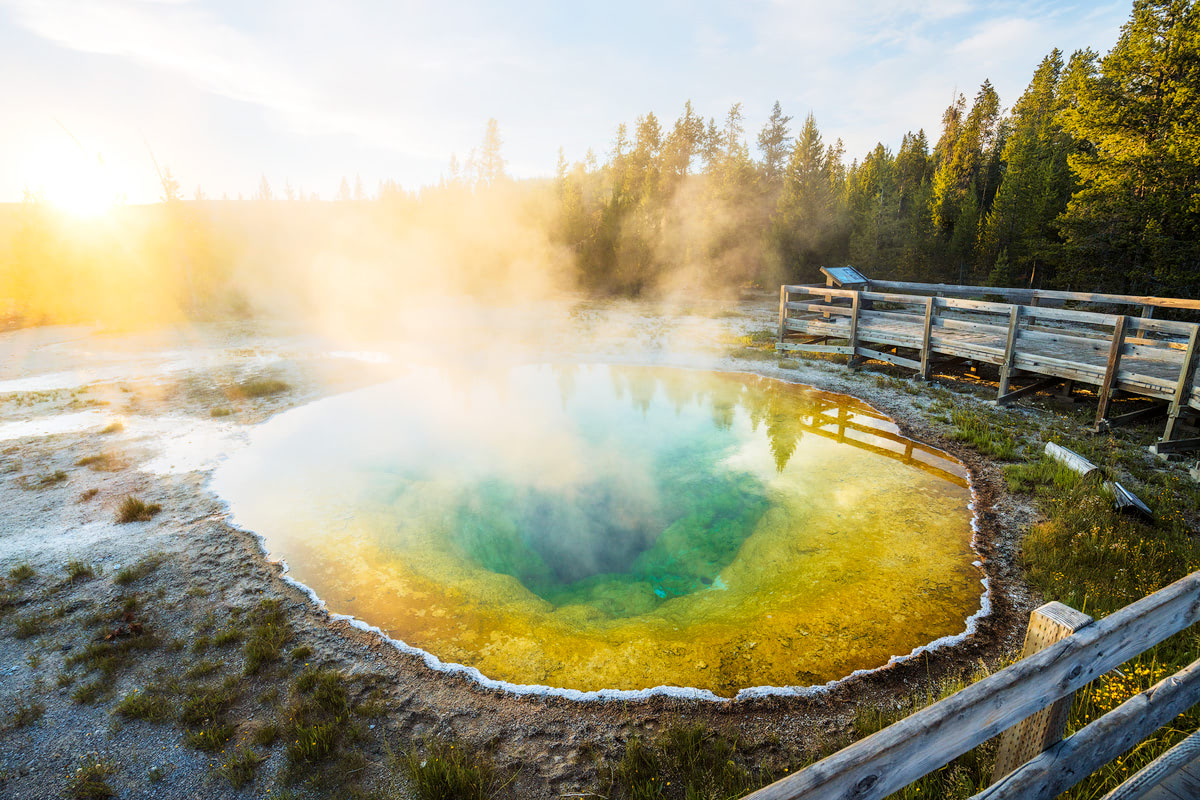
Yellowstone National Park is world-renowned for its epic landscapes, unique wildlife, and fascinating natural history. Each year millions of people come from all over the globe to witness Yellowstone’s wonders, and for some, it has been a lifetime dream. In this blog post, I am sharing everything you need to know to plan your own trip to Yellowstone National Park, including all the best things to see and do!
If you’re new to my blog you may not know that I visited all the US national parks in 2017 , so this guide truly comes from firsthand experience. To date I have visited Yellowstone National Park five times, and I plan to visit many more times in the future!
Disclaimer : This blog post may feature some affiliate links, which means I get a small commission if you make a purchase (at no extra cost to you). It’s one of the ways I can keep producing free guides and resources for my readers. Learn more about my affiliate policy here . Thank you for the support!
Yellowstone National Park Guide
Yellowstone National Park has a rich history. It was established as a national park by US congress in 1872 , and signed into law by president Ulysses S Grant. This was the first national park in the entire world, and paved the way for the protection of future national parks all over the globe.
Today, Yellowstone remains as probably the most well-known of the US national parks, and in recent times has opened its gates to roughly 4 million people each year . It sits in the north-western portion of Wyoming, but a small part of the park extends into both Idaho and Montana. Within the boundaries of the park also happens to be the Yellowstone Caldera , a 34 x 45 mile super volcano within the national park. With this comes extreme volcanic and seismic activity, the reason for its thousands of geothermal features, geysers, and springs.
Taking a road trip to Yellowstone is a dream for a lot of Americans, and it’s also a huge draw for visitors from all around the globe. Thankfully it is quite easy to get around Yellowstone, and can be rather affordable if you are willing to camp or plan ahead. In this guide I will go over everything you need to know , including how to get there, where to stay, the best things to do, photography tips, and more! I hope this is able to make your Yellowstone adventure the best it could possibly be.
When to visit Yellowstone
Yellowstone is technically open year-round , but there are a lot of closures during the winter period in the park from October till May. The most popular times to visit are June through August, but personally my favorite months in the park are May, September, and early October when the crowds are smaller and it should be free of snow. You can still visit Yellowstone during the winter , but personal vehicles will be limited to the road between Gardiner (MT) and Cooke City (MT), the only part of the park where the road is open and maintained in winter. To reach the other parts of the park you will need to have a means of cross-snow travel such as a snowmobile, or take a tour through the park on one of the snow-cats. Be sure to check out the park’s website to research road closures before visiting as dates change every season depending on the weather.
How to get to Yellowstone National Park
The Yellowstone region is in a pretty remote area of the country, located almost 5 hours from the nearest major city (Salt Lake City). There are a number of ways for guests to access the park , and I will go into detail about some of them below.
Arrive by car
Yellowstone has five entrance stations that are each located in different sections of the park. Where you are driving from previously will determine which of these you will want to enter. The most popular entrance is West Yellowstone as it is the quickest entrance to reach from Salt Lake City (4.5-5 hour drive). Salt Lake City is the nearest major city from which you can fly into and drive from. Another popular way to enter the park is the south entrance station, being just a short drive from Grand Teton National Park and Jackson Hole Airport.
Use Skyscanner to find the best flight deals and for car rentals compare using Kayak across multiple rental agencies.
Arrive by plane
While you cannot fly directly into Yellowstone National Park, you can fly into one of a few nearby towns . The closest of which is West Yellowstone, only a short 5 minute drive from the West Yellowstone entrance. Bozeman (MT) and Jackson Hole (WY) are a couple of alternate options, both being less than a 1.5 hour drive from Yellowstone entrances.
Arrive on a tour
There are a variety of options if you would prefer to visit the park on a guided tour . The advantage of this is that the logistics are all sorted for you! Here are some amazing tour options:
- 4 Day Yellowstone and Grand Teton Nature Tour
- Private 2-Day Tour of Yellowstone National Park
- Yellowstone National Park – Full-Day Lower Loop Tour
- Yellowstone Private Fishing Trip
- Yellowstone Lake Guided Sea Kayak Tour
Where to stay
Guests have a range of options for accommodation during their visit to Yellowstone National Park. You will have the choice to stay in Anything from camping in a tent to a stay at the historic Old Faithful Inn,
Yellowstone hotels
- Old Faithful Inn : historic lodge located in the most popular part of the park. Walking distance to Old Faithful Geyser, as well as many others on the Upper Geyser Basin Loop. Also features a beautiful dining hall, cafeteria, gift shop, and coffee cart. Lodge rooms and suites available.
- Mammoth Hot Springs Hotel and Cabins : famous hotel located near the Mammoth Hot Springs. Options for hotel rooms, suites, or cabins. Walking distance to Mammoth Hot Springs area and nearby dining hall, general store, and gift shop. One of two accommodations open in the winter, and the only accessible by car in winter.
- Canyon Lodge & Cabins : Largest hotel in the park, featuring more than 500 rooms, restaurants, and a gift shop. Options for cabins, suites or standard lodge rooms.
- Old Faithful Snow Lodge & Cabins : beautifully located right next to the Old Faithful Geyser. One of only two accommodation options in the park in winter, and only accessible by snow cat in winter. Has a dining room, grill, and gift shop. Other options include Lodge Lake Cabins , Old Faithful Lodge and Cabins , Lake Yellowstone Hotel , Roosevelt Lodge and Grant Village .
Yellowstone camping
- Twelve campgrounds located in the park. Five can be reserved through here (options to tent camp or stay in a camper van/RV), rest are first-come, first-served.
- Nearby dispersed camping can be found through freecampsites.net , Campendium , and iOverlander
- Alternatively use The Dyrt to find your campsite, use my code reneeroaming for a free 30 day trial.
Stay outside of the park
There are a range of options outside the park , but the closest are in the towns of West Yellowstone (MT), Cooke City (MT), and Gardiner (MT). Here are a few of my recommendations:
- Crosswinds Inn : comfortable and affordable hotel that is walking distance from West Yellowstone restaurants, and a 3 minute drive from the west entrance station.
- Under Canvas Yellowstone : try out glamping and be located just 10 minutes from Yellowstone’s west entrance.
- Travelodge by Wyndham Gardiner : affordable accommodation just a few miles from the north entrance station.
- Alpine Motel of Cooke Cit y : basic accommodation in the heart of beautiful Cooke City. Great base for wildlife viewing at the Lamar Valley.
Nearby vacation rentals
Below are some suggested vacation rentals close to Yellowstone National Park, including near the west, north and east entrances:
- Trapper Cabin : adorable cabin in West Yellowstone with covered porch.
- Kozy Cabin : larger cabin option also in West Yellowstone with views over Denny’s Creek
- The F ishing Shack : located on the Madison River this spacious cabin sleeps up to 8 people and is in beautiful peaceful setting
- Denny Creek Cabin : basic newly built cabin in West Yellowstone with gorgeous wooden rustic beds
- Yellowstone Beauty Loft House : as the name suggests this beautiful loft house is an amazing place to stay in Gardiner
- Rigler’s River Rest : Riverside cabin with beautiful deck and firepit for cosy evenings near North Yellowstone entrance
- Riverfront Cabin : Spacious cabin with incredible views to the north entrance
- Carbella Cabin : Beautiful A-Frame cabin with huge windows and wonderful views across the park.
Best things to do in Yellowstone National Park
Yellowstone National Park is a huge park, with so many stops along the way to keep visitors busy. As such, below you will find each area broken down into it’s own section along with my top recommendations.
Old Faithful / Upper Geyser Basin
Upper Geyser Basin is the busiest area of the park, and for good reason! Here there is ample parking, a gas station, lodging, a variety of food options, and access to many hiking trails. It is also home to the famous Old Faithful Geyser , which was first discovered in 1872 and named for its long history of predictable eruptions. This is one of the biggest tourist attractions in the park, and can get very busy. I recommend visiting it in the early morning or later in the evening when it will be a little quieter. You can see the estimated time of the next eruption on the board at the nearby visitor center..
This area is also home to the most densely populated geyser basin in the world, the Upper Geyser Basin. It can be seen via an easy 3 mile loop , and is one of my absolute favorite things to do in Yellowstone National Park. It’s hard to go wrong on any of the hikes in this area (they’re all spectacular!) but you can join a guided hike if you want to get a little more local knowledge while you explore.
Many of these geysers along this walk go off at regular, predictable intervals, so be sure to check in at the Old Faithful Visitor Center before beginning your hike to help you plan when to see the eruptions. Some of the must see stops are Castle Geyser, Riverside Geyser, Grotto Geyser, and Morning Glory Pool. Beehive Geyser is incredible if you can catch it going off!
While you are in the area, I also suggest you going inside the Old Faithful Inn , even if you are not staying there.
Built in 1903 using local wood and stone, this is considered the largest log construction in the world and is absolutely stunning. The dining hall food is also quite delicious if you’re feeling hungry! If you are after something a little faster and cheaper, the Old Faithful Lodge Cafeteria on the other side of Old Faithful geyser has some great options.
Biscuit Basin
Just north of the Old Faithful is another beautiful part of the Upper Geyser Basin, Biscuit Basin . The best way to explore Biscuit Basin is via its short loop trail (0.65 miles). Along the way you will see geysers and colorful hot pools, including Black Opal Pool, Jewel Geyser, Sapphire Pool, Shell Spring, Mustard Spring, Avoca Spring, and Black Pearl Geyser.
Grand Prismatic Spring
The Grand Prismatic Spring is possibly the most recognizable feature in all of Yellowstone. Due to its popularity, I recommend getting here early in the morning or later in the afternoon so it’s a little quieter in terms of crowds. If you don’t want to plan all your stops yourself, consider taking a guided tour! This full-day tour includes Grand Prismatic as one of the highlighted stops.
There are two ways to see the spring. The first way is to park at the Grand Prismatic Spring Parking Lot and take a short boardwalk loop trail that goes right by the spring. This is beautiful, but if you will also want to see that famous postcard viewpoint from. To do this you will need to park at the Fairy Falls Trail Parking Lot and hike a short 1 mile round-trip trail to the overlook . Be aware there is a short but relatively steep uphill section, so those with difficulties walking may want to stick to the boardwalk mentioned previously.
Norris Geyser Basin
The Norris Geyser Basin is one of the most impressive geyser viewing areas of the park. It is home to the hottest and oldest of the geysers in the park, with some thermal features in the area dating back at least 115,000 years. It is also the home of Steamboat Geyser , the tallest geyser in the world, which can erupt up to 400 (120m) feet high! Unfortunately Steamboat’s eruptions are not on a predictable schedule, but you might just get lucky! There are two sections to explore in the Norris Geyser Basin, one being the Porcelain Basin (3/4 mile, 1.2km), and the other being the Back Basin (1.5 miles, 2.4km). I recommend checking both out as they are relatively short walks and both have some really unique features worth seeing. If you only have time for one, Porcelain Basin would be my pick.
Mammoth Hot Springs
The travertine terraces of Mammoth Hot Springs are a unique and beautiful sight within Yellowstone National Park. The soft, earthy tones here and so pleasing to the eye, and there are some really amazing textures throughout the landscape which are always really cool to see. The area has a few different parking lots that you can use to park for exploring these terraces, just pick one that has space and walk as far as you like. There’s a nice boardwalk that takes you from the parking lots to all of the features, but do be aware there are quite a few stairs. Mammoth Hot Springs is a popular stop on any visit to Yellowstone, so you can always explore this area with the help of a tour. This 2-day guided exploration of Yellowstone and this 4-day tour both include stops to explore here.
If you’re a history buff, you can also check out the historic Fort Yellowstone . In the early days of the national park US soldiers were sent into Yellowstone by the Secretary of Interior after issues with poaching, vandalism, etc. Their living quarters remain to this day and tours are available through the park. In this area is also the Mammoth Hot Springs Hotel , as well as a gas station, public restrooms, cafeteria, dining hall, gift shop, and general store.
Lamar Valley
America’s Serengeti – this is a name often used to describe Lamar Valley . This is probably my favorite part of the whole national park, and one that I spend a lot of time in with each visit. The Lamar Valley is a large river valley surrounded by mountains and filled to the brim with wildlife. It is home to the famous Junction Butte and Lamar Canyon wolf packs , as well as huge herds of bison, pronghorn, grizzly bears, badgers, bald eagles, and more. What I love about the Lamar Valley is that you are always bound to see something exciting. Whether it’s being held up by a large herd of bison crossing the road , a lucky encounter with one of the wolf packs, or getting to see a grizzly bear cross the Lamar River, I’ve always been left in awe by this place. Your best chance at these special sightings is getting there very early in the morning , or staying out close to sunset as the animals are more active during these times. Remember to bring binoculars! IT is also a really fun experience to visit Lamar Valley with a naturalist guide. You can book a tour that will provide all the scopes and binoculars you need, too.
There are no hotels in the Lamar Valley, but there are a couple of small primitive campgrounds (Slough Creek and Pebble Creek). These are first-come first-served, and are definitely hard to secure with their limited availability, so plan to get there very early if you want to snag a site. Another option is to stay in nearby Cooke City . One of my favorite things to do in Yellowstone is to head to the Lamar Valley in the late afternoon , drive up and down watching wildlife until sunset, and then finish up the day by driving north-east out of the park to Cooke City (MT) and getting a delicious pizza at the Miner’s Saloon … SO GOOD!
Grand Canyon of the Yellowstone
The Grand Canyon of the Yellowstone is one of the most dramatic views in Yellowstone National Park. I remember the first time I saw it I was blown away. The powerful Lower Falls drop into a gigantic canyon, which is accented by steaming thermal features and colorful walls.
Yellowstone’s Grand Canyon can be viewed from many viewpoints, but the classic view is from Artist Point . Another of my favorite viewpoints is from Uncle Tom’s Point which requires you to walk down 328 stairs down (and subsequentially back up) and 500 feet of elevation to the overlook. The payout is a really close view of the impressive lower falls, and on a sunny day, you will probably even get a beautiful rainbow! This is one of the highlighted stops on one of my most recommended guided full-day West Yellowstone tours .
West Thumb Geyser Basin
West Thumb Geyser Basin is the first large geyser basin that visitors coming up from the south will encounter. Although in my opinion there are more impressive geyser basins in other areas of the park, West Thumb is unique in that it sits right next to the gigantic Yellowstone Lake which provides some pretty epic views. The two most beautiful and impressive features in West Thumb Geyser Basin are the Abyss Pool , Black Pool , Collapsing Pool , and Fishing Cone , so make sure to check these out!
Fun fact – Fishing Cone was named in the old days when visitors would catch a fish from the lake, then cook it while still on the hook over the geyser. This is now prohibited and actually has been found to be unhealthy, so please don’t try to replicate this haha.
Hiking trails in Yellowstone
Yellowstone, although a very beautiful national park, is not one that’s famous for its hiking trails. Due to the geothermal activity in the area and abundance of wildlife, trails are kept to a minimum in the park. In saying that, there are still some really great options for those wanting to get out and move their legs. Here are a few hiking trails I recommend:
Dunraven Pass to Mount Washburn
Dunraven Pass to Mount Washburn is 6.5 miles (10.4km) roundtrip and has 1400 feet of elevation gain. One of the most famous in the park, this hike takes you to an old fire lookout at the summit of Mount Washburn. Keep an eye out for Bighorn Sheep that are known to frequent the area!
Bunsen Peak out-and-back
Bunsen Peak out-and-back is 4.6 miles (7.4km) roundtrip and has 1285 feet of elevation gain. This hike has great 360 degree views at the top including the Gallatin Range and Mammoth Hot Springs area.
Trout Lake is 1.2 miles (1.9km) and located near the north-east entrance. This hike is an short loop trail that takes you to a picturesque lake that has plentiful wildflowers surrounding it in the summer. Not surprisingly, this is also a great lake to fish for trout (make sure to have the right permit!).
Avalanche Peak
Avalanche Peak is 4.7 miles (7.5km) round-trip and has 2073 feet of elevation gain. It’s a fun, steep hike up to Avalanche peak which features epic views down to Yellowstone Lake and beyond.
Fairy Falls
Fairy Falls is 4.9 miles (7.8km) and has 216 feet of elevation gain. This is a classic Yellowstone hike that is mostly flat and a great one to get out and see the park by foot. Fairy Falls at the end is also a pretty great payoff for the exercise.
Yellowstone photography tips
Yellowstone National park is famous for its wildlife viewing and photography . Large game roam free throughout the valleys and mountains here, and you are guaranteed to come across something cool on your visit here. Not only that, but the vibrant springs and dramatic geysers also make for great photography subjects. Below you will find tips to help you capture images you will be proud of during your visit to Yellowstone!
My tops tips for Yellowstone photography
- Bring a zoom lens . Something like a 100-400mm will be great for capturing wildlife while still staying at a safe distance. A 70-200mm lens can work for animals like bison and elk where you only need to keep a distance of 25 yards (25ish meters), but most likely won’t be enough for bears/wolves.
- A teleconverter can help to give your current lens some extra range. I use a 1.4x teleconverter often when photographing wildlife and it definitely helps me capture some images I otherwise wouldn’t be able to.
- Always have your camera set up and ready to go. Wildlife can appear at the most unexpected times, so having your camera ready to go will help you capture those fleeting moments instead of having you miss them while you fumble through your camera bag.
- Explore Lamar Valley and Hayden Valley for the golden hours just after sunrise, and just before sunset. The light during these times is beautifully dramatic and golden, much better for photography than the harsh light in the middle of a sunny day.
- Try using a wide aperture to create separation between the animal and the background. This will help create better photos in busy scenes and also has the benefit of helping to draw the viewers eye to the subject.
- Pack a wide angle lens (like a 16-35mm ) so you can also capture images of the various hot springs and geysers.
- Bring a circular polarizer (like this one ). These are fantastic at cutting annoying glare that you might get on the springs, helping you see deeper into them and assisting to bring out more of the natural colors. It also often helps bring some more definition to the eruptions from the geysers.
Getting around the park
Yellowstone is a big park (the largest of the national parks in the lower 48 states to be exact!) and it can be confusing to navigate. Below you will find all the insiders tips for getting around!
Get a Yellowstone pass
Firstly, to enter Yellowstone National Park you will need to purchase a 7 day Yellowstone pass which will cost $35 for a private vehicle, or an annual Yellowstone pass for $70. Alternatively, you can use the America The Beautiful pass which covers you for all National Parks (+ other places) for a year. These can be purchased for $80, and is the best option if you plan to visit a variety of national parks in a 12 month period. Read this blog post for tips on how to plan your trip .
Driving around the park
Yellowstone is an easy National Park to drive around from May-October . Depending on the season, most/all roads should be open during these months, and they are all well maintained. Parking lots can fill up and be pretty crazy during the busiest months of June-August , so I recommend getting to the most popular areas such as Old Faithful and Grand Prismatic early in the morning or later in the afternoon.
Winter travel
As I spoke about earlier, it is much more difficult to travel around Yellowstone in the winter once the snow settles in. All roads are closed to private vehicles, except the one up north between Gardiner (MT) and Cooke City (MT). To visit any other parts of the park during this time, you will need to take a tour on one of the snow cats , or have your own cross-snow travel vehicle.
Bison traffic jams
Something unique to Yellowstone is the “ bison jam “. Sometimes you may come across a herd of bison that just decided to cross the road when you arrived. Give them space, snap a few photos, but be sure to move on as soon as it is safe to go around them so you don’t hold up traffic . Please also make life easier on the rangers (and fellow visitors) by pulling completely off the road whenever you want to stop, and only doing so in purpose built pull-outs. Just because you see something cool doesn’t give you the right to block traffic, find a safe spot to pull off and walk back if necessary.
Be sure to check for and observe all road closure before your visit to Yellowstone National Park.
Take a tour
If you prefer a guide there are a lot of amazing tours available, this Yellowstone Tour with Local Guide is a great way to get the locals perspective as you explore the park. If you go in the snowy months this Snowmobile Tour avoids any road issues, as does the Private Snowcoach Tour . For anyone interested in wildlife spotting it can be really helpful to go with someone who knows the patterns of the animals habits, this Wildlife Watching Tour or the Winter Wolf and Wildlife Tour are great options for optimal wildlife spotting. For longer guides this Full Day Lower Loop Tour will cover all the bases in one day or take the Self Guided Audio Tour . Another great option to think about is the Old Faithful and Hot Springs Tour .
Yellowstone National Park itinerary
There are numerous itineraries you could take for exploring Yellowstone National Park. In my opinion three nights / four days is the perfect amount of time to explore the park, so that is the itinerary I have created for you below! This itinerary is perfect for spring through fall when the park roads and accommodations are open.
3 night / 4 day Yellowstone itinerary
Keep in mind that I chose West Yellowstone as a starting point because it is the most popular entrance to the park. In saying that, you can tailor the itinerary to suit wherever you are coming from.
Enter Yellowstone National Park via the west entrance station . You can get to West Yellowstone by driving or flying and I suggest arriving as early in the day as possible.
Your first stop will be Lower Geyser Basin where you will take the Fountain Paint Pot Trail . Spend about 30 minutes strolling past hot pools, mudpots, steaming fumaroles, and erupting geysers.
Next stop by Midway Geyser Basin to explore Grand Prismatic Spring. I suggest stopping at both the main boardwalk and also take the hike up the Grand Prismatic Overlook Trail (via the Fairy Falls Parking Lot). I would allow at least one hour to explore both these areas, but you may want longer.
A quick stop to walk the Biscuit Basin Loop will be the next thing on your list. This short boardwalk trail will take approximately 15 minutes and you will see plenty of colorful hot springs and spurting geysers.
Your last stop of the day will be at Old Faithful Inn , where you will stay the night. Check into your accommodation, make a dinner reservation, and check the lobby for predicted geyser eruption times. Then spend the last remaining hours of the day viewing Old Faithful Geyser and walking as much of the Upper Geyser Basin Loop (3 miles) as possible. I highly recommend viewing Castle Geyser, Riverside Geyser, Grotto Geyser, and Morning Glory Pool.
Set your alarm early because today will be busy! If you didn’t get a chance to properly explore Old Faithful and Upper Geyser Basin, be sure to do that this morning. Then check out of the Inn and start driving east.
Your first stop will be West Thumb Geyser Basin . Take a short walk around the area (about 30 minutes) and be sure to stop by Abyss Pool, Black Pool, Collapsing Pool, and Fishing Cone.
Jump back in the car and start heading north to the Canyon area of the park. On the way you will see beautiful views of Yellowstone Lake and the Hayden Valley . Be sure to look out for wildlife!
Next up you will be exploring the Grand Canyon of the Yellowstone . I suggest viewing the canyon via Artist Point . If you are feeling adventurous then also take the short walk to Uncle Tom’s Point (keep in mind that it requires walking up/down 328 stairs).
The day isn’t over yet! Get back in the car and start driving northeast towards the Lamar Valley . On the way you should definitely look out for wildlife as we have spotted numerous bears between the Canyon and Tower Roosevelt areas.
You will want to arrive in the Lamar Valley at least a couple of hours before sunset. Take your time driving around valley as you take in the beautiful landscapes and wildlife . You are almost guaranteed to see bison and may very well also see moose, antelope, wolves, and bears.
After sunset make your way out of the northeast entrance and stay the night in Cooke City . I suggest having dinner at the Miner’s Saloon .
Wake up early so you can be driving back through the Lamar Valley at sunrise or just after. That will give you the highest chances for wildlife watching and enjoy the valley with beautiful golden light.
Once you are done exploring the Lamar Valley you can start heading west towards Mammoth Hot Springs. This is a great time to get a Yellowstone hike in. Some suggestions are Trout Lake (1.2 miles) or the Dunraven Pass – Mount Washburn Trail (6 miles).
Make your way over to Mammoth Hot Springs and spend the rest of your day exploring the Mammoth Hot Springs Terraces . Walk as far or as little as you want and if you’re a history buff you can also check out nearby historic Fort Yellowstone . Stay the night in Mammoth Hot Springs or Gardiner.
Your first stop today will be Norris Geyser Basin . There are two sections to explore in this area, one being the Porcelain Basin (3/4 mile, 1.2km), and the other being the Back Basin (1.5 miles, 2.4km). I recommend checking both out as they are relatively short walks and both have some really unique features worth seeing. If you only have time for one, Porcelain Basin would be my pick.
Next up you will have some time to explore anything you missed on day 1 (e.g. Lower Geyser Basin or Grand Prismatic Spring) before driving back out to West Yellowstone.
You could also join an organised multi-day tour to take the planning out of your hands. These are great options with different meeting points.
- 2-Day Guided Tour
- From Jackson: Grand Teton and Yellowstone Winter 4-day Tour
- From Salt Lake City: Grand Teton and Yellowstone 4-day Tour
- 4-Day Tour with Lodging
- From Bozeman: 4-day Winter Tour
Map of itinerary
How to stay safe
Yellowstone National Park hosts some of the most breathtaking, but also some of the most dangerous natural sights on the planet. As such, it is vital to follow the National Park Service’s rules when visiting the park.
Stay on trail
Firstly, never stray from the path . Yellowstone’s geothermal activity spreads all throughout the park, and falling through what looks to be safe ground into a boiling hot spring is not a nice way to go. Many people have died or become disfigured as a result of this, so for the safety of yourself and the protection of these areas, stick to the trail.
Keep your distance from wildlife
Secondly, give wildlife space . They are called WILDlife for a reason, and these animals are unpredictable. They may look cute, but if you get too close and they feel threatened, they may threaten your life in retaliation. The national park recommendations are to keep a distance of 100 yards (90m) from bears and wolves, and 25 yards (23m) from bison and other animals. If you get too close and an animal attacks, not only are you in trouble, but the animal is likely to be destroyed in response. Give them space.
Bear safety
It is important to note that Yellowstone is home to some large predators, including grizzly bears . You shouldn’t need to worry too much in busy geyser basin areas, but if you are planning on hiking less busy trails it is recommended you hike in groups of three or more, and carry bear spray with you at all times. Bears should not be feared, but you do need to take extra caution when hiking through a region like this with such a high population of them. Check our my bear safety blog post for more in-depth information.
What to bring
What you should pack for a trip to Yellowstone will depend on the time of year you visit and the activities you have planned. Below you will some general items that everyone should consider bringing on their trip.
It’s a good idea to bring a pair of binoculars to Yellowstone. These will allow you to see wildlife from a safe distance and zoom in on the interesting geothermal landscapes. Invest in a pair ( like these ) or rent them once you arrive at the park.
Reusable water bottle
There are free water bottle refill stations almost everywhere in Yellowstone, so be kind to the environment and bring a reusable water bottle on your trip. Some of my favorites include those by Hydroflask , Nalgene , and Stanley .
Walking shoes
Even if you don’t plan to hike, you will be wanting a pair of walking shoes when exploring Yellowstone. The boardwalks can sometimes get slippery and some trails may be muddy, so a waterproof and grippy pair of shoes will be ideal. I also have a blog post all about the best hiking shoes for men and women to help you choose what is best for your needs.
What you pack for layers and outerwear will heavily depend on what time of year you visit. During the summer months I would recommend a lightweight windbreaker or light down jacket . For the spring and fall I would suggest a warmer insulated jacket as the temperatures can get down to freezing. For winter I would recommend a heavy insulated parka .
Sun protection
Even winter can bring sunny (but cold) days in Yellowstone and sun protection should be a consideration year round. I would suggest packing sunglasses , a sun hat , and sunscreen .
You will definitely want to pack your phone or a camera to capture pictures in Yellowstone! Click here to read all about what’s in my camera bag .
Nearby places to explore
Yellowstone is located relatively close to many other incredible destinations. These are some of my top recommendations for nearby places to explore :
- Grand Teton National Park ( read my in-depth park guide )
- Jackson Hole, Wyoming
- Glacier National Park
- Yellowstone Hot Springs
- Big Sky, Montana
- Cody, Wyoming
- Stanley, Idaho
PIN for later planning
Related guides.
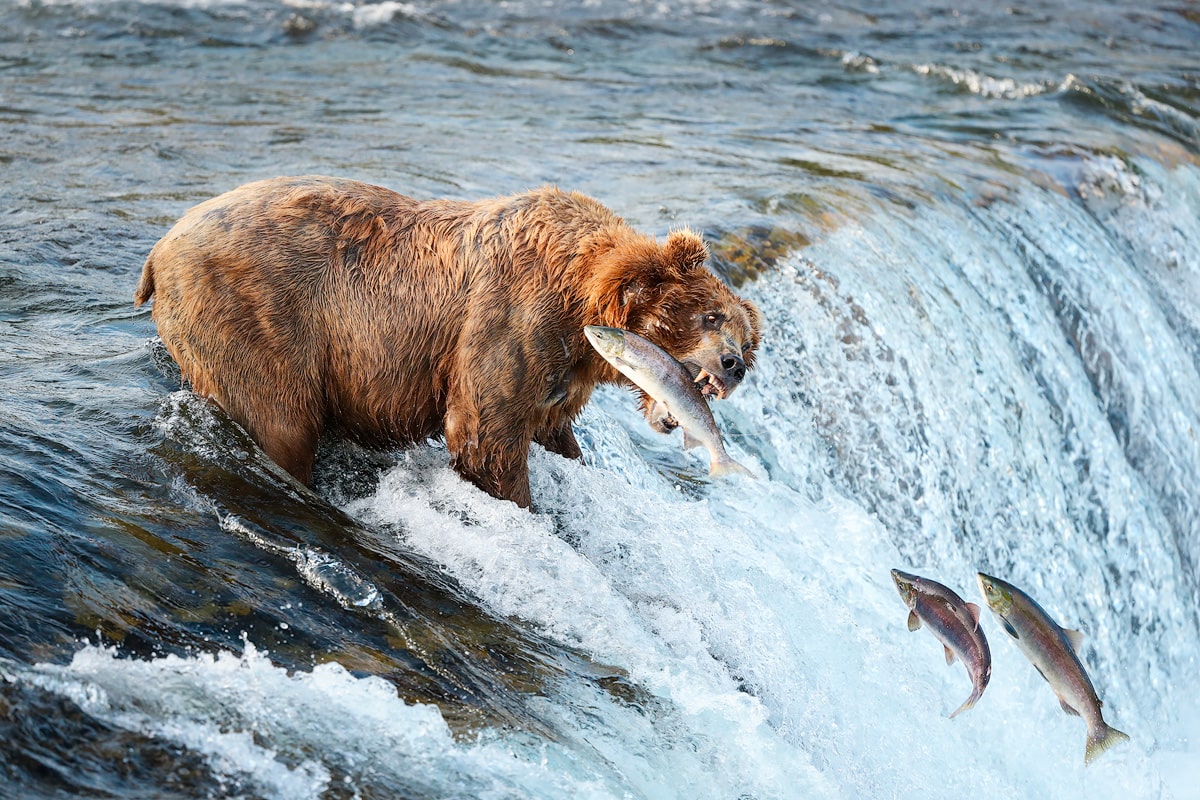
How To Visit Katmai National Park – A Comprehensive Park Guide
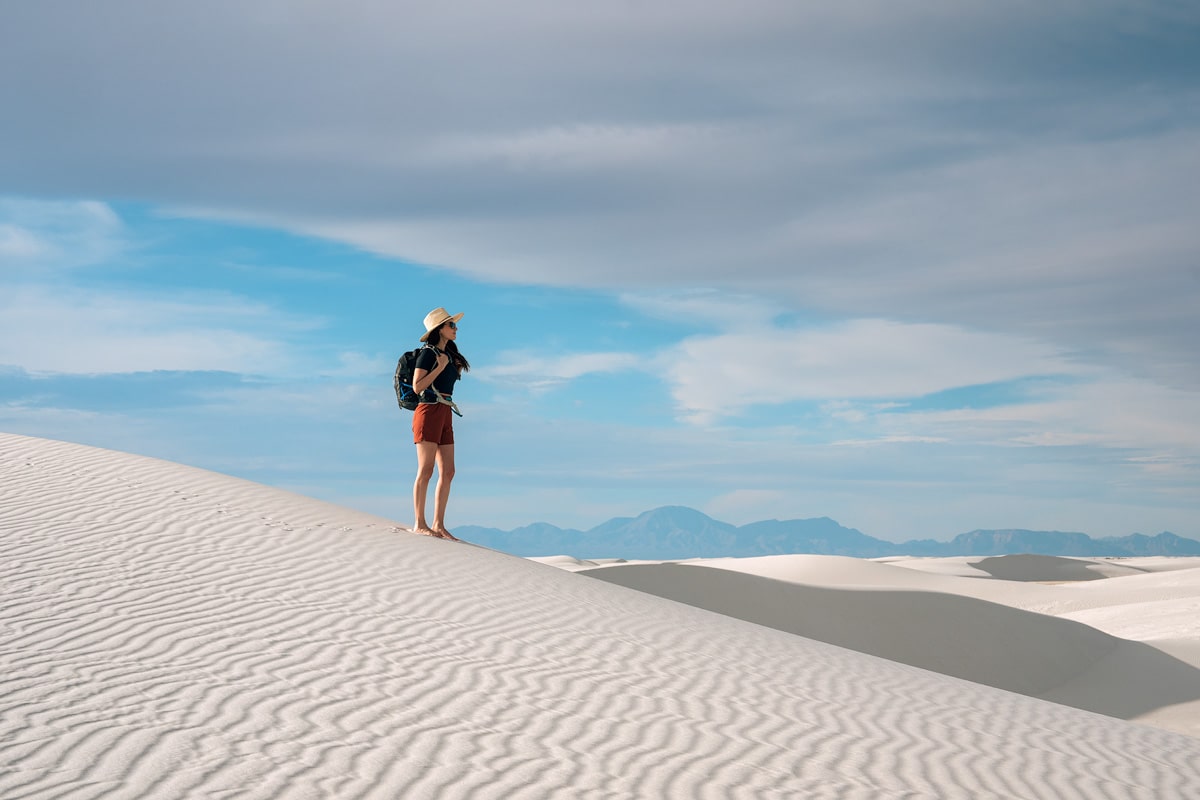
Best Things To Do In White Sands National Park: Epic 1 Day Itinerary
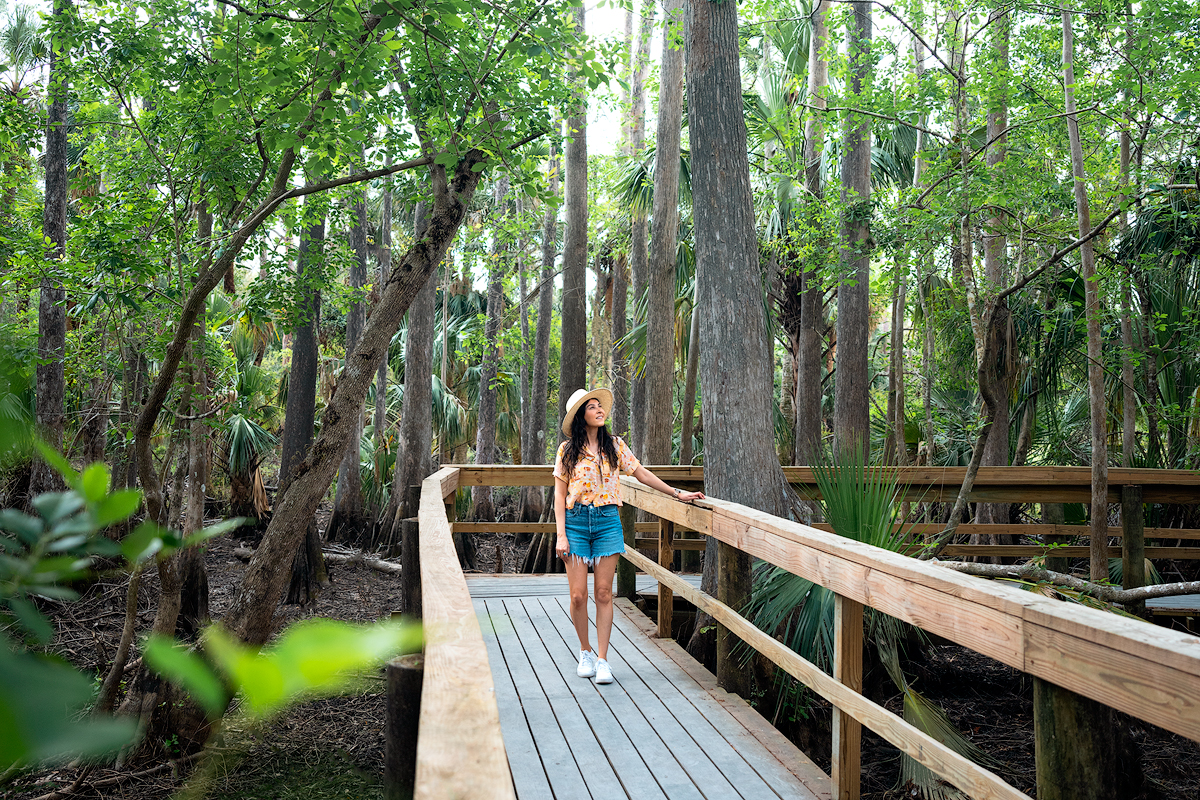
Discovering the Best Things To Do in Punta Gorda: Florida’s Hidden Gem
Join our mailing list for exclusive resources, events, and more.
Thank you for subscribing!
10 comments
Hi i am planning a five days four nights trip from salt lake city to yellowstone this June. Kindly help me routing my trip.
René muchas gracias por esta guía está maravillosa! Super facil y guiada, es la mejor guía de todo internet! Estaba estresada por estar leyendo y buscando en otros sitios, entoces me dije, pero yo sigo a René, ella debe de tener algo en su sitio web, y bingo! Lo tienes todo!
How do I save your my google maps so I can edit it to make it work for me?
I visited Yellowstone National Park when I was 6, I don’t remember much but I do remember it was beautiful and Old Faithful was amazing to me at the time. I hope to go back in the next couple of years so I can see it again and take more time to explore some of the sites you’re recommended and appreciate the wildlife more. Thanks for sharing.
I agree with Idalis above. I have researched and read and read and just got more and more overwhelmed. Your blog is wonderful. Just what I needed. Thank you.
Great guide. Road tripping this summer from PA. Thanks heaps Renee. Cheers, Erik
This is literally the best guide ever. I have seen so many and they all ended up confusing me more. Thank you!
I’m planning a trip for my sister’s family this June. They will be staying in Island Park, they will have 4 kids, 4 adults, and 2 seniors in their party. Im looking at your 4 day itinerary, can you provide me with which color is for each day and would this itinerary fit their family and place they are staying?
Awesome blog – very helpful – Thank you !
I was lucky enough to visit Yellowstone a few years back and it was one of my most memorable trips. Reading your blog and seeing your photos brought back so many wonderful memories. Thankyou Renee.
Leave a Reply Cancel reply
Your email address will not be published. Required fields are marked *
This site uses Akismet to reduce spam. Learn how your comment data is processed .
Follow Along on Instagram
2-FOR-1 GA TICKETS WITH OUTSIDE+
Don’t miss Thundercat, Fleet Foxes, and more at the Outside Festival.
GET TICKETS
BEST WEEK EVER
Try out unlimited access with 7 days of Outside+ for free.
Start Your Free Trial
Powered by Outside
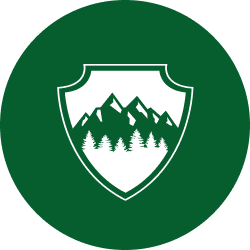
Don't miss new content!
Follow the brand to see our content on your activity feed!
>", "path": "https://www.yellowstonepark.com/things-to-do/park-itineraries/weekend-itinerary/", "listing_type": "category", "location": "list", "title": "2 Days in Yellowstone, Our Best Vacation Itinerary"}}'> 2 Days in Yellowstone, Our Best Vacation Itinerary
See wildlife, geysers and mountains views.
>", "path": "https://www.yellowstonepark.com/road-trips/road-trip-itineraries/yellowstone-glacier-road-trip/", "listing_type": "category", "location": "list", "title": "Yellowstone to Glacier National Park Road Trip"}}'> Yellowstone to Glacier National Park Road Trip
>", "path": "https://www.yellowstonepark.com/road-trips/gateway-towns/yellowstone-park-entrances/", "listing_type": "category", "location": "list", "title": "which entrance to yellowstone national park should i take"}}'> which entrance to yellowstone national park should i take, >", "path": "https://www.yellowstonepark.com/park/faqs/yellowstone-budget/", "listing_type": "category", "location": "list", "title": "9 tips to visit yellowstone on a budget"}}'> 9 tips to visit yellowstone on a budget, >", "path": "https://www.yellowstonepark.com/park/weather-seasons/spring-yellowstone/", "listing_type": "category", "location": "list", "title": "springtime in yellowstone"}}'> springtime in yellowstone.

12 Best Restaurants Near Yellowstone National Park

Subscribe to the Yellowstone Newsletter

Where is Yellowstone National Park?

8 Best Historic Hotels in and Near Yellowstone

Entrance Fees and Where to Get Your Park Pass for Yellowstone
Yellowstone visitors have several options for paying an entrance fee to get into the park or even getting in free.
Editors’ Picks
- How Far in Advance Do I Need to Book Hotels and Campgrounds?
- Can I Bring My Dog to Yellowstone?
- Grand Teton Essentials: 12 Basic Things You Need to Know
Itineraries

10 Best Things to Do in Yellowstone and Beyond
Here's your bucket list to visiting America's first national park.
- 3-Day Eco-Friendly Vacation Itinerary for Yellowstone and Grand Teton
- 10 Things to Do with Kids at Yellowstone
- 4 Best Places to Stargaze under Night Skies in Yellowstone

Where to See Bears, Wolves and More in Yellowstone and Grand Teton
Wildlife is abundant throughout these two national parks. Go wildlife watching in their natural habitat in the areas they frequent most.
- How close can I get to wild animals in Yellowstone?
- Bear Spray: Buying, Using, and Recycling It in Yellowstone
- Wolf Reintroduction Changes Ecosystem in Yellowstone

Grand Prismatic Spring at Yellowstone’s Midway Geyser Basin
Old Faithful may be more famous, but the Grand Prismatic Hot Spring is the most photographed thermal feature in Yellowstone. That's because of its crazy-bright colors and enormous size.
- About Old Faithful, Yellowstone’s Famous Geyser
- 8 Best Yellowstone Geyser Basins and Map
- Mammoth Hot Springs Looks Like an Inside-Out Cave
Hiking Trails

Which Yellowstone Trail Should I Hike?
Use our personalized guide
- Hike Mount Washburn in Yellowstone
- Hike the Avalanche Peak Trail in Yellowstone
- 6 Best Hiking Trails in Grand Teton National Park
Natural Wonders

Did You Know There is a Grand Canyon in Yellowstone?
Giant waterfalls pierce the Yellowstone River while pastel colors mark the locations of hot springs and steam vents in the canyon walls.
- Yellowstone Lake – Where Fire Meets Ice
- 3 Waterfalls of the Grand Canyon of Yellowstone
- Listen to the Recorded Sounds of Yellowstone

Chicago to Mount Rushmore to Yellowstone Road Trip
Take the All-American Road Trip to Yellowstone, starting in Chicago.
- Salt Lake City to Yellowstone Road Trip
- Yellowstone to Glacier National Park Road Trip
- Denver to Yellowstone Road Trip

A Quick Overview Map of Yellowstone
Do you know where you're going?
- Official Yellowstone National Park Map PDF
- Official Grand Teton National Park Map PDF
- Quick Overview Map of Glacier National Park
Neighbor Parks

2-Day Itinerary in Grand Teton National Park
Only have two days? Here's what to do.
- 2 Days in Glacier National Park
- Do I Need a Reservation to Visit Glacier National Park?
- 2-Day Badlands and Black Hills Vacation Itinerary
Gateway Towns

Which Entrance to Yellowstone National Park Should I Take?
Planning a vacation to Yellowstone involves many details, one of which is deciding how you will enter the park.
- 7 Sights in West Yellowstone
- Find the Wild West in Cody
- Jackson, Wyo., Gateway to Yellowstone and Grand Teton
Outside Apps
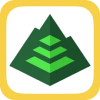
Get off the beaten path, and stay found.
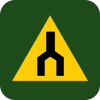
Discover the best trails in the world.
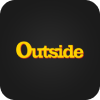
Unlock 600+ hours of ad-free films and series.
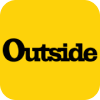
Unlock 15+ outdoor publications all in one app.
>", "path": "https://www.yellowstonepark.com/park/faqs/yellowstone-basic-information/", "listing_type": "category", "location": "list", "title": "Yellowstone Essentials: 12 Basic Things You Need to Know"}}'> Yellowstone Essentials: 12 Basic Things You Need to Know
Read this before you plan your visit to the park.
This remote steamy landscape in Wyoming, Montana and Idaho became the world’s first national park and is one of America’s most famous thanks to the Old Faithful Geyser and the brightly colored Grand Prismatic Spring. Come to Yellowstone National Park to see grizzly and black bears, thousands of wild bison, packs of wolves, giant waterfalls and the largest concentration of active geysers on Earth. But before you head to the park, here are a few basic Yellowstone essentials you need to know.
At more than 3,400 square miles, Yellowstone is huge. It can take hours to drive from one part of the park to another and speed limits are 45 mph or slower on all roads. Not to mention notorious bison jams often cause delays. Plan your trip strategically so you don’t spend all your time driving.
You can buy a $35, 7-day pass at a park entrance station, or use your America the Beautiful or other interagency annual pass to get into the national park. If you’re planning to visit Grand Teton as well, an America the Beautiful pass is the way to go to avoid paying double entrance fees. Here’s how to get your pass.
Yellowstone’s thermal features are fatally hot. Always stay on trails and boardwalks, keep small children close to you and never enter a geyser, hot spring or other thermal feature for any reason. It’s also illegal to throw things inside them.
If you’re lucky, you might spot a grizzly or black bear in Yellowstone. While majestic, these creatures can be dangerous. Stay alert at all times, especially when hiking. Carry (and know how to use) bear spray, always hike in groups and make noise to ensure you don’t spook a bear. Store all food and scented items in bear-proof containers.

PET-FRIENDLY ACTIVITIES
Pets are not allowed on boardwalks, hiking trails, in the backcountry, or in thermal areas at Yellowstone, but there are plenty of activities just outside the park for you and your pup.
If you are planning on bringing your dog with you to the park, make sure to check out these regulations from NPS .
- Take a lap around Earthquake Lake.
- Go for a stroll through West Yellowstone. You’ll find various pet-friendly coffee shops and retailers to visit.
- Hike Coffin Lakes Trail, a moderate hike with stunning views and stream crossings.
- Don’t miss out on the popular Old Faithful geyser. Dogs are allowed on the sidewalks around the visitor center with a leash.
- Have a picnic at Yellowstone Lake and let your dog dip their paws in the chilly water.

Enjoy comfortable, modern, amenity-rich lodging when you stay outside Yellowstone National Park.

Wildlife Viewing
Yellowstone is home to more than 200 species of animals, and spring is one of the best seasons to see them in action.

West Yellowstone Snowcoach Tours

Gardiner Snowcoach Tours

Yellowstone Vacation Snowmobile Tours

Two Top Snowmobile Tours

West Yellowstone Summer Bus Tours

Yellowstone Vacations Snowmobile Rentals

Two Top Snowmobile Rentals

Car Rentals
Yellowstone | Grand Teton | Winter Glacier | Badlands

Free Yellowstone Trip Planner
Download our free stunning Yellowstone Trip Planner filled with an inspiring itinerary, gorgeous photographs, a park map and everything you need to plan your dream vacation. Order this insider’s guide to Yellowstone today to get tips on how to get there, what to do and where to stay.
Get even more trip planning information in our email newsletters and by selecting to receive email and/or mail from our Yellowstone travel partners.
Featured Partners
Customize your Yellowstone travel guide based on your road trip or airport approach to the park. On the form above, select to receive trip information directly from vacation partners for the regions you will be vacationing in.
Grand Teton National Park to Yellowstone
Discover the beauty of Yellowstone's neighbor national park to the south, Grand Teton, and its neighboring town, Jackson.
- Signal Mountain Lodge in Grand Teton National Park - Stay at the only resort located on the shores of Jackson Lake in Grand Teton National Park, with camping and boat rentals available.
Salt Lake City to West Yellowstone
One of the most direct routes to Yellowstone launches in Salt Lake City, with attractions all its own, and travels up the west side of the Teton Mountain Range. Stunning wildlife, ski towns and western culture dominate this tour.
- Diamondville/Kemmerer Area - Gateway to the Bridger and Teton National Forest, including Yellowstone. Unearth a fossil, visit the JC Penney Motherstore and camp in the Hamsfork Recreation Area .
- Southeastern Idaho - The 11 communities of Southeast Idaho have museums, an historic state park, hot springs, Bear Lake and fantastic wildlife-watching for the Yellowstone and Grand Teton vacationer .
- Eastern Idaho's Yellowstone Teton Territory - Eastern Idaho is full of adventure and great outdoor activities such as Yellowstone Bear World, fly-fishing, biking, rafting and camping.
- Flaming Gorge Country - Halfway between Yellowstone and Arches National Parks is an unspoiled playground of stunning natural features. Flaming Gorge National Recreation Area offers year-round adventure for families of all ages. Scenic trails. Superb boating. DIY rafting. Trophy fishing. Wow. Flaming Gorge is a ‘must see’ stop on your next western journey.
- Cache Valley, Northern Utah - Stay a day and explore Logan, Utah. Famous for outdoor beauty, hands-on heritage experiences, food tour and performing arts.
- Salt Lake City, Utah - Salt Lake is a combination of metropolitan city and quaint mountain town; the towering Wasatch Mountains embracing Salt Lake offer a dramatic backdrop to the vibrancy and activities of downtown.
- Park City, Utah - Discover the endless activities this charming mountain town has to offer including hiking and biking on over 400 miles of trails. After a day of adventure, explore the shops, galleries and restaurants on Historic Main Street and wind down with a local craft beer or whiskey.
- Dinosaurland - One of the West's biggest secrets is northeastern Utah, an easy day's drive south of Yellowstone National Park. Some call it Dinosaurland, and you'll find it offers adventure and sites not seen anywhere else in the world.
- Bear Lake Valley - Come to the "Caribbean of the Rockies" with an intense turquoise blue lake. Jet ski, go sailing, boating, fish, swim and play on our sandy beaches. Winter offers snowmobiling, ice fishing and snow skiing.
- Yellowstone Vacations - Stay in West Yellowstone, Mont., and you will be one step closer to enjoying the majestic scenery of the national park. The west entrance is the closest entrance to world famous Old Faithful geyser and Grand Prismatic Hot Spring.
- Days Inn by Windham West Yellowstone - Conveniently located off highways 191 and 20, this hotel near Yellowstone’s West Entrance offers great value and quick access to the most popular attractions in the area.
- Natural Retreats Park City - Handpicked for prime mountain access and high-end amenities, these vacation rentals include private homes nestled on the slopes, luxury lodge condos at Silver Star, and ski-in, ski-out estates in gated communities at both Deer Valley Resort and Park City Mountain Resort.
Yellowstone to Glacier National Park
On the north side of Yellowstone, you'll find wildlife galore along the banks of scenic rivers. But there is culture here too. See a world-class art museum, hot springs, historic towns and high peaks under Montana's big sky on the way to Glacier National Park.
- Montana’s Glacier Country - Home to iconic Glacier National Park, Western Montana’s Glacier Country is a region that needs to be explored. It’s time to discover your Montana moment.
- Great Falls, Montana - Resting on the high plains along Montana’s Rocky Mountain Front Range, Great Falls is located at the confluence of the Missouri and Sun Rivers, the ideal gateway for your Genuine Montana experience.
- Missoula, Montana - Situated halfway between Yellowstone and Glacier National Parks, Missoula is an impeccable balance of ultimate adventure by day and unique, hip culture at night.
- Southwest Montana - Hemmed by the snow-crowned peaks of Glacier National Park to the north and the geological marvels of Yellowstone National Park to the south, this vast region holds the best of Montana.
- Visit Yellowstone Country - This unparalleled year-round vacation destination, made up of five Montana counties: Gallatin, Park, Sweet Grass, Stillwater and Carbon, offers recreation, lodging, dining, seasonal activities and cultural treasures.
- Visit Helena - Helena truly offers an extraordinary range of mountain biking and convenient trailhead shuttles. Or get out on a hike or boat the waters at Gates of the Mountains. After your adventure, drop into town where five microbreweries await.
- Central Montana - Wide-open spaces. Gracious people. Where a rugged past meets a vibrant present. Central Montana remains an authentic experience unlike any other.
- Gardiner, Montana - Quaint, Old West-style Gardiner sits on the north edge of Yellowstone, making it a convenient gateway town. It's the only year-round entrance to the park.
- Big Sky, Montana - Tucked in the flanks of the green mountains that roll up to Big Sky Resort, come to Big Sky for world-class recreation such as hiking, biking, rafting and in the winter, skiing.
- Natural Retreats - Offering Big Sky vacation rentals to suit every vacation style, from mountain chic slopeside homes to grand hilltop chalets and modern condos.
Chicago to Rushmore to Yellowstone
Take your family on the All-American road trip starting in the Midwest and traveling through South Dakota's Badlands on through Wyoming's cowboy country to Yellowstone. Explore the Black Hills, Devils Tower and more en route.
- Drive the Safest and Easiest Route to Yellowstone - See hidden treasures on the way to Yellowstone via HWY US 16: The Cloud Peak Scenic Skyway, Ten Sleep Canyon, Petroglyphs, Ancient Mammoth Hunters and Museum.
- Billings, Montana - Billings is the scenic home base for Yellowstone trips and a wild West destination in its own right. In the heart of southeast Montana, Billings is knows as "Montana's Trailhead."
- Southeast Montana - Visit epic battlefields, breathtaking canyons, museums, dinosaur dig sites and more en route from the Black Hills to Yellowstone National Park.
- Crazy Horse Memorial - Near Mt. Rushmore in South Dakota, another rock carving in process honors Crazy Horse, the legendary Lakota leader, and his people.
- Missouri River Country - This unspoiled land offers a fantastic getaway for those who truly enjoy the outdoors and have a spirit of adventure - from hunting and fishing to exploring the history of dinosaurs and Lewis and Clark.
- Rapid City, South Dakota - Explore nearby South Dakota national parks, learn about American heroes, take in local arts and culture, explore the outdoors and indulge in a unique dining scene in Rapid City.
- Park County Travel - Explore the communities of Buffalo Bill’s Cody Yellowstone and see that the Wild West isn’t so wild after all. Find welcoming accommodations, fine restaurants and plenty of adventure.
Denver to Yellowstone
Start your trip to the park in the heart of the Rocky Mountains. Then travel through Wyoming's southern cowboy towns and native nations before exploring Yellowstone's southern ranges.
- Sweetwater County, Wyoming - Take a national park road trip & fill up on adventure, history and the cowboy spirit in Sweetwater County, Wyoming, the perfect stopping point to refuel and rediscover.
- Carbon County, Wyoming - Carbon County is a year-round destination for anyone who enjoys the great outdoors. We say, “Star count is more important than thread count."
- Cheyenne, Wyoming - Get a cowboy’s welcome at the place known for the world’s largest rodeo, Old West museums and huge painted boots scattered about town.
- Colorado State Parks & Wildlife - Colorado’s 42 state parks are places to have fun, get away and recreate in beautiful settings. Book your camping reservations or find activities across the state.
- Moffat County, Colorado - The 1.7 million acres of pristine, picturesque public lands, abundant wildlife, wild horses, and untamed rivers define Moffat Country.
- Casper, Wyoming - World-class fly-fishing is not the only game in town. From a rowdy ride on a pioneer wagon to a hike up Casper Mountain, you’ll be doing your own trailblazing.
- Laramie, Wyoming - Explore a colorful historic past and some of the region’s best scenery. Find unparalleled adventure within a short drive of the city or visit the historic downtown with great lodging, art culture, nightlife and unique shopping.
- Wind River Country - Towns like Riverton, Lander, Dubois and the 2.2 million-acre Wind River Indian Reservation offer incredible outdoor recreation and the history of Wyoming from the Mountain Man to wild mustangs.
Tour Guides and Tour Apps
Don't miss a thing by following an expert - a literal "Yellowstone Travel Guide."
- GuideAlong - Get the driving app that’s like having a tour guide in your car. GuideAlong automatically plays interesting and entertaining commentary as you go.
- Active Adventures - Explore the best of the world’s most beautiful destinations, from the well-known to the well-hidden. Discover natural wonders and dynamic cultures with expert guides leading the way and every detail handled from start to finish.
About Outside Interactive, Inc.
Planning A Trip To Yellowstone: 15 Things To Know
If you are thinking about a Yellowstone vacation, we recommend you stay for at least 1 – 2 weeks. Be sure you know all about wildlife safety , permits & reservations , activities you can do, what to do about food and supplies and park regulations before you go. We have been to the park 7 times and share our tips for planning your trip to Yellowstone below.

We heard a statistic that is crazy. 90% of the people that visit Yellowstone never go farther than a 1/4 mile off the main road. WOW.
They are missing out on so much that Yellowstone has to offer. Please make sure you plan to get off the main road as often as you can!
Table of Contents
Tips For Planning A Trip To Yellowstone
Booking your stay.
If you want to stay in Yellowstone – which we do recommend – there are a few options. Staying in the park makes the whole experience different. You become more immersed in the park and the Yellowstone way of life.
Versus having to drive in and out of the park each day. BUT take note this means you probably won’t have good cell service the whole time. On vacation that isn’t a bad thing!
You can book your Yellowstone Hotel or Yellowstone Lodge accommodations starting around May 1st for the FOLLOWING year. So on May 1st, 2023 people were booking for July and August 2024. So book early people!
The prices vary. If you are willing to have a cabin that has a shared bathroom (kind of like camping but you get to stay in a bed!) then you will be paying less. If you want a cabin with a bathroom it is more. Decide how much time you plan to spend at the resort/cabin and make a decision based on that.

If you are looking to stay in a campground or RV park it is the same thing. However do note that they have first come first serve campgrounds as well. But these campgrounds do not have hook ups for your RV – you can stay here but you will be boondocking (Staying without hookups).
If you are curious about boondocking we have a post on it here.
We have done the first come first serve before but you are taking a chance of not getting a site and you normally need to be at the campground early to secure a spot.
If you want full hookups you will want to get into the Fishing Bridge campground.
There are also some great Yellowstone VRBO options outside of the park like these:
One of a kind cabin – located by the West Yellowstone Entrance
Elk Crossing – by the West Yellowstone Entrance
Modern cabin – by the North Entrance
I know I said stay in the park. BUT if you can’t get a reservation in the park know that the towns outside the park are pretty cool too and even if you weren’t staying in them I would recommend you visit them.
The town of Cody is going to be the furthest away. For that reason we recommend Gardiner or West Yellowstone if you are really planning to explore Yellowstone.
How Long To Stay
We recommend a week because it gives you a chance to breath (and not rush around the whole time) and to really get out to explore and enjoy the park during your Yellowstone vacation. Yellowstone is totally like Disney World where visitors have an agenda and they are knocking everything out as quick as they can.
You miss so much about the experience and the atmosphere of the park when you do that. We would really recommend 2 weeks – but understand that isn’t always possible for people. But if you can swing it then do it!
We would recommend staying a few nights of your Yellowstone vacation at each location that offer places to stay. For example:
- 2 nights at Fishing Bridge Village – by Yellowstone Lake
- 2 nights at Mammoth Hot Springs Village
- 1 night at Roosevelt Village
- 2 nights at Old Faithful Village (Old Faithful Inn is gorgeous)
I know, a lot of moving, but it is a short distance and you won’t be spending much time in your room anyways. Doing this will allow you to see and experience more of the park.
Also if you are able to stay over a week you can spread out your time at each place.
Take note that Yellowstone is HUGE and can take up to 3 hours to drive from one entrance to the other. Maybe 4 if there is a buffalo or bear sighting next to the road.
By staying in multiple places it allows you to not have to spend so much time in the car each day. Plus you can better immerse yourself in that area of the park when you are staying there.
If you aren’t staying in the park we would recommend you stay in either Gardiner or West Yellowstone . And since these are relatively close to each other you could pick just one for a home base.
That being said if you aren’t against moving you could spend half your time in Gardiner and half your time in West Yellowstone and plan your Yellowstone park trips around those areas.
Are you researching the ultimate family vacation in Yellowstone ? Planning a trip to Yellowstone is a lot of work! Let us help you!
Feeling overwhelmed by all the awesomeness that is Yellowstone?! We get it! The park is huge and there is so much to see and do. We have visited the park over 6 different times and have put together 1, 3 and 7 day guides to help you plan your ultimate trip to Yellowstone:
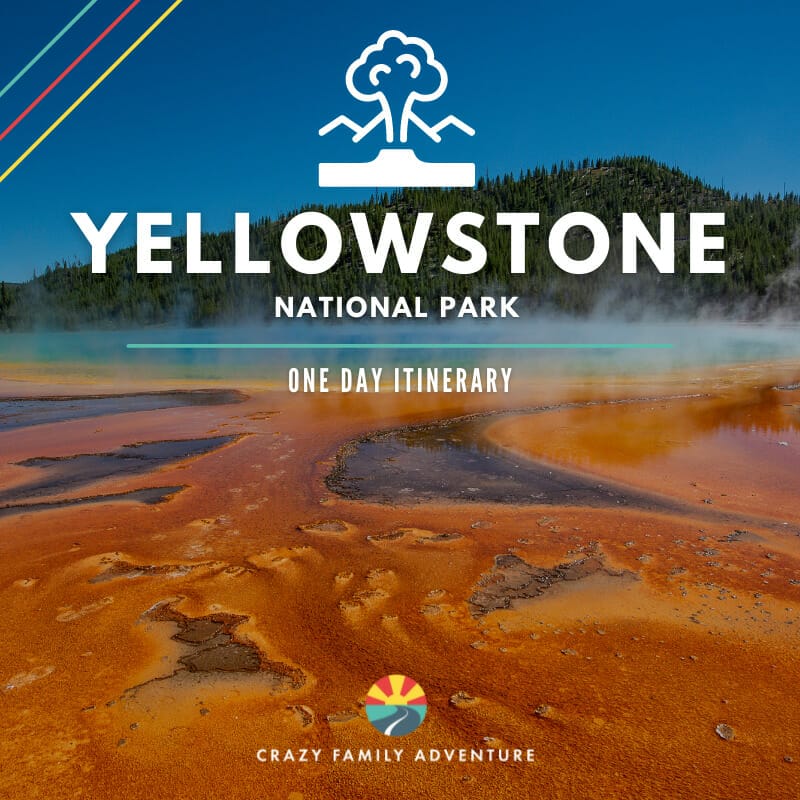
You can really visit the park any time of the year! And each season brings something different to the experience.
Spring – bear cubs! Need we say more?! But also could be cold and snowy and everything may not be open.
Summer – busiest time to go. But also a great time to see everything.
Fall – August/September would be our favorite time to go. Less busy yet pretty much everything should still be open. And you may get a brief snow storm while you are there! Yellowstone is gorgeous covered in snow. October/November would be a whole different experience so if you are planning Fall we recommend August/September.
Winter – a whole different experience that we have not tried yet. But have heard told from workers in Yellowstone that it is their favorite time of year to be in the park and that it is just magical. My sister and her family recently visited in winter. You can learn more about their experience here: Yellowstone In Winter: 11 Top Things To Know And Do!
If you can plan multiple times to visit try to come during each season!
Bring a cooler (or buy a disposable one at one of the grocery stores) and perishable items. The locations have ice so as long as you replenish you can keep things in the cooler the whole time. I recommend trying to do at least one meal a day out of your cooler to save money. Peanut Butter and Jelly works out great!
They also have a few “restaurants” or more snack bar/cafeteria type of places throughout the park where you can grab a burger or chicken sandwich. But I would say for the most part inside the park is not known for its cuisine.
But if you don’t want to worry about bringing food this is an option. Just be sure to check all opening times as the restaurants are not just open all the time. You can click here to learn about the restaurant options in Yellowstone.
There are multiple general stores located throughout Yellowstone where you can grab something as well and these are open all day long. You can click here to learn about the general stores in Yellowstone.
Unless you opt to go to some of their nicer restaurants like at the Lake Hotel. But take note a lot of these require reservations.
There are also a few bars located throughout the park and we definitely recommend getting a cocktail and heading out to sit on the patio and watch the sunset or look for buffalo walking by. We really like Wylie’s Canteen at Lake Lodge.
Take note the rangers are on the lookout for people that are drinking and driving – be smart and have a designated driver.
Animal Safety
LISTEN to what the Rangers say about staying away from the animals! They are amazing to see but you have to give them their space. The Bison seem so docile – but they are NOT! They can charge at a moments notice, and they are fast.
When you are out on trails or walking around be alert. You never know what is around the next corner so talk loudly and be prepared. We carried bear spray with us every time we went hiking or biking.
The rangers give a range of how far away you should stay based on the animals. My recommendation stay at least 100 yards away from all wild animals. Yes – if you are in your car they will get closer then that – just be sure not to provoke them or you may end up with a lot of damage to your car!
Respect the animals they are wild. A fear of wild animals is not a reason not to go to Yellowstone. If you follow the guidelines and are alert and smart about what you are doing. You and your family will be safe.
You can learn more about wildlife safety in Yellowstone here.
Cell Service
There is a Verizon tower in the park. So you can get a cell signal if you use Verizon *BUT* it is not consistent through the park and data speeds are REALLY slow during the day. It works great at 2am :)!
The Lodges do give you an option to buy access to their internet there. To use it you have to be at the Lodge you can usually buy 1 hour, 24 hours or 72 hours of internet use. So if you have to work when you are there it is possible – but not something I would 100% count on working all the time.
The signal is better at the main Lodge’s, Mammoth Hot Springs, and Old Faithful. I recommend just not counting on having service. The Lodge’s have pay phones (yes you read that right!) so if you have to make a call you can pay for time and make one. Oddly enough, I don’t know if they accept change or not, so think about a calling card as you plan.
This could be another reason you want to stay outside of the park. West Yellowstone and Gardiner have cell service. However if at all possible use this as a time to disconnect! You will be so glad you did.
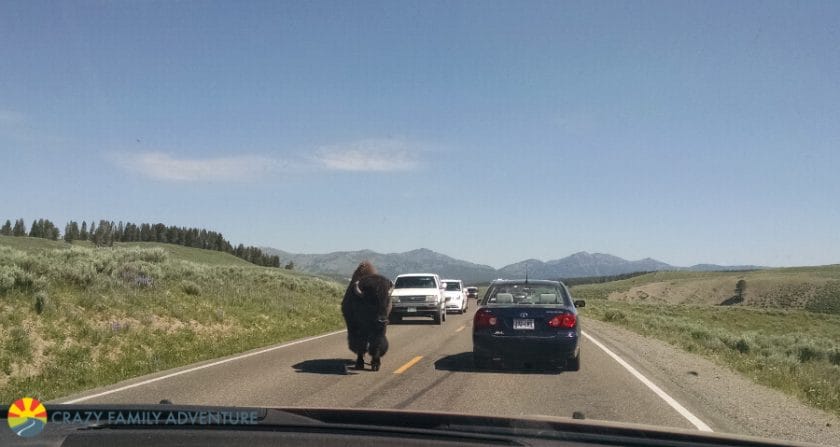
You have to get into a relaxed mindset when you enter Yellowstone. There is one road that runs the length of the park and it only has one lane on each side. RV’s and trailers drive slower, buffalo constantly cause traffic jams, and anytime there is an animal siting you will be waiting in a line of cars to get your chance to catch a glimpse!
This is also a really cool thing and Lamar Valley and Hayden Valley are great places to look for animals. Of course early morning is best and by that we mean like 5am before the sunrises to get to Lamar Valley to find a place to pull off and wait for animals to hopefully come!
If animal sightings is high on your list we recommend a Yellowstone Wild tour. You can learn more about our experience with Yellowstone Wild here: 12 Amazing Things To Do In Gardiner, Montana [+ Where To Stay]
If you give yourself a chance to sit back and really soak everything in and feel the magic that is Yellowstone (not just the tourist attractions) you won’t want to leave! Between the views, wildlife, and thermal features, there is really something special about this park!
If you are in the middle of the park it is going to take you a good 2 hours to get to a city. Which is kind of cool. So just accept it and be ok with that.
Here is our post about what to pack for your trip to Yellowstone or click here to get our FREE Yellowstone Packing List right in your inbox!
Here are 20 Tips For Visiting Yellowstone With Kids .
What To See
Each area in Yellowstone has its own unique thing to offer. Below are links into each section of Yellowstone and what we recommend doing there. Use these as a trip planner to determine what you want to see when you visit.
One of my favorite things is the Grand Prismatic Spring by West Yellowstone and Old Faithful.
We always recommend stopping in at the Visitor Center. The Rangers for the National Parks Service have so much information and are great at recommending what you should do based on weather, time of year and who is in your group.
Even if you can only hike 1/2 mile we recommend doing it! In our opinion this is where you see the best of Yellowstone. Do your research before you go to determine what hikes you can handle and go for it!
There are boardwalk hikes and you don’t need all the fancy gear. Just a good pair of shoes. Or like in our case our kids have hiked barefoot or in crocs – not that I recommend this. But it is possible :).
Here is one of the hikes we did in Yellowstone – we were here in August and we only ran into about 10 people on the whole hike!
Visiting the 5 Different Areas Around The Park
Here are our posts on each of the different areas of the park and what to do at each of them:
Old Faithful Yellowstone – 19 Tips And Things To Do
Grand Canyon Of Yellowstone: 6 Best Things To Do!
11 Reasons To Visit Fishing Bridge Yellowstone
8 Things You Don’t Want To Miss In Mammoth Hot Springs
11+ Fun Things To Do around Tower Roosevelt in Yellowstone
The Mount Washburn Hike In Yellowstone National Park With Kids!
Take a road trip to Yellowstone National Park is an amazing time!! You should plan before you go but also be willing to change things up and go with the flow when you are there and don’t over schedule yourself.
Click here if you want to get our FREE Yellowstone Packing list and more tips on Yellowstone!
Places To Visit Outside of Yellowstone
A Yellowstone trip can also include visiting other areas around the park. You can turn your Yellowstone National Park vacation into a multi stop trip with everything there is to do around the park.
Towns around Yellowstone to visit: Red Lodge , West Yellowstone , Bozeman , Livingston , Gardiner . If this interests you be sure to check out our Yellowstone Vacation post.
Yellowstone and Grand Teton National Park are basically connected so if you can add time to your trip to go to Grand Tetons National Park. It is outside of the South Entrance of Yellowstone.
And while you are at it go to Glacier National Park too. Did we say 2 weeks lets make it 4 and add these parks to your trip too! And check out our Yellowstone Vacation guide for all the fun things to do in Montana just north of the park.
Pin This Post:
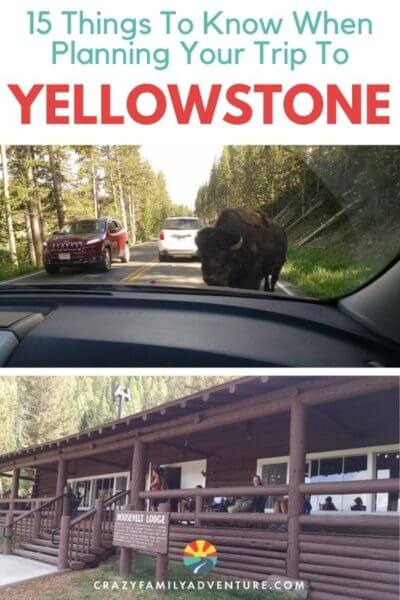
- Recent Posts
- Riding The East Fork Transit In Denali National Park - April 22, 2024
- Visiting Denali National Park With Kids - April 22, 2024
- How To Make Your RV Feel More Like Home – 5 RV Remodel Examples - April 16, 2024
DISCLOSURE : This post may contain affiliate links, meaning I get a commission if you decide to make a purchase through my links, at no cost to you. Please read my disclosure for more info.
5 thoughts on “Planning A Trip To Yellowstone: 15 Things To Know”
Hi Bryanna.
Enjoyed today’s post Yellowstone is one of my most favorite places2 If you haven’t mentioned in previous Yellowstone posts, could you reinforce the safe distances from animals? I’ve been going to the Park since the early ’60’s and how I see people behaving around animals really frightens me. I’m afraid more and more places in the Park will be restricted and more and more animals destroyed.
Very good point Susan! We were there about 5 weeks and heard of 3 people getting hurt by animals because they were too close. Then the story of the man attacked by the bears was very worrisome to us. We mentioned the recommended distance from bison in the Fishing Bridge post, but we’ll be sure to add some of the other distances as well. From a few people we talked to, the park has already changed so much with more and more restrictions because of people doing stupid things. Hopefully we can help educate!
- Pingback: 17 Reasons You Will Want To Visit Yellowstone Park
Hi! My family has booked a trip to Yellowstone for Spring ’18 and we are planning to bring our dog. I was wondering what you did with your two pups while you hiked and explored the park? Thanks for your help! -Ainsley
Our dogs stayed in our RV when we went out exploring. If it is warm we always leave the air on and a window open just in case the power goes out. We will also turn on a white noise for them so they aren’t hearing everything going on outside. One of our dogs is a barker so she has a citronella bark collar that we keep on her.
We also have a note on our door that says there are 2 dogs inside and has our phone number on it in case of an emergency. Hope that helps! Let us know if you have more questions.
Comments are closed.
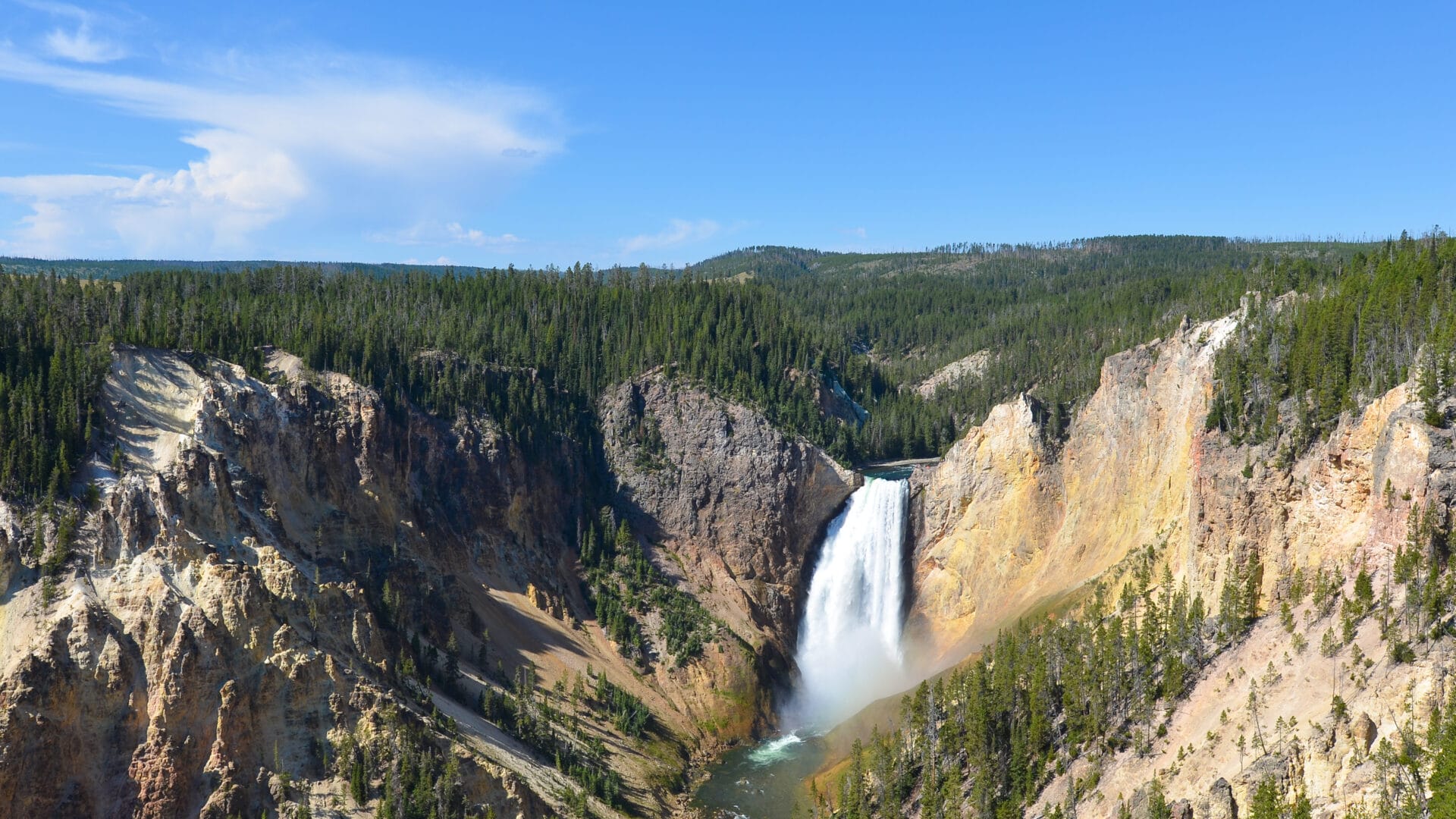
Planning a trip to Yellowstone National Park
With insider tips from real park rangers
Created in 1872, Yellowstone National Park is the world’s first and one of its most famous national parks. The park’s legendary geothermal features, including geysers, hot springs, and bubbling pools, are powered by a slumbering supervolcano that underlies the park. Fortunately, the last eruption of the volcano occurred 631,000 years ago, creating the more than 1,500-square-mile Yellowstone Caldera at the heart of the 3,468-square-mile park. Bison, bears, elk, and wolves share the park with the millions of people who visit each year. Visitors come to see postcard attractions like Old Faithful but also to venture into the park’s canyons, climb its mountains, hike, camp, and—in winter—tour by snowmobile and snow coach.
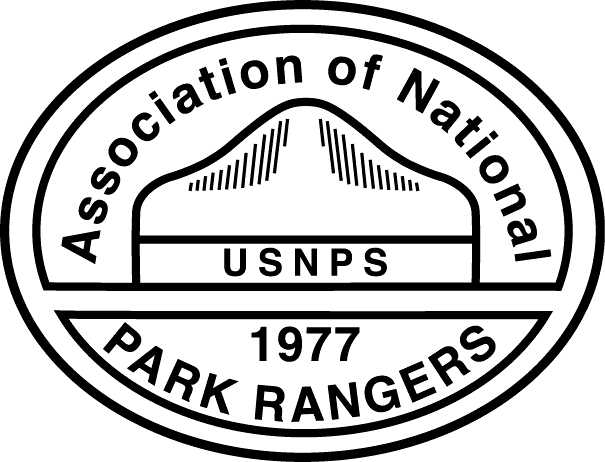
Written for you by park rangers
Who knows a national park best? Yep, the rangers who live and breathe its fresh, clean air every day. That’s who we turned to for help in creating this guide. Roadtrippers has partnered with the Association of National Park Rangers and convinced its rangers to spill their secrets for your benefit.
- Getting to Yellowstone
- Timing your visit to Yellowstone
- Things to do in Yellowstone
- Hiking in Yellowstone
- Staying in and around Yellowstone
- Eating in and around Yellowstone
- How many days for Yellowstone
Your Yellowstone National Park map
Here’s a map of all the highlights in this guide. Use it to plan your trip to make sure you don’t miss anything.
How to get to and around Yellowstone National Park
Getting to Yellowstone by air: Yellowstone National Park occupies a remote area of Wyoming (and parts of Montana and Idaho), but thanks to its enormous popularity there are no fewer than six airports that can get you within a reasonable distance of the park, in Cody and Jackson, Wyoming; Bozeman, Billings, and West Yellowstone, Montana; and Idaho Falls, Idaho.
West Yellowstone is the closest to the park—the town sits at the west entrance—but is served only by regional flights from Salt Lake City, Utah, from early May to mid-October. Flying to Jackson Hole, Wyoming, makes it easy to add a visit to Grand Teton National Park, while flying to Bozeman will put you between Glacier National Park and Yellowstone. Bozeman is a larger airport with relatively easy connections to several large western cities, and seasonal connections to points farther east.
Some travelers prefer to fly into (far larger) Salt Lake City International Airport and drive to the park. The drive from the airport to West Yellowstone is approximately 4 hours and 45 minutes.
Getting to Yellowstone by car: There are five major entrances to this vast park at all points of the compass (including two on the park’s east side), affording drivers a variety of ways to get in.
West Yellowstone is the most popular gateway to the park, in part due to its proximity to the Old Faithful geyser. From Salt Lake City, Interstate 15 runs north to Idaho Falls before connecting with U.S. Route 20, which leads to West Yellowstone and the western park entrance. U.S. 191 connects West Yellowstone to Bozeman.
The South Entrance connects to Grand Teton National Park, while travelers from the Bozeman area pass the Roosevelt Arch on the way into the North Entrance at Gardiner, Montana. On the park’s east side, the Northeast Entrance connects to Billings via U.S. 212, while the East Entrance is closest to Yellowstone Lake and is accessed from Cody by way of U.S. 14.
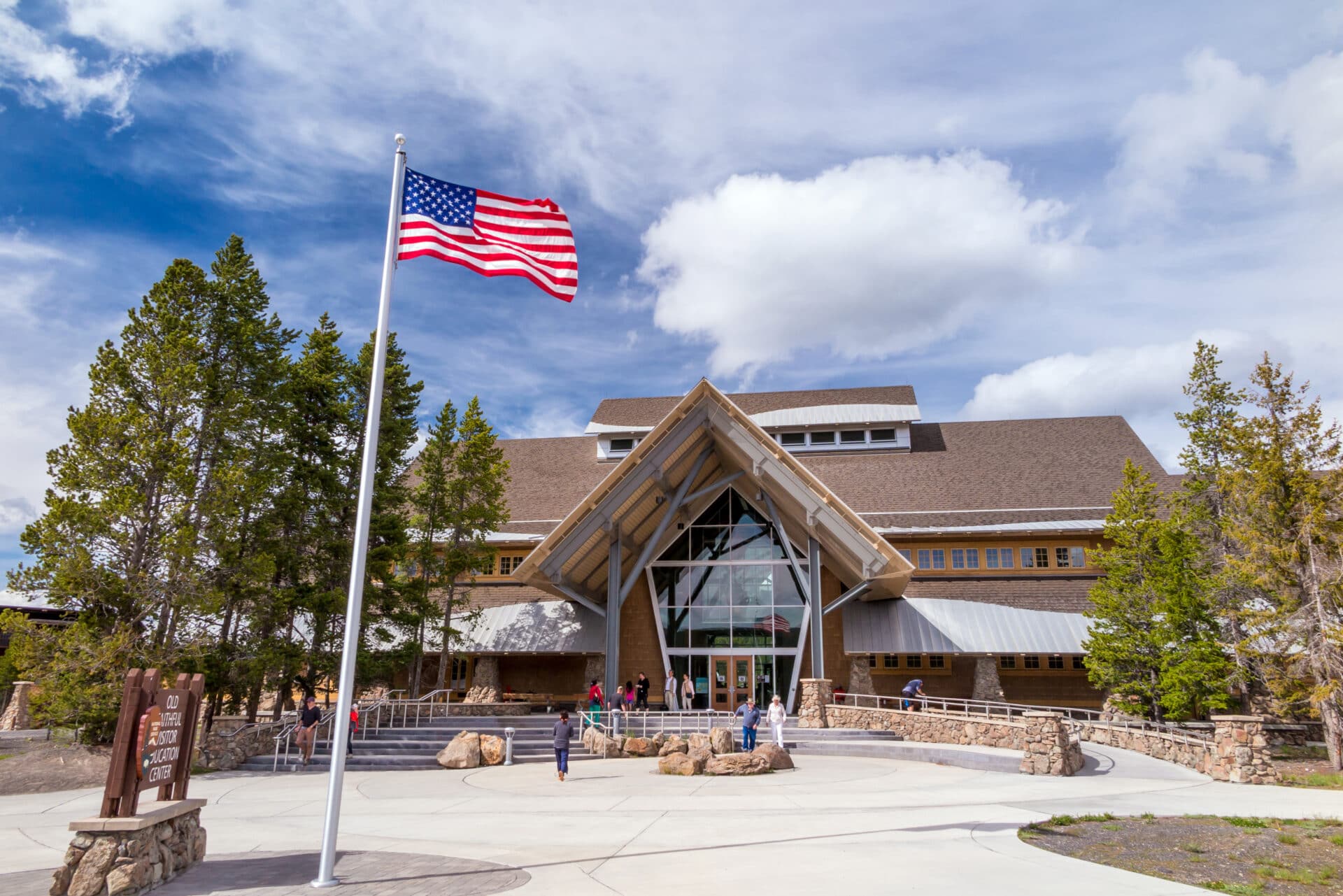
Getting to Yellowstone by bus: Bus transportation is available between Bozeman and West Yellowstone year-round, and private shuttles operate from Bozeman to Gardiner all year and to the park from Cody and Jackson in the summer.
Getting around the park: Inside the park, an extensive road network provides automobile access to all of Yellowstone’s major attractions, at least during the summer months. The park has more than 50 miles of roads connecting visitor centers in hubs like Madison, Old Faithful , West Thumb , Grant Village , Fishing Bridge , Mammoth Hot Springs , and Tower-Roosevelt . Park roads generally are open late April to early November, although not all roads open at once, and some don’t reopen until the end of May. A limited number of park roads are open to snowmobiles and snow coaches in the winter. The only road open year-round to automobiles is from the North Entrance at Gardiner through the park to Cooke City, Montana.
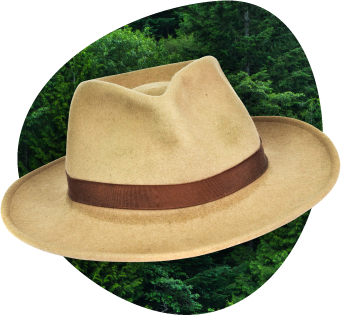
Plan your trip around stopping at no more than two visitor centers per day. Trying to cram too much into a trip ensures you’ll spend more of your time fighting traffic than appreciating the park’s thoughtfully designed exhibits and many roadside stops.
When’s the best time to visit Yellowstone National Park?
Yellowstone transcends seasons—if anything, the park is even more beautiful in winter than summer—but there are some significant practical realities you’ll need to grapple with depending on the kind of experience you’re seeking in the park.
More than 3.8 million people visit Yellowstone each year, and more than half of those show up during just three months: June, July, and August. So if you want to avoid crowds, summer is the worst time to visit, at least if you’re heading to the park’s top attractions, like its geysers and hot springs. One upside is that summer is when the park roads, campgrounds, and other facilities are most open and have the longest hours, which does tend to spread the crowds out a bit.
Going to the park in early May and late September will help you avoid the crush of visitors who clog park roads in summer and avoid the depths of cold in winter. Spring and fall, in general, are less busy times in the park, although it’s important to check on the status of park roads, which begin closing for winter in October and don’t start reopening until April.
If you’re willing to brave the cold, winter is the best season to see wildlife in the lower elevations of the park. Most park roads close in winter, however, so your best option is to book a snowmobile or snow coach tour if you want to see bison, elk, bears, and major attractions like Old Faithful and Mammoth Hot Springs. Come prepared for the weather: Winter temperatures in Yellowstone can fall as low as 30 degrees below zero and rarely rise above freezing.
Yellowstone’s weather will catch you off-guard if you don’t expect to be cold every day. The only reliably warm months are July and August, with high temperatures in the 80s or 90s—but even then it gets cold at night (sometimes down into the 30s).
What to do in Yellowstone National Park?
Calling Yellowstone a “park” is a bit misleading: At 2.2 million acres and an area approaching 3,500 square miles, it’s bigger than some countries and larger than the states of Rhode Island and Delaware combined. It literally takes hours to drive from one park entrance to another.
As you might imagine, there’s a lot to do and see in Yellowstone, and fortunately the park has an extensive road system that can get you where you want to go.
Ten visitor centers and information stations can also guide you to whatever corner of the park you want to visit. The Old Faithful Visitor Education Center is mere steps from the famous geyser and has exhibits on the park’s geothermal features. Originally built as a cavalry barracks, the Albright Visitor Center welcomes those coming through the park’s North Entrance, while the centrally located Canyon Visitor Education Center focuses its attention on the Yellowstone Volcano .
At Yellowstone Lake near the East Entrance is the rustic Fishing Bridge Museum and Visitor Center , which has exhibits on the ecology of the lake in addition to visitor information. The Grant Visitor Center serves travelers coming through the park’s South Entrance.
Other places to get brochures and talk to rangers include the Madison Information Center , located about halfway between Old Faithful and West Yellowstone; the West Thumb Information Center , near the West Thumb Geyser Basin boardwalks; the West Yellowstone Visitor Information Center; the Norris Geyser Basin Museum ; and the Museum of the National Park Ranger .
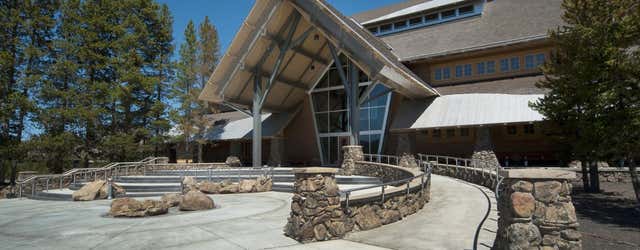
Old Faithful Visitor Center
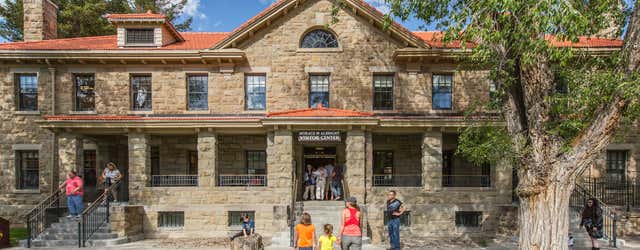
Horace M. Albright Visitor Center
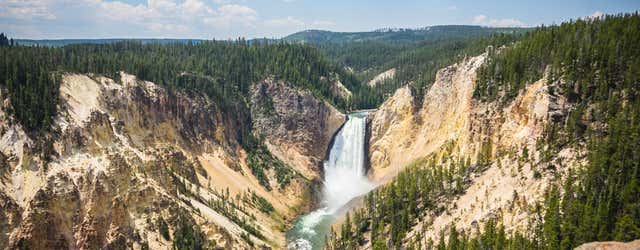

Grand Canyon Of The Yellowstone
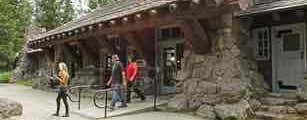
Fishing Bridge Museum and Visitor Center
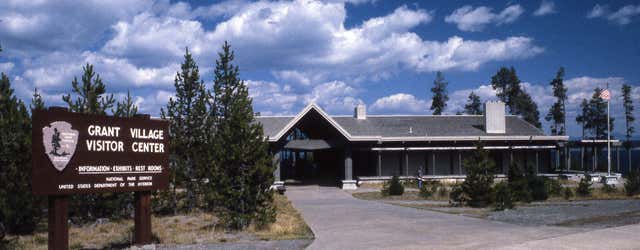
Grant Village - Visitor Center

Madison Information Station and Trailside Museum

West Thumb Information Station
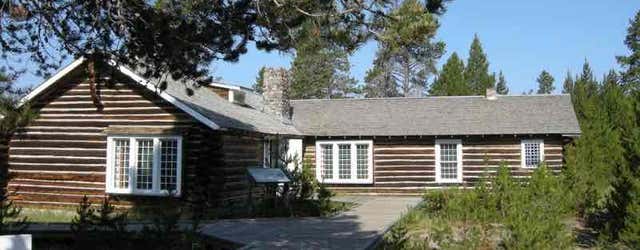
Norris Geyser Basin Museum and Information Station

Museum of the National Park Ranger
Attractions
Yellowstone has a virtually endless array of fascinating sites and memorable vistas to experience. Here are some of the must-sees:
Old Faithful : When talking about visiting Yellowstone, it’s impossible not to talk about Old Faithful. As geysers go it’s not the largest in the park (that title belongs to Steamboat Geyser), but what it lacks in height it makes up for in predictability and accessibility. The fact that its eruptions can be timed with such precision has made this geyser a popular tourist stop. In fact, the National Park Service tracks likely eruption times for six of the geysers in Yellowstone.
Mammoth Hot Springs : Hot, acidic water bubbling up to the surface of the earth through soft limestone creates the ever-growing terraces at this enormous hot spring formation.
Norris Geyser Basin : Trails and boardwalks (please stay on them!) guide visitors to a diverse group of geothermal features, including Steamboat Geyser—which periodically spouts hot water up to 400 feet into the air.
Yellowstone Lake : This vast high-elevation lake fills part of the caldera of an ancient supervolcano and is home to an unusual population of cutthroat trout—which normally inhabit the Pacific Ocean. Too cold to swim in, the lake is popular for boating and fishing.
Grand Canyon of the Yellowstone River : Hiking trails offer the best views of this steep-walled canyon and its spectacular waterfalls, including the 109-foot Upper Falls, 308-foot Lower Falls, and 132-foot Tower Fall.
Fort Yellowstone : One of the few Yellowstone highlights that wasn’t made by nature, Fort Yellowstone dates to the 1890s, when the U.S. Cavalry was sent west to protect the young national park. The fort, now part of the Mammoth Springs Historic District, contains dozens of 19th and early 20th century buildings.
Hayden Valley : This marshy valley is a great place to see Yellowstone’s famous wildlife, including bears, bison, and elk drawn to the waters of the Yellowstone River.
Lamar Valley : Somewhat more remote than Hayden Valley, Lamar Valley may be an even better place to view large mammals like bison and grizzly bears, and is also home to Yellowstone’s resident wolf packs.
West Thumb Geyser Basin : Geothermal features on the shores of Yellowstone Lake include the Abyss Pool, the Fishing Cone hot spring, and Black Pool.
Giant Prismatic Spring : Different colored bacteria give this wide, deep hot spring its multicolored appearance. Also located in the Midway Geyser Basin are the Excelsior Geyser, Turquoise Pool, and Opal Pool.
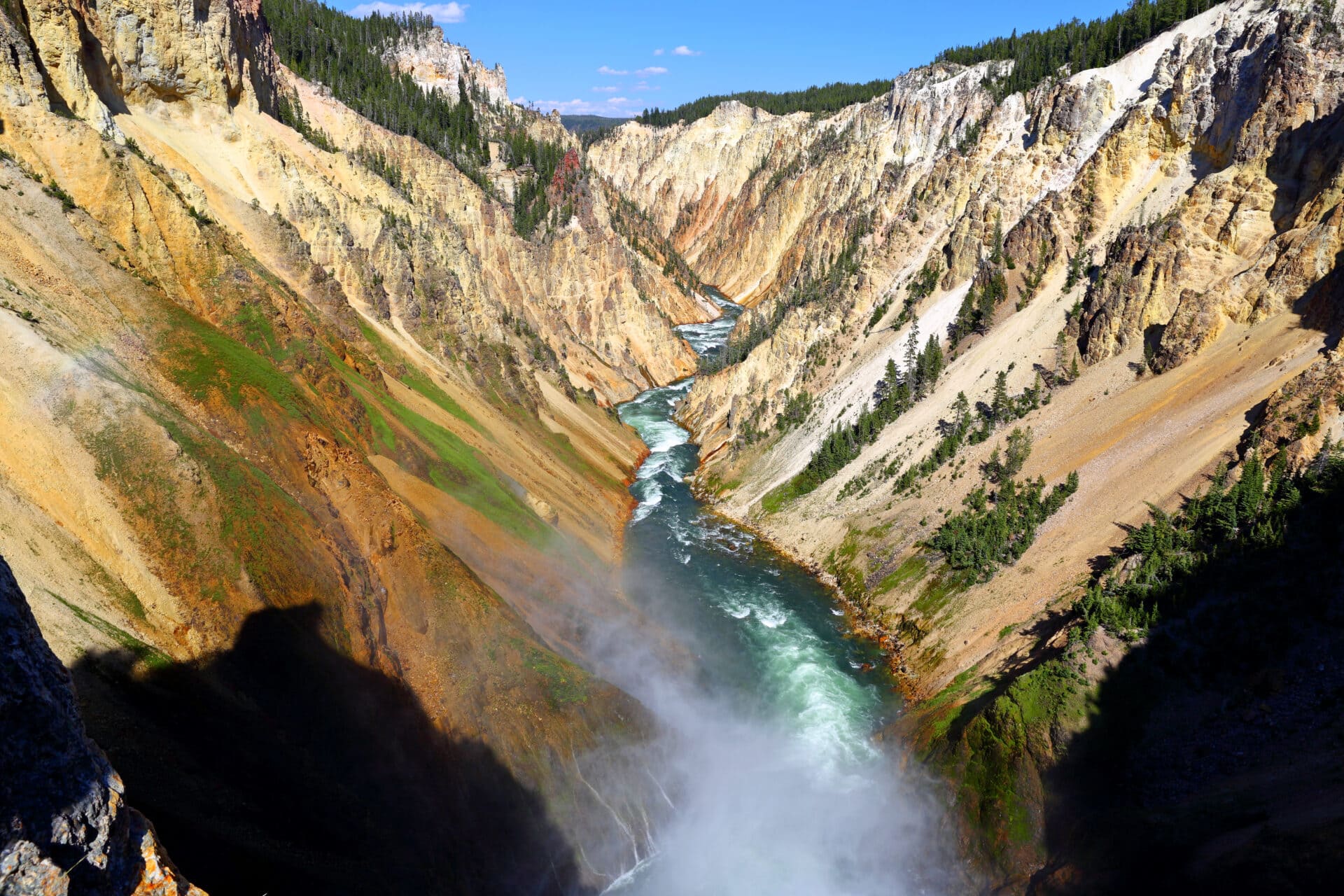
The park is open 24 hours a day, and on clear nights visitors can enjoy the dark skies to view the stars and Milky Way from many locations.
Regions of the Park
For navigational purposes, Yellowstone National Park is divided into eight distinct regions:
Canyon Village and the Grand Canyon: Includes the 20-mile Grand Canyon of the Yellowstone , the upper and lower falls of the Yellowstone River, part of the wildlife-filled Hayden Valley, the 10,219-foot Mount Washburn, and lodging and visitor information in Canyon Village .
Fishing Bridge and Yellowstone Lake: Centered on the 136-square-mile Yellowstone Lake , this area also includes a historic fishing bridge as well as a natural bridge, Pelican Valley, part of Hayden Valley, and the Mud Volcano.
Madison and West Yellowstone: Hike to Fairy Falls , fish in the Madison and Firehole rivers, drive through Firehole Canyon , and marvel at the Great Prismatic Spring and other geothermal features.
Mammoth Hot Springs and the North: In addition to Mammoth Hot Springs, this region of the park includes the 19th-century Fort Yellowstone (which now houses Albright Visitor Center), driving, biking, and hiking on the unpaved Old Gardiner Road, and a variety of wilderness trails.
Norris Geyser Basin: The literal hot spot of Yellowstone contains some of the park’s most active geothermal attractions, including Steamboat Geyser —the world’s tallest—as well as the fumaroles of Roaring Mountain , waterfall hikes and drives, and more.
Old Faithful: The world’s most famous geyser is the main attraction in this part of the park, but not the only one. Also in the vicinity are several other geysers in the Upper Geyser Basin , Black Sand Basin , Midway Geyser Basin , and Biscuit Basin .
Tower–Roosevelt and the Northeast: Did you know that the world’s largest collection of petrified trees is in Yellowstone National Park? They’re located in the northeastern section, along with attractions like the 132-foot Tower Falls , the wildlife-rich Lamar Valley , and the historic Lamar Buffalo Ranch .
West Thumb, Grant, and the South: The West Thumb of Yellowstone Lake was actually formed by a volcanic eruption about 150,000 years ago. The area includes the West Thumb Geyser Basin, backcountry camping in the remote Belcher section of the park, and camping at Grant Village.
One destination that’s often overlooked is the Museum of the National Park Ranger. This is a unique attraction, and a cultural touchstone for NPS staff. Visit to learn about the evolution of this unique profession in the place where the first ranger, Harry Yount, worked starting in 1880.
Does Yellowstone National Park Have a Volcano?
Yellowstone doesn’t have a volcano—it is a volcano, albeit a relatively dormant one. A large portion of the park is located within the caldera of an ancient supervolcano, and sections of its crater rim form some of the park’s mountains. The Yellowstone Volcano first erupted about 2.1 million years ago; its most recent major eruption was 631,000 years ago, although smaller eruptions have occurred ever since, some big enough to form such prominent park features as the West Thumb of Yellowstone Lake. Lava last flowed on the surface of Yellowstone 70,000 years ago, but the park’s geothermal features prove that Yellowstone Volcano is merely dormant, not dead.
Hiking in Yellowstone National Park
With more than 900 miles of hiking trails, it’s possible to see most of Yellowstone—from its most famous sites to its most remote corners—by foot. Trails to popular geysers and hot springs are highly accessible and sometimes feature boardwalks for navigation and platforms for viewing. Backcountry trails, on the other hand, may require you to ford rivers and encounter potentially dangerous wildlife. The trade-off, of course, is the opportunity to discover unique thermal areas and get away from the park’s sometimes overwhelming crowds.
Easy Hikes
Mammoth Hot Springs Terraces Trail : A 1-mile round trip with boardwalks and stairways to afford close-up views of this monumental hot spring.
West Thumb Geyser Basin Trail : A 0.4-mile-long boardwalk hike along Yellowstone Lake takes you to the West Thumb Geyser Basin.
Lone Star Geyser Trail : Just a few miles from Old Faithful, Lone Star Geyser erupts about every 3 hours and can be reached by a 4.8-mile out-and-back trail that’s partly paved and open to cyclists as well as hikers.
Fairy Falls Trail : Hike from the Midway Geyser Basin 1.6 miles to the 200-foot Fairy Falls, or add another 0.6 miles to see Spray and Imperial geysers before heading back the way you came.
Moderate Hikes
Beaver Ponds Trail : This 5-mile loop trail starts and ends near Mammoth Hot Springs in the northwest part of the park. It gains about 350 feet of elevation, has great views, and passes through areas that are rich in wildlife.
Lamar River Trail: This 5-mile out-and-back hike is easy except for the distance covered and provides excellent opportunities to see wolves and bison.
Seven Mile Hole Trail : Treading the line between moderate and strenuous, this 10-mile hike offers a little of everything that makes Yellowstone great: hot springs, wildlife, lodgepole pine forests, waterfalls, and rim views of the Grand Canyon of the Yellowstone.
Strenuous Hikes
Specimen Ridge Trail : A 17-mile journey with 3,500 feet of elevation gain rewards spectacular views of Lamar Valley and the Grand Canyon of the Yellowstone.
Mount Washburn Trail : The strenuous hike to the summit of 10,243-foot Mount Washburn is capped by panoramic, 50-mile views of the park on days with ideal weather. The hike entails 1,400 feet of elevation gain.
Avalanche Peak Trail : Don’t let the relatively short distance fool you: This hike is a serious workout as the trail climbs 2,100 feet in 2.1 miles on an exposed, narrow switchback path. Great views await at the peak, however.
Some rangers joke that 95 percent of visitors see about 5 percent of the park, and that might be generous. If you want to be part of the 5 percent who adventure away from the large, developed areas of Yellowstone, talk with a ranger about where you can go to see something different.
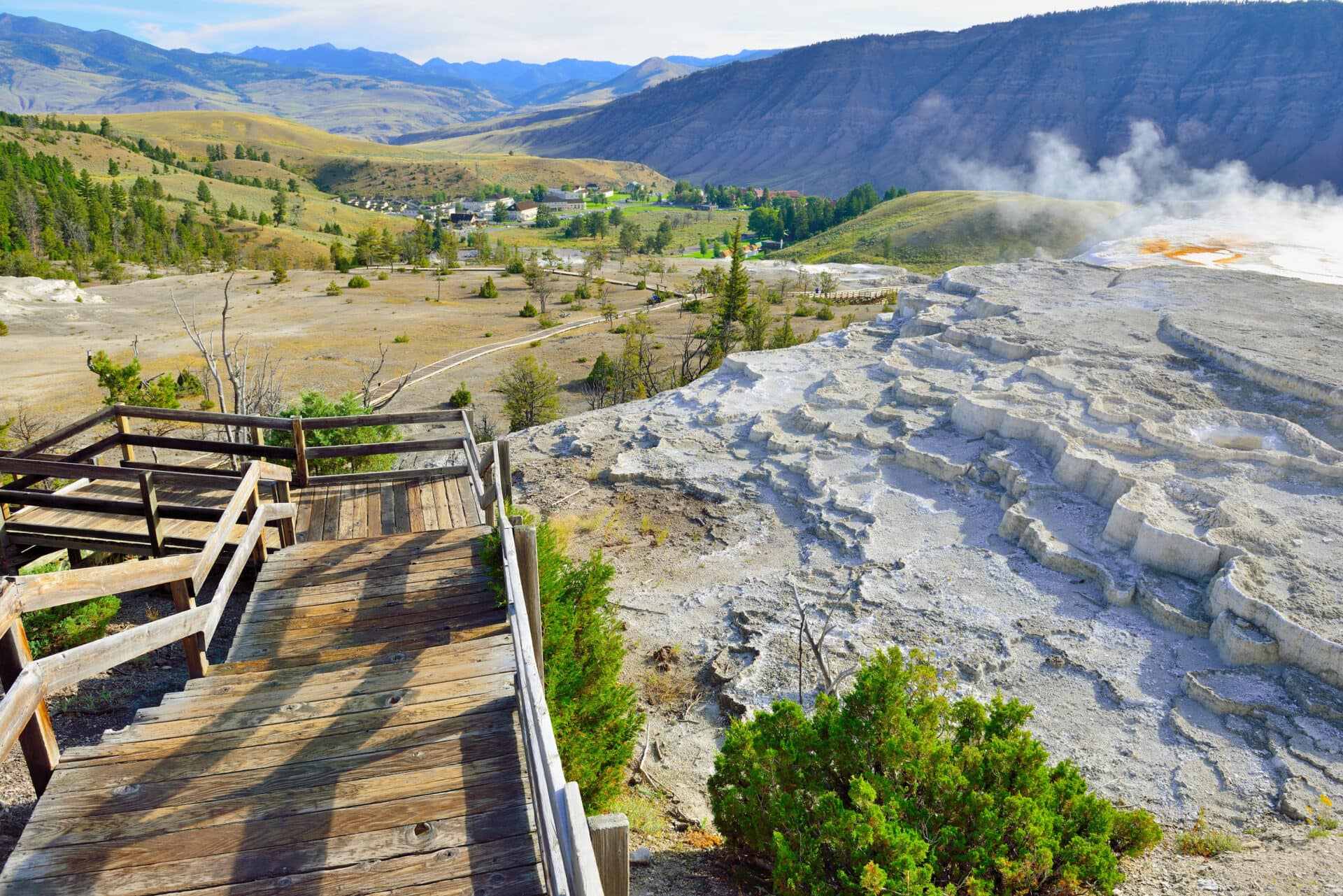
Mammoth Hot Spring Terrace Trails

West Thumb Geyser Basin Trail

Lone Star Geyser Trail

Fairy Falls
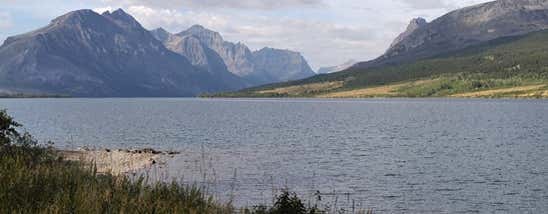
Beaver Ponds Loop Trail

Seven Mile Hole Trail

Specimen Ridge

Dunraven Pass

Avalanche Peak Hike
Where to stay in and around yellowstone national park.
There are numerous places to stay inside Yellowstone, the most iconic being the Old Faithful Inn . The largest log structure in the world, the inn has an unbeatable “fountain” in its front yard—its namesake geyser—along with 327 guest rooms, a rustic seven-story lobby built around a massive stone fireplace, and a restaurant and lounge.
The Old Faithful Inn is just one of the nine lodges in the park. The others are the Canyon Lodge and Cabins , Grant Village Lodge , the Lake Hotel and Cabins , Mammoth Hot Springs Hotel and Cabins , the Old Faithful Lodge , the Old Faithful Snow Lodge , and the Roosevelt Lodge . Most are rustic-style facilities offering lodging in hotel rooms or cabins. Only the Old Faithful Snow Lodge and the Mammoth Hot Springs Hotel are open during the winter.
You’ll find a more diverse selection of accommodations in the gateway communities outside the park, including Gardiner and Cooke City in Montana, and West Yellowstone, Cody, and Jackson Hole in Wyoming. Cody, while farthest from the park, has the most places to stay.
Lodging Choices Outside of the Park
West Yellowstone
Explorer Cabins : Pet-friendly cabins that are ideal if you’re looking to avoid sharing a wall with your neighbors.
WorldMark West Yellowstone : Great choice if you need a larger space with a full kitchen.
Yellowstone Park Hotel : A well-maintained basic hotel with an indoor pool and hot tub.
Springhill Suites Island Park : Just outside West Yellowstone, this Marriott property has the feel of a modern lodge and overlooks the river feeding into Island Park Reservoir.
Under Canvas Yellowstone : An upscale glamping resort that offers numerous tent styles and amenities. This resort is located just outside of the West Yellowstone entrance.
Three Bear Lodge : Downtown hotel with cozy common areas that’s been welcoming guests since the 1930s.
Kelly Inn West Yellowstone : The closest hotel to the West Entrance to Yellowstone National Park has a pool, free breakfast, and free parking for guests.
1872 Inn : A rustic exterior conceals a luxury boutique hotel for adults only.
Kimpton Armory Hotel : A four-star hotel with a music hall, fine-dining restaurant, and accommodations within Bozeman’s landmark Armory building.
The Lark Bozeman : Boutique hotel with fun outdoor spaces and uniquely decorated modern rooms.
Yellowstone Gateway Inn : A family favorite for its upscale apartment-style suites with full kitchens.
Absaroka Lodge : Motel made special by rooms with decks overlooking the Yellowstone River.
Bill Cody Ranch : Go old-school with a stay at an all-inclusive, authentic Wyoming dude ranch.
Chamberlin Inn : Boutique inn with a charming back garden and a history: Ernest Hemingway once stayed here, and the original proprietor, Agnes Chamberlin, worked for Buffalo Bill Cody at the Cody Enterprise newspaper.
Irma Hotel : Built by town founder Buffalo Bill Cody in 1902 and named for his daughter Irma. Sidle up to the bar gifted to Cody by Queen Victoria.
Holiday Inn Cody : Basic but comfortable rooms with a great Sheridan Avenue location, within walking distance of most of the town’s restaurants and attractions.
The Cody Hotel : Luxury hotel located a short distance from Cody’s Rodeo Grounds and Old Trail Town.
Camping—whether in established campgrounds or in the backcountry—is another great way to experience the beauty of Yellowstone without having to drive back and forth into the park every day of your visit. The park has a dozen campgrounds and more than 2,000 campsites—some for RVs, others for tents only. Campgrounds are located in all corners of the park.
Backcountry camping is a great way to see the wild side of Yellowstone, and the park maintains 293 backcountry camping sites for stays of one to three nights. Permits are required for all overnight stays in the backcountry.
Given the sheer size of Yellowstone, it’s not ideal to stay outside the park, simply due to how much time you’d be spending in the car. That said, the most convenient area to stay outside the park is West Yellowstone, which is about a 30-mile or 1-hour drive from Old Faithful.
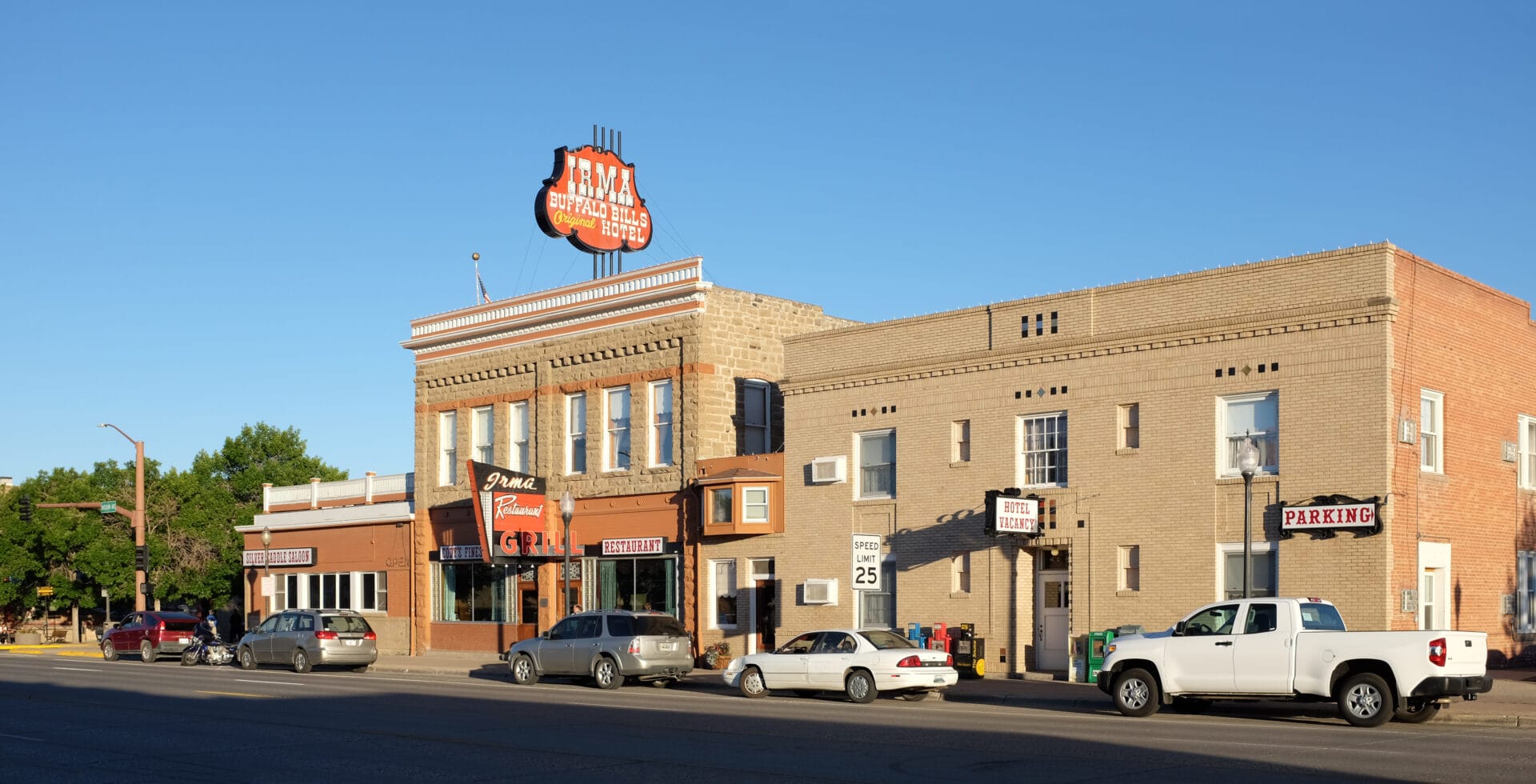
Old Faithful Inn
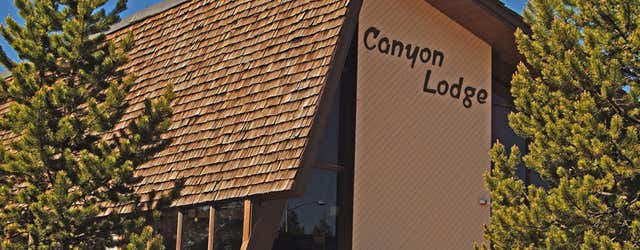
Canyon Lodge & Cabins
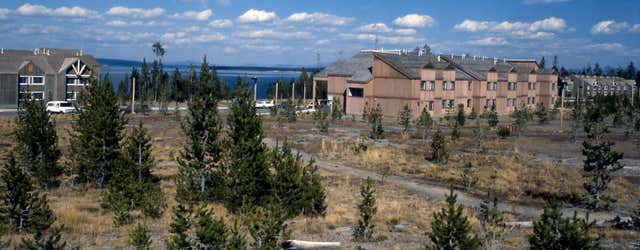
Grant Village Lodge
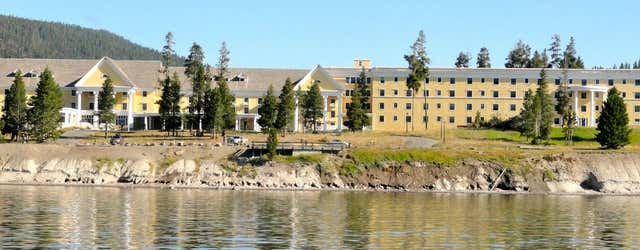
Lake Yellowstone Hotel and Cabins

Mammoth Hot Springs Hotel & Cabins

Old Faithful Lodge Cabins
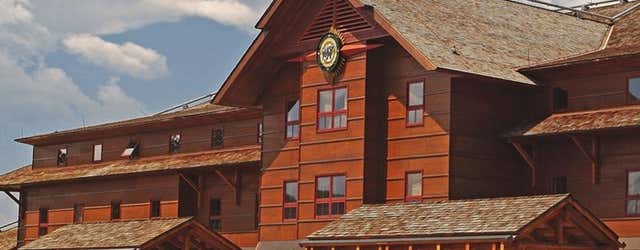
Old Faithful Snow Lodge

Roosevelt Lodge & Cabins
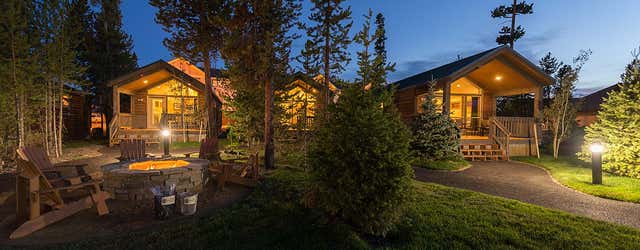
Explorer Cabins At Yellowstone
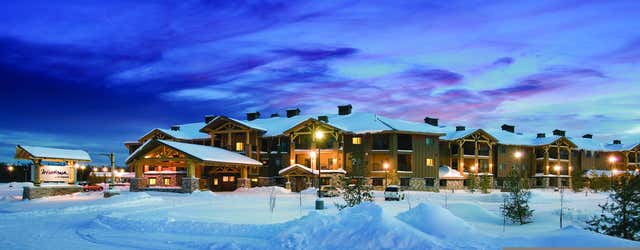
WorldMark West Yellowstone
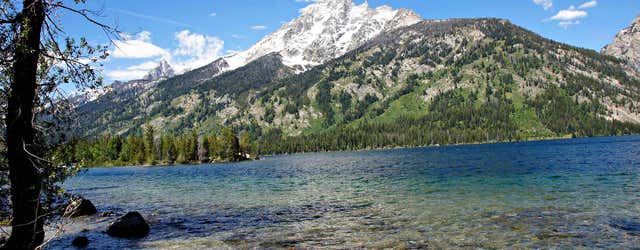
Yellowstone Park Hotel

Three Bear Lodge
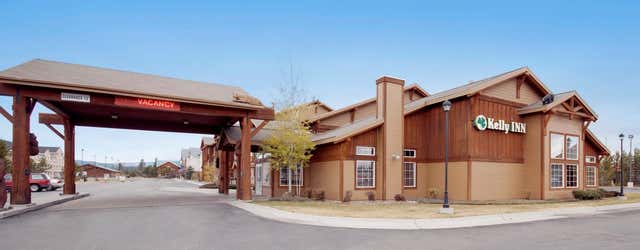
Kelly Inn West Yellowstone

Kimpton Armory Hotel Bozeman

Yellowstone Gateway Inn

Absaroka Lodge
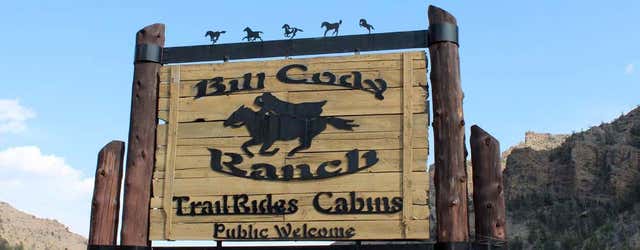
Bill Cody Ranch
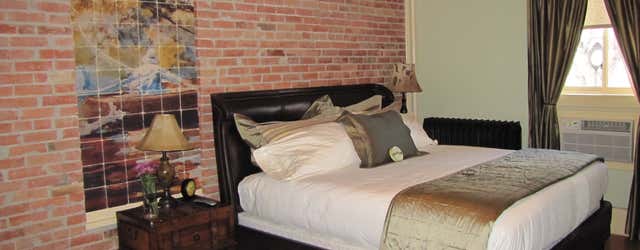
Chamberlin Inn
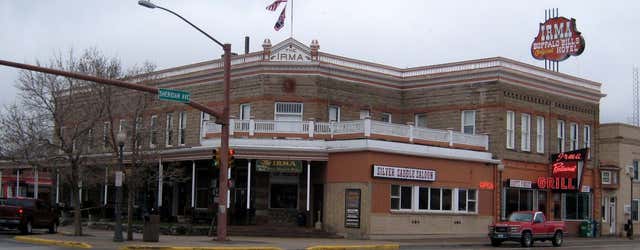
Buffalo Bill's Irma Hotel Restaurant & Saloon
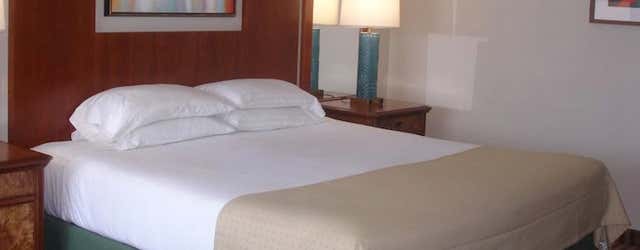
Holiday Inn Cody-At Buffalo Bill Village
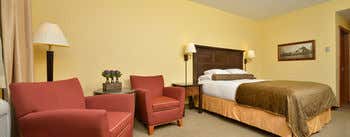
The Cody Hotel
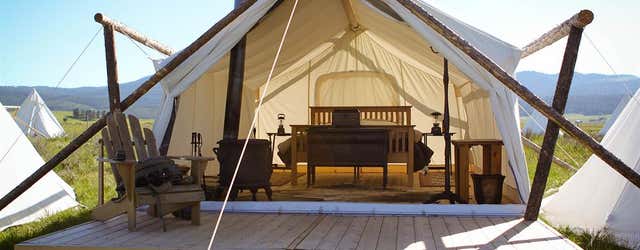
Yellowstone Under Canvas
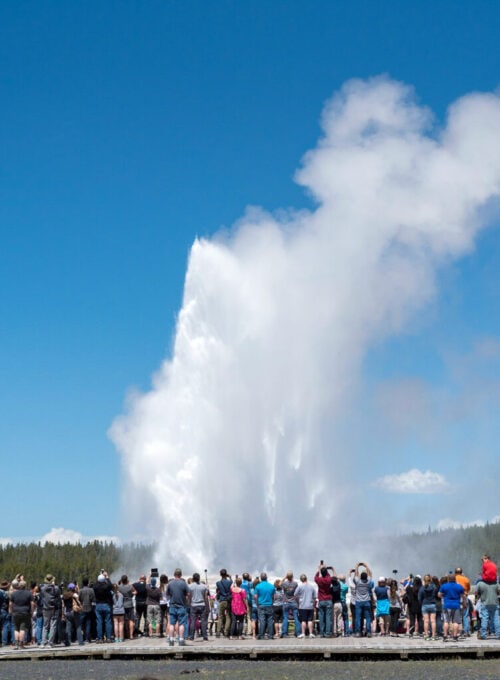
Where to eat in and around Yellowstone National Park?
If you’re in Yellowstone and love ice cream, you’re in luck: There are no fewer than eight ice cream vendors in the park. Of course, that’s not your only dining option. Everything from grab-and-go food to fine dining can be found in the park’s hotels and lodges, including the beautiful dining rooms at the Old Faithful Inn, the Old Faithful Snow Lodge, and the Roosevelt Lodge; the Lake House Restaurant on the shores of Yellowstone Lake in Grant Village; and the casual Wylie’s Canteen at the Lake Lodge. All told, the park has 19 restaurants, cafés, and bars.
Outside the park are many more options, including:
K-Bar : Popular local pizza joint.
Tumbleweed Bookstore and Cafe : A bookstore that serves three meals daily.
Cody Steakhouse : Big, juicy steaks plus seafood, wings, and more.
Irma Hotel : This restaurant serves three meals daily and is known for its prime rib.
Trailhead Bar : Restaurant with a lively bar scene, wood-fired pizza, and fresh fish shipped in from Seattle.
Pat O’Hara Brewing Company : Craft brewery with Irish food.
Nova Cafe : Popular breakfast spot in downtown Bozeman.
Montana Ale Works : Locally sourced food and drinks served in a historic railway building.
South 9th Bistro : French and American cuisine served in Bozeman’s top-rated restaurant.
Canyon Street Grille : ’50s-style diner with handcrafted burgers and milkshakes made from scratch.
Las Palmitas : Tacos and Mexican grub served out of a big white bus on Canyon Street.
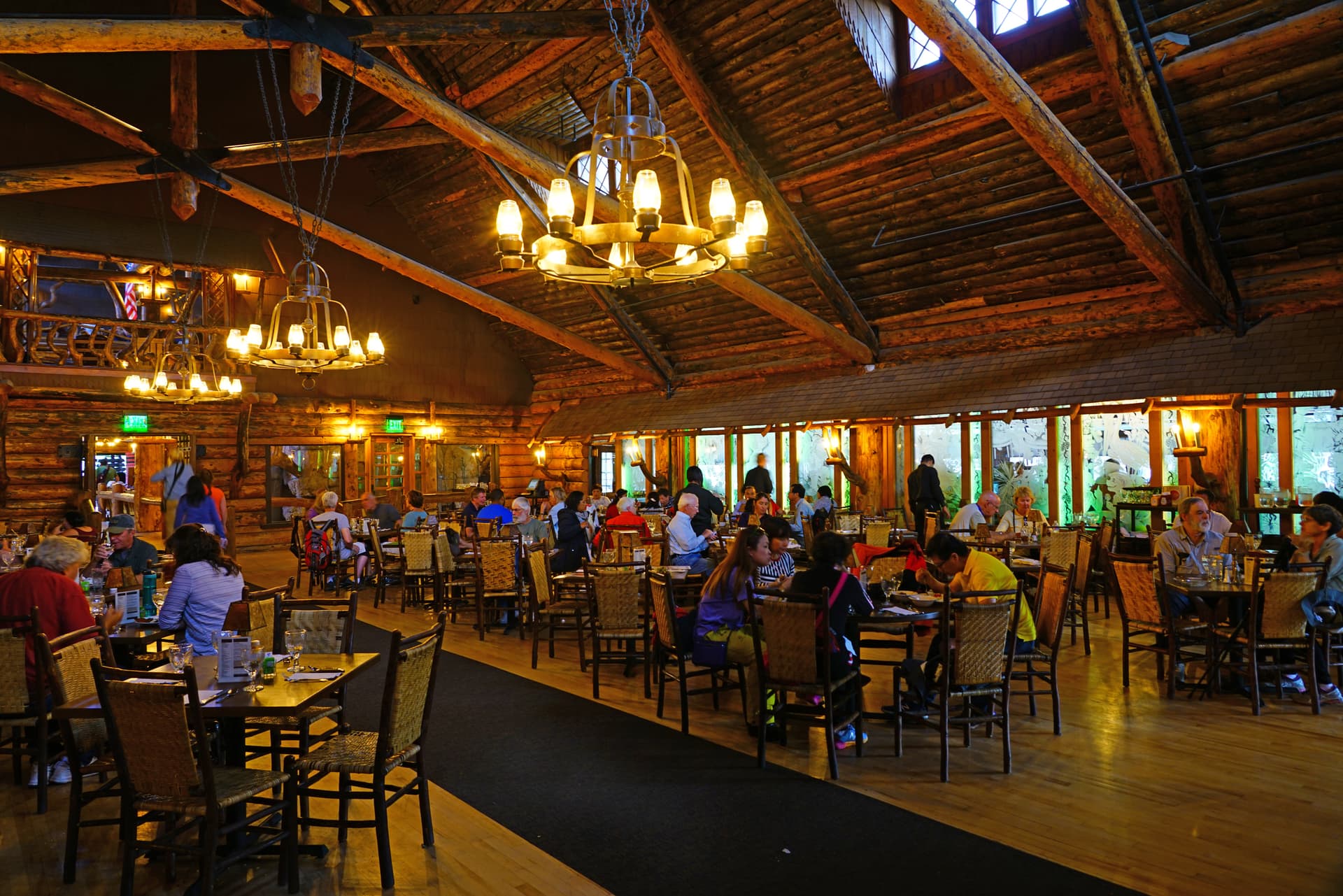
Don’t miss out on a beer or the drink of your choice at the Old Faithful Inn, a refreshing addition to the unforgettable experience of watching the geyser erupt from the porch.
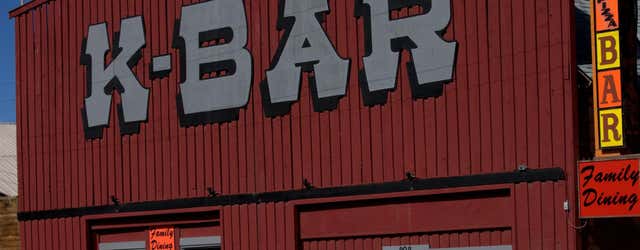
Tumbleweeds Bookstore and Cafe

Cody Steak House

Trailhead Bar

Pat O'hara Brewing Company
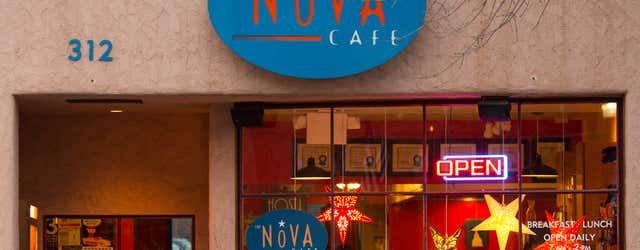
The Nova Cafe
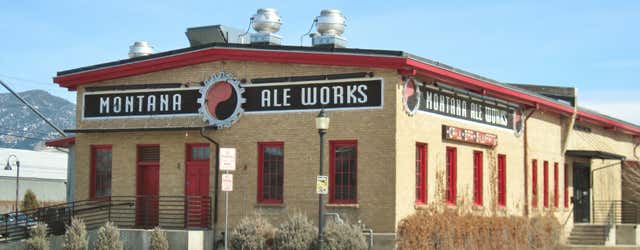
Montana Ale Works

South 9th Bistro

Canyon Street Grill

Las Palmitas
How many days should you plan to spend in yellowstone national park.
Any discussion of how long to stay in Yellowstone has to include the time it takes to travel from one part of the park to another. The time driving between the “must-see” attractions can be significant: Old Faithful to Mammoth Hot Springs is a 50-mile, 1.5-hour drive, for example. Budgeting enough time to stop and see the interesting sites along the way makes the difference between experiencing the wilderness from the driver’s seat or immersing yourself in it.
If your plan is to make a comprehensive circuit of the park’s main roads, stopping to read exhibits, attending ranger programs, and taking hikes along the way, figure on a minimum of 3 days in the park—preferably staying in the park.
If you only have one day to visit, your best bet is probably to visit the attractions in the vicinity of the West Entrance. Coming into the park via West Yellowstone will put you close to Old Faithful and Lower, Midway, and Upper Geyser Basins. The drive from West Yellowstone to West Thumb Geyser Basin is only an hour with no stops, so you can also work a glimpse at Yellowstone Lake into a day trip while still allowing time to make some of those other must-do stops along the way. If you have time on the way back, you can also take the 14-mile drive from Madison to Norris Geyser Basin and Steamboat Geyser.
Making sure you have enough time to experience the park basically comes down to deciding how much of your time you want to spend in your vehicle, since you’ll have to drive to get just about anywhere.
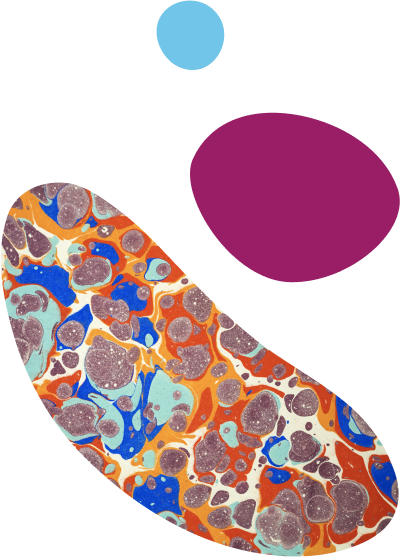
Plan Your Trip Now
Discover the most incredible people, places, and experiences worth the detour. Click below to start your trip to Yellowstone National Park or enter a starting point . Click below to start your trip from to Yellowstone National Park.
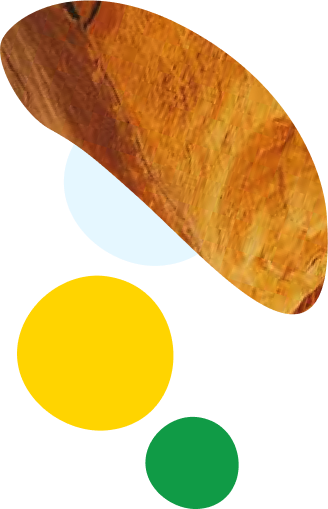
- Trip guides
- Trip Planner
- Sign up Log in Sign out
- Log in Sign out
- ROADTRIPPERS MEMBERSHIP
- RV RESOURCES
Plan your journey, find amazing places, and take fascinating detours with our app.
We couldn't find an existing Roadtrippers account using that service. Please try signing in with another option or create a new account with Roadpass.
We need your email address to send you trip itineraries and other updates.
The Perfect Yellowstone Itinerary for Your Next Trip
Whether you're with the kids, on a girlfriend's getaway, or flying solo, this travel guide hits all the high spots.
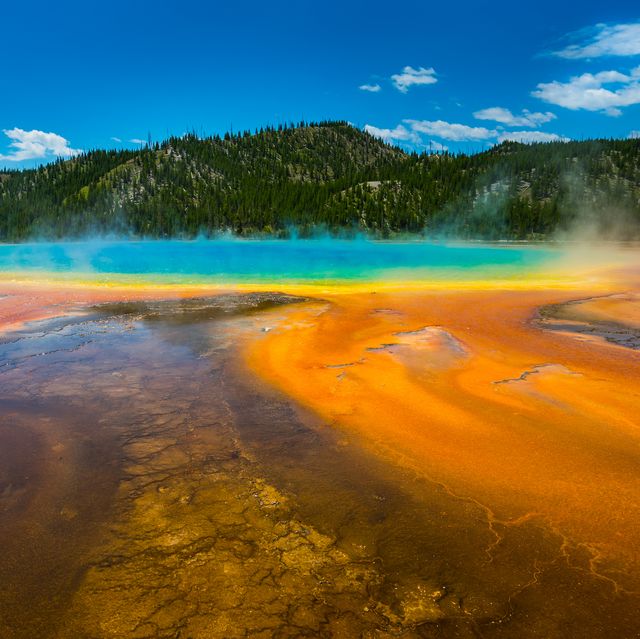
Country Living editors select each product featured. If you buy from a link, we may earn a commission. Why Trust Us?
In general, this schedule provides a well-rounded mix of outdoor and cultural pursuits, a lot of scenic drives and even a bit of pampering. You'll probably notice as much time is spent outside of Yellowstone's borders as within them. For most folks, this is a once-in-a-lifetime journey, so I advise seeing as much of the surrounding sights as possible. I promise you'll regret it forever if you miss Cody and Jackson Hole , not to mention the showstopping Grand Teton National Park .
A word on timing your trip. The world's first national park is open year-round, but come winter all but two of the lodging options close, along with most other facilities, entrances, and roads. And while it doesn't bring in the hordes that Great Smoky Mountains National Park does, Yellowstone can get crowded in the summertime, especially around popular sites with boardwalks, like Old Faithful and Mammoth Hot Springs.
If you have kids, consider booking your vacation as close to the shoulder season as possible, like late August, right before school starts, or the beginning of June, immediately after it ends. The weather can be brisk in early summer, with snow still piled high on the mountain peaks, but pulling on outerwear is worth it to have the park mostly to yourself, as I often did. Otherwise, I hear Yellowstone is also wonderful in September. And if you want to stay in the park's lodging, plan early! Reservations open 13 months in advance and fill up fast.
My Yellowstone Itinerary
- Day 1 : Depart Sheridan for Cody. Explore Buffalo Bill Center of the West. Overnight at Irma Hotel.
- Day 2: Raft with Wyoming River Trips. Attend Nite Rodeo. Overnight at Irma Hotel.
- Day 3: Depart Cody for Yellowstone National Park. Explore Yellowstone National Park. Overnight at Mammoth Hot Springs Hotel and Cabins.
- Day 4: Explore Yellowstone National Park. Overnight at Old Faithful Inn.
- Day 5: Depart Yellowstone National Park for Jackson Hole. Trail ride with Jackson Hole Pack Trips. Overnight at Spring Creek Ranch.
- Day 6: Paraglide with Jackson Hole Paragliding. Massage at Teton Mountain Lodge & Spa. Overnight at Spring Creek Lodge.
- Day 7: Depart Jackson Hole Airport.
Day 1: Depart Sheridan for Cody ➡ Explore Buffalo Bill Center of the Wild West ➡ Overnight at Irma Hotel
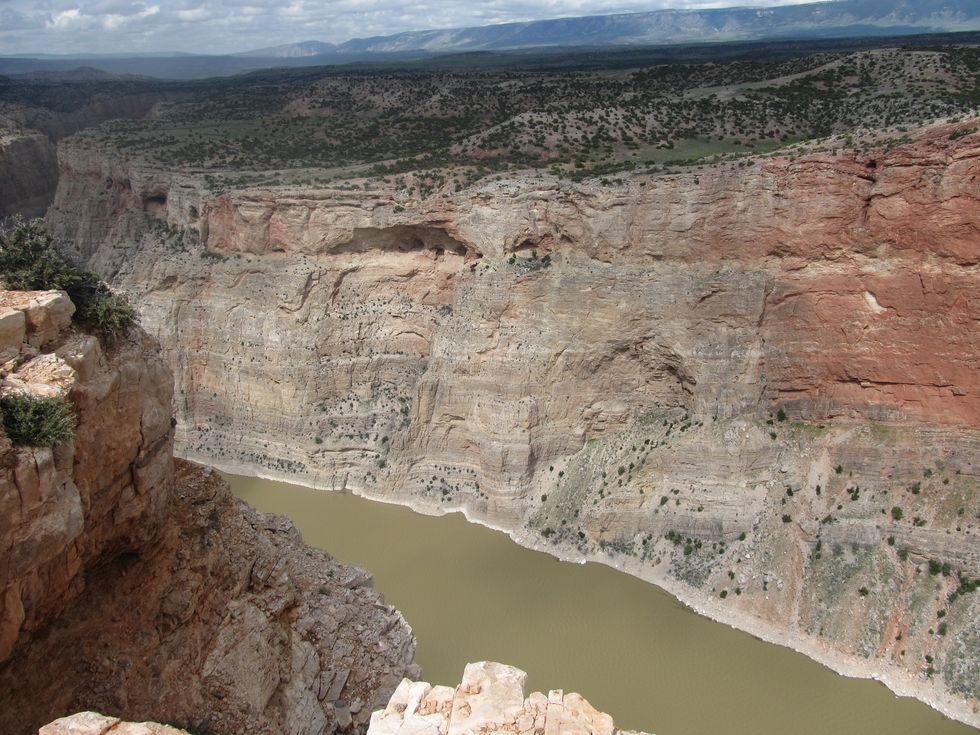
Driving Distance Sheridan to Cody: About 145 miles
There are several airports you can fly into that will get you close to Yellowstone, and which one you should choose depends on what entrance you'll be using to access the park. They include Bozeman Yellowstone International Airport , which is about a 90-minute drive from the North Entrance and two hours from the West Entrance ( Yellowstone Airport is located about 10 minutes from the West Entrance, but it's smaller and offers fewer flights); Yellowstone Regional Airport , which is near Cody and an hour from the East Entrance; and Jackson Hole Airport , which is located inside Grand Teton National Park and an hour from the South Entrance.
I actually didn't utilize any of those airports coming into Wyoming but instead started my Yellowstone adventure in Sheridan, a lovely and historic cow town where I stayed with friends for a few days. After picking up my rental car bright and early, I hit the road via Route 14. The highway climbs into the Bighorn Mountains, rambling through pine forests in lower elevations fog-laden and mysterious, past peaks drenched in snow and sunshine. The drive took me into Bighorn Canyon National Recreation Area , a must-see stop, with 1,000-foot-tall cliffs towering high above a meandering river.
Located less than two hours from Cody , Pryor Mountain Wild Horse Range is also definitely worth a detour if you're staying in the town. I was able to easily spot the mustangs, said to be of Colonial Spanish American heritage, from the road. Strong and stout, with gleaming coats and incurious gazes, these iconic symbols of the American West were so beautiful they brought tears to my eyes. Full-day tours to see the horses are available from the guide service PryorWild and depart from the Pryor Mountain Wild Mustang Center in Lovell.
Fair warning: it isn't easy to tear yourself away from the jaw-dropping natural splendor within and surrounding Yellowstone. You're going to want to build in time to linger over the landscape into your itinerary. By the time I made it to Cody, I was running a little late, so I headed straight to Buffalo Bill Center of the West . I’d been told to plan to spend hours touring it, but I was still amazed by its size.
Five museums in one, the Center houses the Cody Firearms Museum, the world’s finest collection of American guns; the Whitney Western Art Museum, a rousing exhibit of Western art; the kid-friendly Draper Natural History Museum, devoted to Yellowstone’s flora and fauna; the Plains Indians Museum, a beautifully-realized exploration of this country’s original peoples; and the Buffalo Bill Museum, which traces the life of the American legend. I was probably most intrigued by the Whitney and its magnificent portraits of the animals I was hoping to encounter in Yellowstone.
By the time I checked into Cody's celebrated Irma Hotel I was tuckered out, although I still made time to head to the property's restaurant for the house specialty: juicy and tender slow-roasted prime rib. Built in 1902 by Wild West showman Buffalo Bill Cody and named for his daughter, the Irma today retains its charm and character. That's particularly true of the dining room, which still sports the famed cherrywood bar given to Cody by Queen Victoria. After my meal, logy from the long day, I was happy to retire early to my room, which was simple but comfy.
Day 2: Raft with Wyoming River Trips ➡ Attend Nite Rodeo ➡ Overnight at Irma Hotel
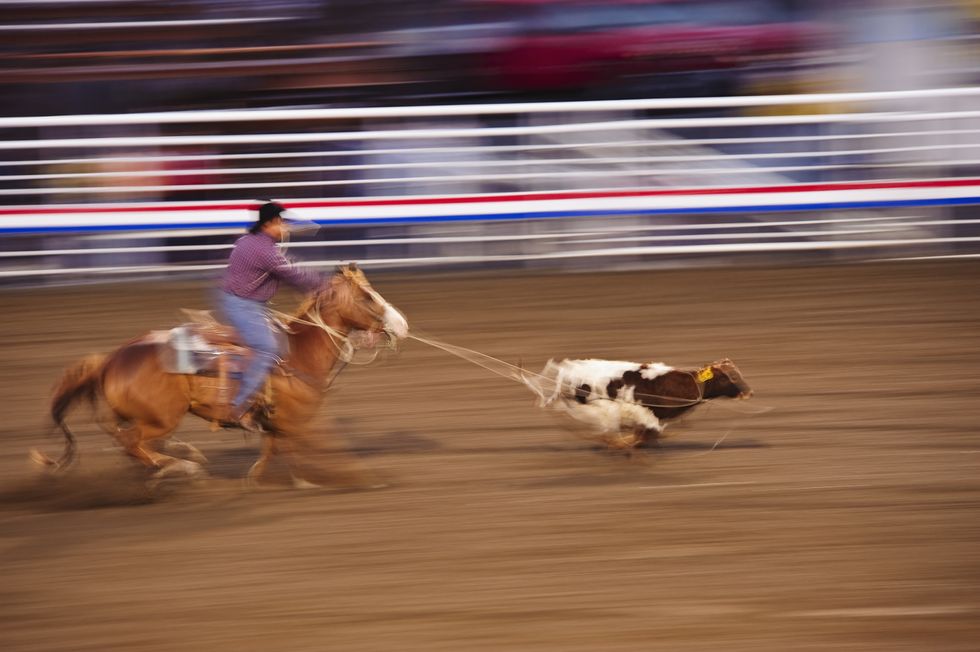
Because I'd been up so early on my big travel day, I slept in a bit the morning of Day 2. After a stroll through the Downtown Historic District, I took off for Wyoming River Trips . Family-owned since its inception in 1978, the company serves up a range of rafting and kayaking options. I opted for the three-hour Full Canyon Rafting Adventure, which was the perfect way to ease into my trip. The sun, shining down from boldly blue skies, was warm, even if the water was chilly. Not that there was too much splashing happening. The 12-mile section of Shoshone River we paddled was low-key, with Class I and II rapids, the mildest of the standardized whitewater classification system.
There was plenty of time to take in the magnificent Red Rock Canyon surrounding us—a sight I'd expect to see in southern Utah more than eastern Wyoming—and to chat with our affable guide, who was happy to answer my questions about the area’s wildlife. (Among other facts, I learned definitively that Yellowstone is filled with bison, not buffalo, and the latter do not feature humps.) This trip would absolutely be appropriate for families, as long as the littles weigh at least 50 pounds.
Speaking of family fun, the Cody Nite Rodeo , which kicks off every evening from June through August at 8 p.m., is ideal entertainment for all ages. The night I went it was packed with cheering people from age two to what looked like 92. Children can get their faces painted by rodeo clowns, learn to rope and even participate in the hilarious Calf Scramble, which involves chasing a couple of baby cows around the arena and trying to pull the ribbons off of their tails.
Founded in 1938 by a former performer in Buffalo Bill Cody's Wild West Show, the Cody Nite Rodeo is said to be the world's longest-running nightly summer rodeo. It's a much-loved, authentic and action-packed outdoor event frequented by locals and vacationers alike, chock full of true blue Wild West cowboy mystique. For two hours I sat munching on popcorn as I watched bull riding and steer wrestling, team roping and women’s barrel racing. I groaned at the clown’s corny jokes, gasped at the spills the bareback riders took and felt truly grateful that I had a chance to attend this most wonderfully American of competitions.
Day 3: Depart Cody for Yellowstone National Park ➡ Explore Yellowstone National Park ➡ Overnight at Mammoth Hot Springs Hotel and Cabins
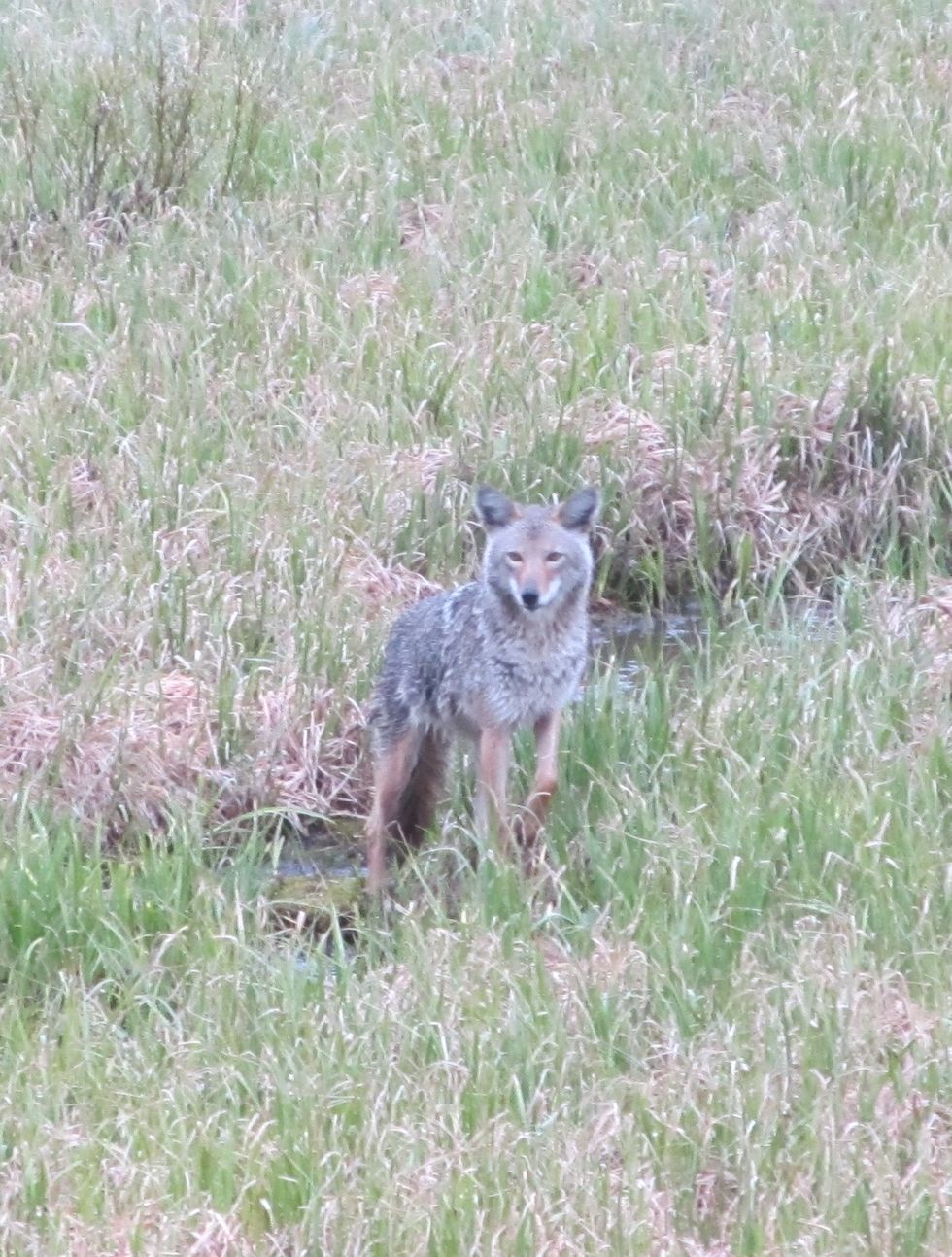
Driving Distance Cody to Yellowstone Northeast Entrance: About 80 miles
Following another sublime night's sleep at the Irma, I was up before daybreak to head to Yellowstone . I'd decided to use the park's Northeast Entrance at Cooke City, Montana, rather than the East Entrance, which is closer to Cody by about 25 miles. I'd been told by locals that the Northeast gate experiences even less traffic than the East gate, and provides the best chance to see some of the park's celebrated animal population. If, that is, I got there bright and early. So bleary-eyed, I headed off in my rental down the Chief Joseph Scenic Byway, hoping that waking before dawn's early light was going to pay off.
It did. The sun hadn't been up for too long as I handed my $35 vehicle fee to the ranger at the gate. Upon entering the park I was rewarded almost immediately with a sight that made me gasp aloud: a mother moose tending her baby. They weren't far from the road, but I might have missed them if not for a photographer standing beside his truck. He told me he'd seen this same female yesterday, without the calf—the newborn was just a day old. I watched them for what felt like hours before I resumed my journey, keeping my eyes peeled as I entered the Lamar Valley. Dubbed the American Serengeti for its copious amounts of wildlife, it's home to grizzly bears and wolf packs.
I didn't spot either species, but as I spent that first day in the park slowly motoring around the Upper Loop road, I saw an unbelievable array of animals. From the bison lumbering past my car and elk trotting alongside the road, to the coyotes frolicking in a pasture and the black bear munching vegetation, it was a veritable parade of critters. I suppose Yellowstone's 2.2 million acres are as well-known for their geothermal activity as their wildlife, but what I most cherished about my time there was the opportunity to see the West's most majestic beasts in their native environment. Unlike so much in life, Yellowstone lives up to the hype.
That's not to say Yellowstone's landscape didn't appeal to me. The Upper Loop, a 142-mile track that makes up the northern half of Yellowstone's historic Grand Loop Road, includes access to Tower Fall. The waterfall dramatically plunges 132 feet and is surrounded by pinnacles formed by ancient lava flow. It was breathtaking, though I found the Yellowstone River's Grand Canyon even more impressive. Measuring 20 miles long and more than 1,000 feet deep, it's home to two waterfalls. There are loads of trails that wind along and down into the canyon, but I stopped at Artist Point, which provides a picture-perfect view of the 308-foot Lower Falls.
I would have liked to explore the area more, but I needed to check in to Mammoth Hot Springs Hotel and Cabins . Renovated a few years ago to the tune of $30 million, the hotel, which mostly dates to 1936, is surprisingly sleek and modern. After dropping my luggage off in my room, I headed for a drink at the Map Room Bar, where I was greeted by the sight of the watering hole's namesake stretching across the wall. According to the bartender, the massive map of the U.S. was crafted in 1936 from more than 2,500 inlaid pieces of 15 different kinds of wood. But my cocktail sunk me: I could barely keep my eyes open over my plate of mushroom pasta in the dining room. I was back up to my room and in bed by 9.
Day 4: Explore Yellowstone National Park ➡ Overnight at Old Faithful Inn

My early night paid off in an early morning, and before heading south toward Old Faithful, I took a long stroll through Mammoth Hot Springs , an otherworldly network of hydrothermal features and naturally occurring terraced travertine deposits. The boardwalk made for an easy walk, and I enjoyed the slightly foreboding vibe of the site, which was dotted here and then by dead trees, blackened and skeletal, and ethereal mists rising from the earth. There weren't many people there, probably because it was so early in the day, which made the whole experience a little more eerie. Aside from the Lamar Valley, I think this was my favorite part of the park because it was totally unlike any place else I'd ever experienced.
I spent the rest of the day driving south toward Old Faithful , stopping at sites that interested me. That included a lot of geysers—after all, Yellowstone protects about half the world’s active geysers—like the ones in the Norris Geyser Basin. Tucked away where the western Upper and Lower Loop meet, it's said to be the oldest thermal zone in the park and, at more than 450 degrees Fahrenheit, the hottest one, too. I found the Norris Museum, which was built in 1930 and acts as a sort of gateway to the basin, worth a peek for its exhibits explaining the ins and outs of geothermal activity.
Most beautiful of all was Grand Prismatic Spring, which lies within the Midway Geyser Basin , further south on the Lower Loop. Eye-popping orange on the perimeter, it morphs into yellow, green, and turquoise before opting for a deep, rich blue in the center. Along with its colors, what struck me immediately was the sheer size of it: it's 370 feet across. A boardwalk gets you close (but not too close). There are other pools and a geyser at the basin, but for me, they couldn't compare to Grand Prismatic Spring. It was the undisputed star of the show.
By the time I reached Old Faithful, I was ready to call it a day. Luckily, the geyser only kept me waiting for about 10 minutes. According to a ranger I talked to, it blows its stack roughly every hour and a half for as long as five minutes, reaching an average of 130 feet in height. The eruption I saw didn't seem as high or as long, but it was fun to see. Afterward, I dropped by the Old Faithful Visitor Education Center , which was loaded with info about the geyser, as well as the Yellowstone supervolcano. It's an extremely kid-friendly facility, with a dedicated room for "Young Scientists" featuring hands-on displays.
Next, it was on to the Old Faithful Inn , built in 1903-1904 of locally sourced pine and stone. One of the largest log buildings in the world, it's a National Historic Landmark and the most popular lodging in Yellowstone. The lobby is immense, rising more than 70 feet high, and after I checked in I came back to sit and people-watch in front of the monolithic stone fireplace. The inn has an onsite deli, so I grabbed a quickie sandwich to save some cash and then headed back to my room.
I was staying in the Old House, the original part of the hotel, so in addition to no air conditioning, wifi, or television (all fine by me), there was no private bathroom. Although I didn't love getting up in the middle of the night to walk down the hall to the communal facilities, the room, with its rustic log walls, was so charming it was worth the inconvenience. (Some rooms in the Old House do feature bathrooms, which might be a better choice for families with small children.)
Day 5: Depart Yellowstone National Park for Jackson ➡ Trail ride with Jackson Hole Pack Trips ➡ Overnight at Spring Creek Ranch
Driving Distance Old Faithful Inn to Jackson: About 95 miles

It was another early morning as I hit the road to Jackson along the John D. Rockefeller Jr. Parkway. I was sorry to leave Yellowstone, but the drive south cut through Grand Teton National Park , and the scenery, to my astonishment, was even more dazzling than what I'd seen the past several days. Spreading out before me rose the young range of the Rockies that are among the most photographed mountains on the planet. The jagged, snow-drenched peaks were so magnificent that I pulled the car over and just sat for a spell, dumbfounded. I was making good time, however, so I had time for a quick wander around Jackson.
I headed for the Town Square, where a chatty resident answered a question for me: Jackson is the chichi town I was currently exploring. Jackson Hole , the name I'd heard bandied about most, is the 50-mile-long valley in which it perches so prettily. After a gander at the park's beloved entryway arches, made of hundreds of elk antlers gathered by Boy Scouts from the nearby National Elk Refuge, I headed to the Million Dollar Cowboy Bar across the street. The establishment is famous for its live music—everyone from Willie Nelson to Waylon Jennings has played there—but I contented myself with a peek at the saddle bar stools and a pricey (but decent) burger.
I needed to fortify myself, because up next was a trail ride with Jackson Hole Pack Trips and Trail Rides, which I understand is now closed. (I'd recommend Willow Creek Trail Rides , which provides rides through the same area and welcomes kids 8 and older, instead). After meeting my guide, Bob, at the Willow Creek Trailhead, we begin our journey into the Bridger-Teton National Forest . It had begun to rain, but the landscape was so magnificent I didn't care a bit. Through meadows dotted with silvery sagebrush we climbed, into aspen groves and piney woods, the Tetons standing silent guard.
Eventually, seeing my joy at riding past slopes dotted by elk, under skies graced by red-tailed hawks, Bob asked me if I’d like to cross Willow Creek, swollen with rain. I agreed and we forded it once, then, thrillingly, again. The current was strong, the water high, but my horse’s steps were sure and I never felt unsafe. Finally, after hours, our ride came to an end. Exhausted, wet and sore, I'd just spent one of the best afternoons of my life. I thanked Bob and took off for Spring Creek Ranch , where I was spending the last two nights of my trip.
Tucked away on a wildlife sanctuary above Jackson, the property features posh inn rooms, townhouses and mountain villas. I'd splurged and chosen the latter, which, with multiple bedrooms, would be ideal for a family. The view from the upper deck of my villa alone made the price worth it, with the verdant valley spread out below me, the Grand Tetons soaring beyond. Cool as the night was, I slept with my windows open to experience the fresh, fragrant mountain air as it blew down from the higher elevations on its way into Jackson Hole.
Day 6: Paraglide with Jackson Hole Paragliding ➡ Massage at Teton Mountain Lodge & Spa ➡ Overnight at Spring Creek Ranch
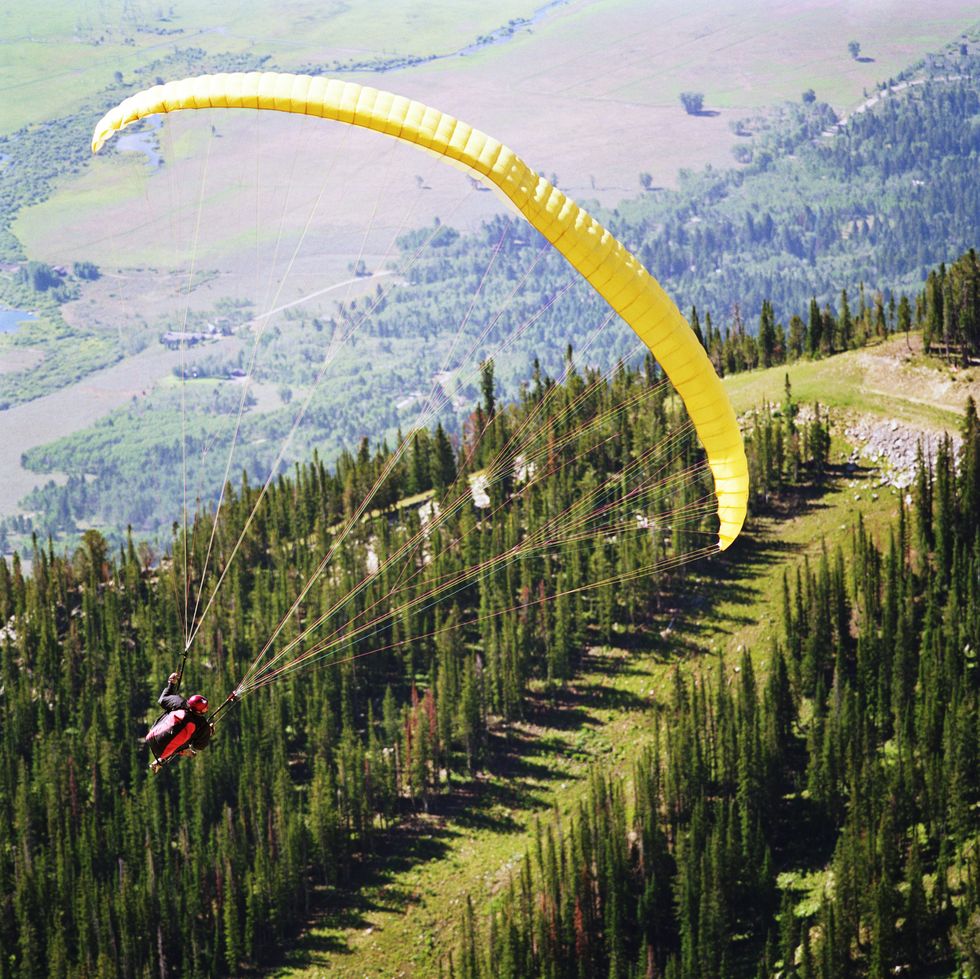
I awoke in pretty much the most beautiful place I've ever been, in the most luxurious bed I'd ever experienced, but my mood was still tinged with sadness. It was the last of my amazing trip—though one final adventure awaited. That morning I was going to fly with Jackson Hole Paragliding . It was something I’d never done before: strap myself to a professional paragliding pilot and jump off a perfectly good mountain. And that first step was going to be a doozy: 3000 vertical feet more or less straight down.
I met up with Scott, my pilot, and we took his truck up the switchback trail behind Jackson Hole Mountain Resort. After placing a helmet on my head, he tucked me into my harness as the parachute was unfurled behind us. Scott explained that when the time came, I needed to stride firmly toward the edge of the drop. The chute, he said, would fill with wind, pulling us into the sky. When he noticed me shaking, he suggested I take some deep breaths. I did, and it helped calm my anxiety. A little.
And then almost before I knew it we had lifted off and I was in the air, thousands of feet above the earth. I screamed with more joy than fear as Scott guided us over the valley. It was surprisingly peaceful—at least until he began turning us in tight spirals. It was like riding the fastest, highest merry-go-round in the world, and just when I thought I wouldn't be able to stand it anymore, he pulled us out of it and we gently landed. Scott asked me what I thought and, not exaggerating a bit, I hollered, “I want to do it again!”
But I couldn't, because it was time for my massage at Teton Mountain Lodge & Spa . If there is a more perfect combination than following up paragliding with a pampering massage, I don’t know what it is. I'd booked an hour-long Noble Massage, which combined elements of Swedish and deep tissue techniques. Under my therapist’s capable hands, the adrenaline faded, slowly replaced with deep calm. It was the ultimate in pleasure—moving from exquisite tension to total tranquility—and the best way I think I could have ended my Yellowstone adventure.
Day 7: Depart Jackson Hole Airport
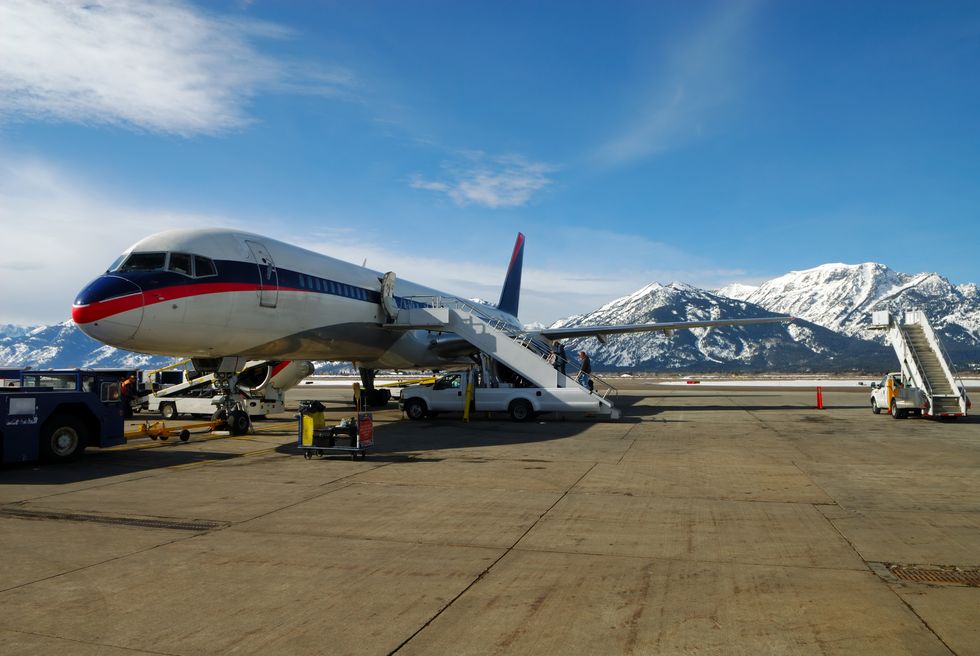
Driving Distance Spring Creek Ranch to Jackson Hole Airport: About 12 miles
It's a straight shot north to Jackson Hole Airport from Spring Creek Ranch, a trip that only takes about 20 minutes. The airport itself, the only one located within a national park, provides non-stop service to and from destinations like Dallas, Denver, Los Angeles, and Newark, depending on the season. It is as upmarket as the rest of Jackson Hole, with plenty of exposed wood and stone, plus fireplaces and leather chairs in the waiting areas. I especially got a kick out of the big sign reminding passengers to get rid of their bear spray before entering security (there are two recycling stations specifically for cans of the stuff, too).
As my plane pulled away from the gate, I thought about my trip, which even then I knew had changed me. Part of it was simply successfully navigating the challenges, and joys, of a week-long road trip through the Wild West alone. Although the expedition went surprisingly smoothly, I had no one to depend on but myself if I ended up lost, ran out of gas, or got a flat tire. I felt a little stronger, more capable, even bolder—especially after facing my fear of heights by paragliding. I surprised even myself for signing up for it, but I think the untamed spirit of the Wild West tends to encourage a bit of boundary-pushing.
I don't know that I would change much about this itinerary. I do wish I could have spent another day in Yellowstone, but I just couldn't swing any more time away. That said, I regret not hiking there. I walked the boardwalks but I never got on a trail or out in the backcountry. That was mostly due to time constraints, although I also didn't feel comfortable hiking solo. My sense of direction isn't the strongest and there's a reason why Jackson Hole Airport has that bear spray sign. They're a valid enough concern anyone heading into the parks should carry a can. If I ever get back to Yellowstone, I think I might arrange for a guided hike. In the meantime, I'll just dream of my return.
Jill Gleeson is a travel journalist and memoirist based in the Appalachian Mountains of western Pennsylvania who has written for websites and publications including Good Housekeeping, Woman’s Day, Country Living, Washingtonian, Gothamist, Canadian Traveller, and EDGE Media Network. Jill is the travel editor for Enchanted Living. Learn more about her journey at gleesonreboots.com.
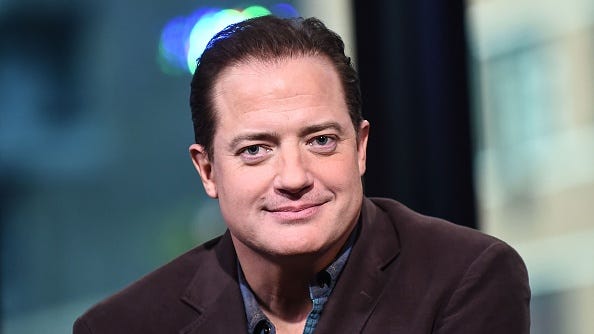
.css-1shyvki:before{background-repeat:no-repeat;-webkit-background-size:contain;background-size:contain;content:'';height:0.819rem;margin-bottom:0;margin-right:-0.9375rem;width:3.125rem;}.loaded .css-1shyvki:before{background-image:url('/_assets/design-tokens/countryliving/static/images/arrow.svg');}@media(max-width: 48rem){.css-1shyvki:before{display:none;}}@media(min-width: 40.625rem){.css-1shyvki:before{display:inline-block;}} Travel .css-unxkmx:before{background-repeat:no-repeat;-webkit-background-size:contain;background-size:contain;content:'';height:0.819rem;margin:0.7rem auto 0.9375rem;width:3.125rem;}.loaded .css-unxkmx:before{background-image:url('/_assets/design-tokens/countryliving/static/images/arrow.svg');}@media(max-width: 48rem){.css-unxkmx:before{display:block;}}@media(min-width: 40.625rem){.css-unxkmx:before{display:none;}}

The Country's Ten Best Spots for Birdwatching
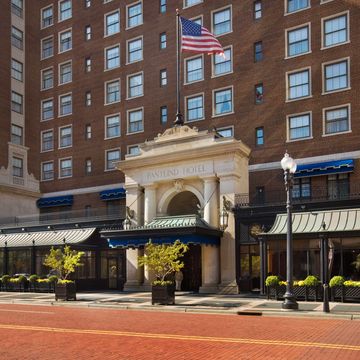
Plan a Trip to Grand Rapids, Michigan

Scenic Spots to Watch the Total Solar Eclipse
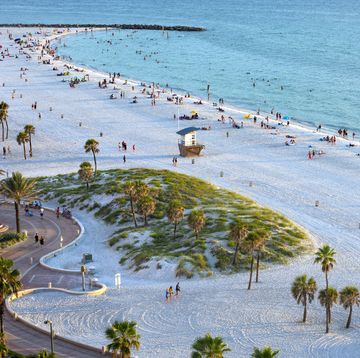
The 15 Best Beaches Near Orlando
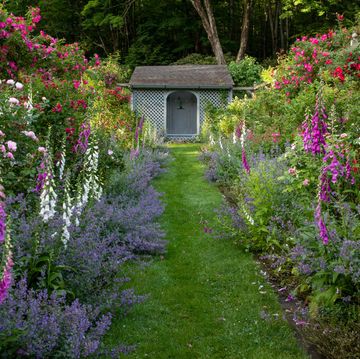
A Weekend in Connecticut's Litchfield County

I Stayed at Maui's Fairmont Kea Lani
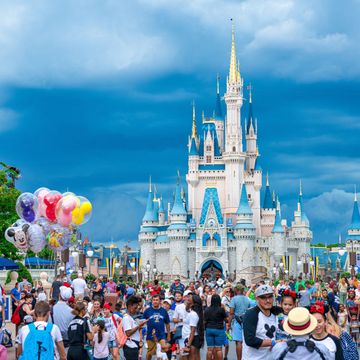
20+ Magically Free Things at Disney World
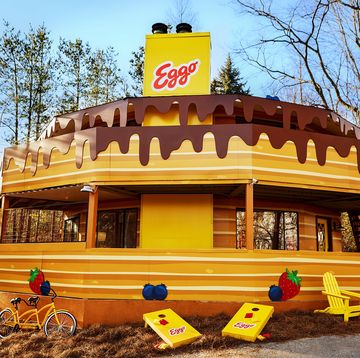
You Can Stay Inside a Stack of Pancakes for Free
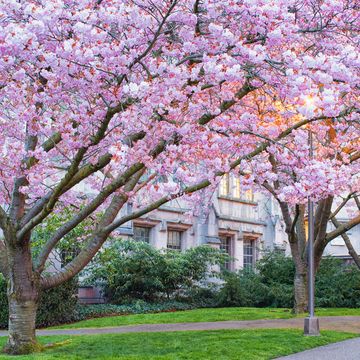
30 Best Places to See Cherry Blossoms in the U.S.
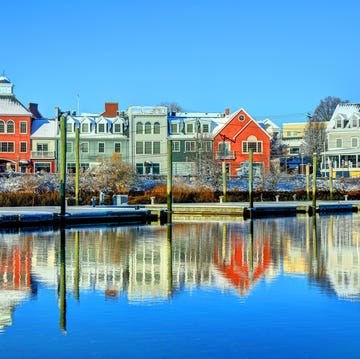
The 30 Most Charming Small Towns in Connecticut

8 Unique Vacation Destinations to Visit in 2024

Prepared By:
Adventure & Storyteller
Yellowstone Road Trip: Denver to Mount Rushmore to Yellowstone
Start / End
Denver, Colorado
States Covered
National parks.
Yellowstone, Grand Teton, Wind Cave
Total Distance
2,000 Miles (3,219 KM)
Suggested Days
At least 14
Suggested Seasons
Spring, Summer, Fall
#ThisIsMyRoute
Getting started.
This Yellowstone road trip route is perfect for those who want to experience the beauty of the open road and some of America’s most untamed areas. Embark on a journey that is so much more than just national parks! Experience an epic American road trip complete with old western towns, historic monuments, intriguing culture, and unbelievable scenery. Arrive at Denver International Airport where you can spend some time exploring the Mile High City or immediately get started on your road trip journey. From Denver, head north for a quick stop in the “Craft Beer Capital of Colorado,” in Fort Collins. It’s a fun, happening town that will get you excited to explore everything else to come. Later, head further north to Wyoming. Stop in Cheyenne, one of the most well-known western towns in the world. Afterwards, head towards South Dakota to see the Black Hills. Return to Wyoming and visit Yellowstone National Park, the Grand Tetons, Devils Tower, and more! After all the excitement of Jackson and the parks, slow down and enjoy the small towns of southern Wyoming.
While this is the route we recommend, you can always skip or add days as you see fit. If you don’t have enough time to see it all you may just have to plan another road trip in the future!
Arrive in denver and head to fort collins, 1.5 hours/72 miles.
We suggest arriving early into Denver and renting your car from the airport. Head north on I-25 towards Fort Collins, Colorado. It is the perfect town to get prepared and excited to start your road trip! Don’t worry, you will have a chance to explore the mile high city at the end of your trip if you choose!
Travel Tip: drink tons of water! The elevation in the Rocky Mountain West is real, and if you’re heading from lower elevation, increased hydration will help you stave off altitude sickness.
Fort Collins, Colorado This vibrant town is full of activities, but offers the tranquility of nature just a few miles away. If you want to walk on cobblestone streets next to historical buildings, you will love Old Town Fort Collins! Boutiques, pubs, galleries, events, local eateries abound in this downtown area.
Best short hike:
KIMMONS TRAIL
Best place for breakfast:
SILVER GRILL CAFE
Best place to watch the sunset:
CATHEDRAL TREE TRAIL
Best place to stay:
OLD TOWN FT. COLLINS
Best swimming hole:
CACHE LA POUDRE
Best place for local brew:
NEW BELGIUM BREWERY
Fort collins to cheyenne, 50 minutes/47 miles.
Grab breakfast and get an early start towards your first stop in Wyoming. Cheyenne, Wyoming is the perfect town to get a real feel for the American west. It is famous for its cowboy culture, rodeos, and trains. After you take in all the entertaining events, historic museums, steam engines, and western-themed attractions, take a day trip east on I-80 to nearby outdoor recreation areas like Vedauwoo and Curt Gowdy State Park. Here you will discover beautiful views, world class climbing, mountain biking, and hiking. Cheyenne is also known for its art and the beautiful botanic gardens.
Read more here .
Best experience for the whole family:
TERRY BISON RANCH
Can’t miss it:
CHEYENNE DEPOT AND MUSEUM
Must see it:
BIG BOY STEAM ENGINE
Best place for a hike:
CURT GOWDY STATE PARK
Best burger in town:
2 DOORS DOWN
Best morning grab and go:
MORT’S BAGEL
Cheyenne to hot springs, south dakota, 3 hours/240 miles.
To begin a longer travel day, head north on I-25 for a little over an hour until you reach Wheatland. This small Wyoming town is a good rest stop filled with quaint shops and murals. Then head northeast on Highway 26 towards Guernsey. Another very interesting part of American history lies just half a mile south of the town, where some of the best examples of the Oregon Trail ruts are still visible. After a bit of American history and a relaxing picnic in Guernsey State Park, head northeast for about two hours toward Hot Springs, South Dakota . If you make it before nightfall, end your day with a swim at Evans Plunge, the oldest attraction in the Black Hills.
Best place for a picnic:
GUERNSEY STATE PARK
Best place to stay:
HISTORIC LOG CABINS IN HOT SPRINGS
Oregon trail ruts.
Where to soak:
EVANS PLUNGE MINERAL SPRINGS
Jh keith park and whitney preserve, hot springs to rapid city, 2.5 hours/100 miles.
Next, have an action packed day exploring the gems that surround the Black Hills ! If you have time, visit the Mammoth Site, which boasts the largest concentration of mammoth fossils in the world and the Black Hills Wild Horse Sanctuary. Afterwards, drive up north toward Wind Cave National Park. After the visiting this unique national park, head up the quintessential old west town of Custer. Grab a bite to eat and then head to Custer State Park to explore granite peaks and rolling hills. After some time in the park, come face to face with George Washington, Thomas Jefferson, Theodore Roosevelt and Abraham Lincoln at Mount Rushmore . This national monument teaches the story of America’s birth, growth, and development. Venture northeast for a night in Rapid City. Here you will find a vibrant town with great places to eat, drink and stay.
WIND CAVE CANYON TRAIL
Best photo op:
JEWEL CAVE NATIONAL MONUMENT
Great place to go:
FORT HAYS OLD WEST TOWN SQUARE
Rapid city to gillette wyoming, 3.5 hours/220 miles.
Rapid City is a fun bustling town, so wake up to enjoy a walk through downtown with a coffee in hand. Then head up Highway 90 towards Spearfish. It doesn’t matter when you visit, this region has year-round adventure. There is an abundance of hiking, fishing , camping, hunting, climbing, and biking . The art and history surrounding the area is an attraction in and of itself. If you want some final Black Hills views, drive through Spearfish Canyon to Interstate 90 towards Gillette, Wyoming . When you hit Highway 14, go north towards Devil’s Tower National Monument. This landmass is America’s first national monument for a reason: it is one of the most striking, naturally-formed landscapes in the country. After seeing Devil’s Tower, make your way to Gillette. This town will get your taste buds buzzing with all their delicious culinary options.
Best history:
CRAZY HORSE MEMORIAL
Best place to get dinner:
PIZZA CORRELLO
Arbuckle lodge, gillette to cody, 4.5 hours/250 miles.
As you leave South Dakota and make your way across eastern Wyoming there are a few stops to choose from before reaching the eastern gateway of Yellowstone National Park.
Your first stop is Buffalo, an adorable town nestled in the foothills of the Bighorn Mountains . A dozen historical buildings, ice cream shops, art galleries, and restaurants line Main Street. Head towards Ten Sleep, a unique, small western town that hippies, hunters, cowboys, and climbers alike call home. Next, stop in Worland, home of the Washakie Museum.
We highly recommend making a short detour to Greybull before your final destination. The dinosaur tracks site and the Dinosaur and Geoscience Museum will put your travels in a whole new perspective. The folks who live in this community nestled into by public lands like to say, “We are around so few and surrounded by so much,” so ask for a recommendation for hike and a lunch before leaving town.
Now it’s time to head for the lively western adventure town of Cody, Wyoming . The best way to get a taste of the Wild West is by watching bucking broncos and fearless cowboys at one of the nightly rodeos. For more country western culture, walk around Sheridan Avenue and follow the noise of live music and two-steppinb boots. Before you leave for your official Yellowstone road trip in the morning, don’t forget to learn about the man that the town is named after, Buffalo Bill Cody, at the Buffalo Bill Center of the West .
Best place for a local brew:
TEN SLEEP BREWING COMPANY
Gooseberry badlands.
Best place to take the kids:
RED GULCH DINOSAUR TRACKS
Best scenic byway:
CLOUD PEAK SKYWAY
Best night out:
CODY STAMPEDE RODEO
Yellowstone road trip.
Wake up early and hop on the Buffalo Bill Scenic Byway that connects Cody to Yellowstone National Park. Called one of the most beautiful drives in America, the rushing Shoshone River, amazing rock formations, and the mountains views are bountiful. If you want to get out and stretch your legs, there are multiple scenic vista stops along the highway. Once you reach the eastern entrance of Yellowstone National Park, don’t forget to grab a park map! Remember, Yellowstone covers a huge tract of land. If you want to get the best experience without a lot of driving, we suggest staying one night within Yellowstone National Park.
Yellowstone Road Trip Attractions:
- Lake Butte Overlook
- Fishing Bridge Visitors Center
- Yellowstone Lake
- Mud Volcano
- Sulphur Caldron
- Virginia Cascade
- Beryl Spring
Best place for wildlife:
THE LAMAR VALLEY
Storm point nature trail.
Best place to ride a horse:
LODGES OF EAST YELLOWSTONE
Best point of interest:
LAKE YELLOWSTONE HOTEL
Best iconic American landmark:
OLD FAITHFUL
Grand canyon of the yellowstone and emerald pool, grand teton national park and jackson.

The next stop on your Yellowstone road trip is the gorgeous natural wonder of Teton National Park. Explore crystal clear lakes, flowing rivers, and incredible photography spots along the rugged Grand Tetons. If you really want to enjoy Grand Teton National Park you can avoid the crowds and bike some of the many trails. (Map attached below!) After experiencing Grand Teton grandeur, head towards Jackson Hole. As you approach the famous Wyoming tourist town, look for the National Elk Refuge, which offers tons of activities. Once you get to Jackson it’s time to enjoy the culture, cowboy bars, and delicious restaurants! If you want to see it all from above we suggest taking a ride up the Aerial Tram.
Best road for photo ops:
SIGNAL MOUNTAIN SUMMIT ROAD
Colter bay lakeshore.
Best museum:
NATIONAL MUSEUM OF WILDLIFE ART
Carriage ride through the national elk refuge.
Best local brew:
SNAKE RIVER BREWING
Jackson to lander, 3 hours/160 miles.
Leaving Jackson Hole, as you begin to see the Grand Tetons disappear in your rearview mirror, you will reach the town of Dubois . This charming hidden gem is one of the last real Old West towns. This small town is packed with outdoor adventures like mountain biking, hiking, ATV riding, kayaking, and much more. If you are here in the winter, don’t miss out on snowmobiling! Additionally, get to know the Wind River Mountain Range. Drive along the mountains toward Riverton, one of the most underrated towns in Wyoming. This small mountain town is worth an overnight stay, so you can learn all about the local Native American culture . If you are lucky, you may just be here for one of the many events that take place over summer. For an outdoor adventure, head to the next town over, Lander . Discover the beauty of the untamed Wind River Mountains, starting with the fascinating Sinks Canyon State Park.
Try your luck:
WIND RIVER HOTEL AND CASINO-RIVERTON
Popo agie falls trail.
Best scenic drive:
THE LOOP ROAD
The lander bar, lander to denver, colorado, 5.5 hours/350 miles.
Continuing on your Yellowstone road trip, get ready to explore some of America’s best kept secrets in Southern Wyoming. Your first stop is the town of Rawlins. History buffs rejoice, as Rawlins is home to the Wyoming Frontier Prison Museum . After you have stretched your legs, it’s time to hit Saratoga. Your drive will feature vast open spaces and the towering peaks of the Snowy Range. Saratoga will be a good stop for lunch before you head west on Highway 130 for Medicine Bow National Forest. This area is full of lakes and peaks with many spots to sit by the water and relax. After you have enjoyed one of the best outdoor areas in Southern Wyoming, head for Laramie . Laramie is an idyllic American town with rich history, fun local happenings, and tons of outdoor recreation. If you didn’t get a chance to visit Vedauwoo the first time, this is your second chance. Take some time to walk around downtown Laramie where you will find great restaurants, art shops, souvenirs and more. For some, this may be the last stop of your trip before heading back to the airport. For others, head to Denver, Colorado, for a taste of the city life.
Great Coffee:
DEB B’S FAMILY ESPRESSO & ICE CREAM-RAWLINS
Hobo hot springs -saratoga.
Great Museum:
SARATOGA MUSEUM
Lake trails, wyoming territorial prison-laramie.
Best outdoor recreation:
VEDAUWOO RECREATION AREA
Denver, colorado.
Exchange your country boots for your city shoes because you are now in the Mile High City. Denver is known for its foodie paradise, vibrant neighborhoods, music scene, thriving beer culture, amazing art, and sporting life. During your visit you may hear many expressions such as “LoDo,” “SoDo,” “RiNo” and many more. These are references to Denver’s is ten diverse neighborhoods. Whatever you are looking for during your vacation, you will find it within one of these eclectic neighborhoods.
Historic neighborhood:
LARIMER SQUARE
Denver art museum.
Haven for Art Lovers:
THE ART DISTRICT ON SANTA FE
Shopper’s Paradise:
CHERRY CREEK
Union station.
Best hotspot for food and culture :
SOUTH PEARL STREET AND OLD SOUTH GAYLORD
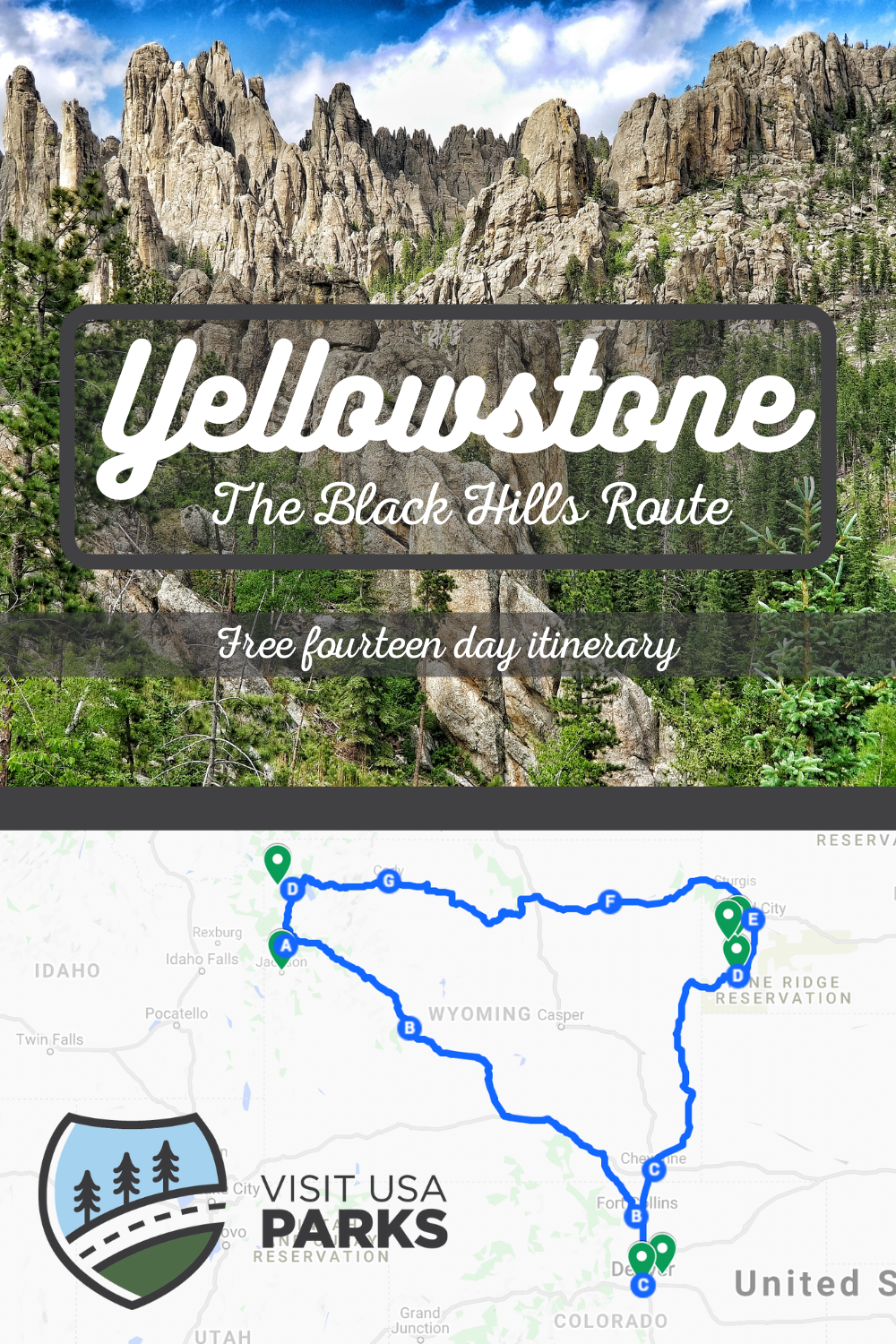
Privacy Overview
Hidden gems & road trip tips.
Get road trip itineraries & travel tips straight to your inbox!
Find out the location of the hidden gem pictured below in our next newsletter!
Photo by @shashank__kamath via Instagram
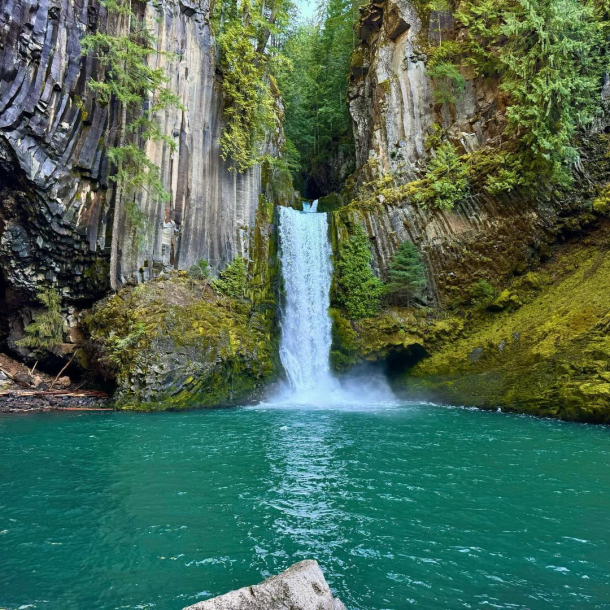
Agree I accept the Terms & Conditions*
Thank you for signing up for the "Best Kept Road Trip Secrets" newsletter coming to your inbox soon!
*View the Visit USA Parks terms and conditions .
Pin It on Pinterest
Share your adventure.

Epic Guide to Yellowstone National Park
C omplete guide to Yellowstone National Park in Wyoming. Everything you need to know to plan an epic trip to this amazing national park including lodging, camping, things to do, history, wildlife, and information on the local area.
Yellowstone National Park
Yellowstone National Park was created by the United States Congress and President Ulysses S. Grant on March 1, 1872. Yellowstone is located in the United States, mainly in the state of Wyoming, although it extends through Montana and Idaho. Yellowstone, the first national park in the United States, is also widely considered the oldest national park in the world.
About Yellowstone National Park
Yellowstone is located above the caldera of the largest volcano in America, very alive but without an eruption since 640 000 years ago. Because of that, it has numerous geothermal phenomena, especially the Old Faithful geyser , one of its most popular attractions. It is famous for its diversity in fauna, due to the fact that hunting of any kind has been prohibited for over 150 years.
The main road in the park is the 142-mile Grand Loop Drive, with upper and lower loops, forming a rough figure eight in the center of the park. On the undulating Yellowstone Plateau, you cross the Continental Divide twice, both with signs showing the elevation at the Continental Divide 8391 feet and 8262 feet.
On March 1, 1872, President Ulysses Grant signed into existence Yellowstone as the world’s first national park. This 2.2 million acres of wilderness covers three states including Montana, Wyoming, and Idaho, and was set aside“For the Benefit and Enjoyment of the People.”
Today, you can see these famous words as they are written on the Roosevelt Arch, the rock arch entrance as you enter from the north in Garnier, Montana.
There is just a special feeling driving through the arch as you read these words. You know that you have entered a special place, a place of unspoiled beauty, iconic western scenery, and the birthplace of something truly special, the U.S. National Park System. Perhaps America's best idea yet.
Is Yellowstone National Park worth visiting?
Yes! Yes! Yes! How many times can I say yes?
At nearly 12,000 square miles, it has an amazing variety of sights to offer, whatever your interests.
Where else in the world can you find geysers, hot springs, fumaroles, and other signs of hot geothermal activity, with snow-capped mountain peaks close by, huge meadows dotted with bison, elk, and mule deer, rivers steaming as hot springs empty into them, waterfalls and a canyon, all in one park?
History of Yellowstone National Park
The Yellowstone Plateau volcanic field resulted from three volcanic eruptions that spanned two million years.
The first cycle occurred over two million years ago and it created the Island Park Caldera. The second cycle happened approximately one million years later and it formed the Henry’s Ford caldera situated west of the first caldera.
The third cycle, which occurred 640,000 years ago, shifted to the Yellowstone Plateau and formed the caldera which is present today.
In Yellowstone, traces of human presence have been found, dating back at least 11,000 years. In the 1950s, construction work on the Gardiner Post Office uncovered a projectile from the Clovis culture.
In 1806, John Colter, who was a member of the Lewis and Clark expedition, left his fellow travelers to join with a group of trappers led by Manuel Lisa. Under his orders, Colter was sent to explore the upper reaches of the Yellowstone River.
He was probably the first European to have visited this region and come into contact with the Amerindian tribes.
In 1869, the Folsom expedition ascended the Yellowstone River to Yellowstone Lake. It was the first to provide a detailed description of the Yellowstone region.
In 1870, Montana residents also organized an expedition (the Washburn-Langford-Doane Expedition ), led by surveyor Henry Washburn and involving Nathaniel P. Langford and an army detachment, commanded by Lieutenant Gustavus Doane.
For a month, they studied the region, collected numerous specimens, and christened several places. Cornelius Hedges, a writer, and lawyer from Montana participated in the Washburn expedition. Between 1870 and 1871, the newspaper Helena Herald published several articles that detailed his observations.
He was one of the first, with the governor of Montana, Thomas Francis Meagher, to propose making the Yellowstone a protected national park.
In a letter of 1871, addressed to Ferdinand Hayden by Jay Cooke, the latter claimed that his friend, Senator William D. Kelley had suggested creating a law that would make Yellowstone a public park.
Hayden led a second and more important expedition, financed this time by the Government. He wrote a full report on Yellowstone, illustrated with photographs by William Henry Jackson, 33, and illustrations by Thomas Morgan, which made the US Congress protect this region.
On March 1, 1872, US President Ulysses Grant signed the decree creating the "Yellowstone National Park" in order to create a place "free of commercial exploitation, dedicated to the satisfaction of the people." The Hayden Valley takes its name from this geologist.
In order to mitigate the insufficiency of means to protect the national park, between 1886 and 1918 its administration was entrusted to the Army but On October 31, 1918, the Army ceded control of Yellowstone to the National Park Service.
At the beginning of the 20th century, a 146 miles road with an "8" shape was built connecting the most interesting points of the park.
Between 1933 and 1941, the Civil Conservation Corps built the tourist information centers, the campsites, and most of the current roads.
In 1959, a powerful earthquake struck west of Yellowstone on Hebgen Lake and damaged the roads and facilities of the national park.
On October 26, 1976, Yellowstone Park was declared an international biosphere reserve alter on September 8, 1978, it was integrated into the UNESCO world heritage .
But in 1995, this Committee placed it on the list of endangered world heritage areas. The poor quality of the water, the tourist crowds, and the use of snowmobiles were other reasons for concern.
Following the efforts of the federal government, the situation has improved and in July 2003 the park was removed from the list of endangered areas.
During the dry summer of 1988, some fires caused by lightning devastated 36% of the surface of the park, 783,880 acres, and the most affected part was North Fork.
Today, the National Park Service intentionally causes fires, circumscribed to certain areas already studied in advance, to prevent a catastrophe like the one of 1988.
Things to know before your visit to Yellowstone National Park
The park is open year-round but many features are closed in the winter.
Entrance fee
A fee is charged for entry to the park, with a 7-day permit available. The permit provides access to all areas of Yellowstone National Park, as well as nearby Grand Teton National Park
Yellowstone Entrance Fee - Private Vehicle - $35
Yellowstone Entrance Fee - Motorcycle - $30
Yellowstone Entrance Fee - Hiker/Biker - $20
Yellowstone Annual Pass - $70
Planning a National Park vacation? America the Beautiful/National Park Pass covers entrance fees for an entire year to all US National Park Sites and over 2,000 Federal Recreation Fee Sites.
The park pass covers everyone in the car for per vehicle sites and for up to 4 adults for per-person sites.
Buy on REI.com and REI will donate 10% of pass proceeds to the National Forest Foundation, National Park Foundation and the U.S. Endowment for Forestry & Communities.
Free Entrance Days - Check out the 5 days during the year that entrance fees are waived.
Learn more about National Parks Passes !
Time Zone
MST- Mountain Standard Time
Pets
Pets are allowed in Yellowstone NP but they must be on a leash at all time.
Please remember that there is a ton of wildlife in Yellowstone and they may be attracted to your pet.
Keeping your pet on a leash helps to keep them safe during your visit.
Leashes cannot be longer than 6 feet in length. You are responsible for cleaning up after your pet.
Pets are not allowed on any park trails or in the park backcountry. Pets are not considered pack animals.
Cell Service
We have had fairly good service in the park especially on the main roads. There are definitely parts of the park where cell phone service is not available or there may be a intermittent cell signal.
The park remains open year-round, with the operating hours for the visitor centers depending on the time of the year.
Wi-Fi may be available at the park visitor centers.
Insect Repellent
It is always a good idea to bring insect repellent with you. We use permethrin bug spray that can be applied to your clothes before you leave for your trip.
Water Bottle
Make sure to bring your own water bottle and plenty of water with you. Plastic water bottles are not sold in the park.
There are large parking lots available near Old Faithful.
Other attractions in the park have smaller parking lots and can be difficult to find parking.
If you are planning to visit Midway Geyser Basin to explore Grand Prismatic Spring you can almost guarantee having to wait for a parking spot.
Food/Restaurants
There are multiple restaurants and fast service counters within Yellowstone.
Canyon Lodge - Eatery, Falls Café, Ice Creamery, M66 Grill
Canyon General Store - 60s-style burger counter and ice cream counter
Washburn Lodge - Washburn Lookout (snacks and drinks)
Grant Village Lodge - Dining Room, Lake House at Grant
Grant Village General Store - Snack bar and ice cream counter
Lake Hotel and Cabins - Lake Hotel Dining Room, Lake Hotel Deli, and alcohol bar
Lake Lodge and Cabins - Cafeteria
Lake General Store - Snack bar and ice cream counter
Fishing Bridge General Store - Snack bar and ice cream counter
Bridge Bay Marina Store - Snack bar
Mammoth Hot Springs Hotel and Cabins - Mammoth Hotel Dining Room, Terrace Grill, Map Room Bar
Mammoth General Store - Snack bar and ice cream counter
Old Faithful Inn - Old Faithful Inn Dining Room, Bear Paw Deli, Bear Pit Lounge
Old Faithful Snow Lodge - Obsidian Dining Room, Geyser Grill, Coffee counter,
Old Faithful Lodge - Cafeteria, Bake Shop, Lobby Snack Shops, Ice cream counter
General Stores (Upper and Lower) - Store Soda Fountain
Roosevelt Lodge - Roosevelt Lodge Dining Room, Old West Dinner cookout
Tower Fall General Store - Snack bar and ice cream counter
There are gas stations located near Old Faithful, Grand Village, Fishing Bridge, Canyon, Tower/Roosevelt Junction, and Mammoth Hot Springs.
National Park Passport Stamps
National Park Passport stamps can be found in the visitor center.
Make sure to bring your National Park Passport Book with you or we like to pack these circle stickers so we don't have to bring our entire book with us.
Yellowstone NP is part of the 2022 Passport Stamp Set , was the national stamp in the 1989 Passport Stamp Set , and in the 1988 Passport Stamp Set as part of a collage of parks.
Large Vehicles
There are several large parking lots at the main attractions but will prove difficult on many other roads and smaller parking lots.
Electric Vehicle Charging
Public EV charging stations are now available in a number of park locations.
The stations are Level 2, and provide 208/240 volt electric service. Charging takes about 4 hours from empty to full.
Yellowstone Forever , the park’s official nonprofit partner, installed one of the public charging stations at their headquarters and retail store at 308 E Park St. Gardiner, Montana 59030.
Yellowstone National Park Lodges, the authorized concessioner operating the park’s hotels, has installed public charging stations near several of the park hotels:
Mammoth Hot Springs : In front of the Haynes PhotoShop; and behind the Northwest corner of the Mammoth Hotel.
Old Faithful: At the Old Faithful Lodge Cabins (Lower Loop), outside of Shower house 1.
Canyon Village: In front of both Rhyolite and Washburn lodges.
Lake Village: In front of Teal employee dorm.
West Entrance/ West Yellowstone MT: The Gray Wolf Inn and Suites, 250 S Canyon St., and the Holiday Inn, 315 W Yellowstone Ave, West Yellowstone, MT 59758. Tesla stations are also located in West Yellowstone.
Details about Yellowstone National Park
Size - 2,219,790 Acres
Yellowstone NP is currently ranked at 8 out of 63 National Parks by Size .
The Yellowstone National Park covers an area of 2,219,790 acres that includes lakes, canyons, rivers, and mountain ranges, Yellowstone Lake being the largest mountain lake in North America.
Date Established
Yellowstone National Park was created by the United States Congress and President Ulysses S. Grant on March 1, 1872.
Visitation
In 2020, Yellowstone NP had 3,806,306 park visitors.
In 2019, Yellowstone NP had 4,020,288 park visitors.
Yellowstone is one of the top ten most visited National Parks in the United States.
Yellowstone National Park Address
2 Officers Row
Yellowstone National Park Headquarters
Yellowstone National Park, WY.82190
Yellowstone National Park Map
If you want to check out a detailed map of the park you can purchase a trails illustrated map which highlights 1,000 miles of mapped trails and the main attractions within the park.
They also sell a Yellowstone map pack that includes:
- Map 302 :: Old Faithful: Yellowstone National Park SW
- Map 303 :: Mammoth Hot Springs: Yellowstone National Park NW
- Map 304 :: Tower, Canyon: Yellowstone National Park NE
- Map 305 :: Yellowstone Lake: Yellowstone National Park SE
Every Trails Illustrated map is printed on "Backcountry Tough" waterproof, tear-resistant paper.
Where is Yellowstone National Park
Yellowstone is about a seven-hour drive north of Salt Lake City, three hours from Jackson, and very close to the town of West Yellowstone.
Estimated distance from major cities nearby
Gardiner, MT - Borders the north entrance of Yellowstone
West Yellowstone - Borders the west entrance of Yellowstone
Idaho Falls, ID - 108 miles, 1 hour and 45 minutes
Bozeman, MT - 78 miles, 1 hour and 25 minutes
Casper, WY - 267 miles, 4 hours and 40 minutes
Salt Lake City, UT - 320 miles, 4 hours, and 50 minutes
Boise, ID - 340 miles, 5 hours and 10 minutes
Estimated Distance from nearby National Park
The road through Yellowstone is closed for the winter.
Grand Teton National Park - 65 miles
Glacier National Park - 366 miles
Arches National Park - 557 miles
Canyonlands National Park - 563 miles
Bryce Canyon National Park - 587 miles
Black Canyon of the Gunnison National Park - 541 miles
Where are the Yellowstone National Park Visitor Centers?
Albright visitor center.
Location - Located in the northern part of the park near Mammoth Hot Springs
Canyon Visitor Education Center
Location - Location near the Grand Canyon of the Yellowstone.
Fishing Bridge Visitor Center and Trailside Museum
Location - The Fishing Bridge Museum and Visitor Center is located one mile off the Grand Loop Road on the East Entrance Road.
Flagg Ranch Information Station
Location - The Flagg Ranch Information Station is located in the John D. Rockefeller, Jr. Memorial Parkway
Grant Visitor Center
Location - The Grant Visitor Center is located on the western shore of Yellowstone Lake, a short distance south of the West Thumb Geyser Basin.
Madison Information Center and Trailside Museum
Location - halfway between Old Faithful and West Yellowstone
Museum of the National Park Ranger
Location - The Museum of the National Park Ranger is located off the Grand Loop Road at the entrance to the Norris Campground.
Norris Geyser Basin Museum and Information Center
Location - On the trail within Norris Geyser Basin.
Old Faithful Visitor Education Center
Location - Near Old Faithful Geyser
This large visitor education center has a great windowed view of the geyser. There is a nice park store, natural wonders of Yellowstone exhibit hall, restrooms, and rangers available to answer questions.
West Thumb Information Center
Location - West Thumb Geyser Basin
West Yellowstone Visitor Information Center
Location - Located in West Yellowstone near the entrance to the park.
This visitor center includes NPS Park Rangers who can answer questions specific to the park. There are also staff members for the West Yellowstone Chamber of Commerce who can answer questions about lodging and information on West Yellowstone.
Getting to Yellowstone National Park
Cody and Jackson, WY; Bozeman and Billings, MT, and Idaho Falls, ID are close airports that are open year-round. The West Yellowstone, MT airport is serviced from June to early September from Salt Lake City, UT.
The Jackson, Wyoming airport is great! You can rent a car on-site and be in the park pretty quickly. On your way back home you can enjoy comfy leather couches, fireplaces, and a relaxing airport before flying out.
Commercial airlines serve the following airports near Yellowstone National Park all year: Cody and Jackson, WY; Bozeman and Billings, MT, and Idaho Falls, ID.
Yellowstone Airport (WYS)
Located in West Yellowstone just outside of the park. This airport is open from early May to mid-October from Salt Lake City, UT.
Yellowstone Regional Airport (COD)
Located in Cody, Wyoming. Delta and United offer year-round flights to this airport. One thing to know is the east entrance to the park closes in the winter.
When making a reservation make sure to confirm if you are flying into Yellowstone Airport or Yellowstone Regional Airport.
Jackson Hole Airport - JAC
Jackson Hole Airport is located within Grand Teton National Park just south of Yellowstone.
Alaska, American, Delta, and United Airlines all offer year-round flights to and from Jackson Hole.
Allegiant, Frontier, and Sun Country Airlines offer direct flights between Jackson Hole and Denver in the summer months only.
International Airports
Salt Lake City International Airport - SLC
Regional Airports
Idaho Falls Regional Airport - IDA
Cody, Wyoming
Bozeman, Montana
Billings, Montana
There are five main entrances to the park. These are open depending on weather conditions.
Be prepared that your GPS may not work correctly within the park. Bring a paper map and pick up current maps from the visitor center when you arrive at the park.
For current road conditions call (307) 344-2117
Entrances to Yellowstone National Park
West entrance .
The West Entrance to Yellowstone National Park is open during the summer only from Mid-April to early November.
Winter access is only open by a commercially guided snow coach or snowmobile.
Closest City - West Yellowstone
Closest Airport - West Yellowstone Airport (WYS)
The West Yellowstone Airport is located one mile north of West Yellowstone. It is open from Mid-May to early October and served by SkyWest Airlines (Delta Connection).
Bozeman Airport is 90 miles north of the west entrance.
Idaho Falls Airport is 110 miles south of the west entrance.
North Entrance
Closest City - Gardiner, Montana
Closest Airport - Bozeman (BZN)
Northeast Entrance
Closest City - Cooke City, Montana
Closest airport - Billings-Logan International Airport (BIL)
The northeast entrance is not only the gateway to Yellowstone but also on the most scenic drive in America the Beartooth Highway.
Traveling the Beartooth Highway takes you through the Absaroka and Beartooth Mountains
Closest Bus Station to Yellowstone
Bus service from Bozeman, MT to West Yellowstone, MT via Highway 191 is available all year.
Bus service directly from Idaho to West Yellowstone is limited to the summer months.
Commercial transportation from Bozeman, MT to Gardiner, MT is available during the winter and summer seasons.
Commercial transportation to the park from Cody and Jackson, WY is available during the summer season.
Closest Train Station to Yellowstone
Train service is not available to Yellowstone National Park.
The nearest train depots are in southeast Idaho, Salt Lake City, Utah, and northern Montana.
Best time to visit Yellowstone National Park
The best time to visit Yellowstone is any time you can make it to the park. Every season in the park brings the opportunity to see something amazing.
Yellowstone National Park Weather and Seasons
During spring the roads start to open to visitors starting the third Friday of April.
Spring visitors to Yellowstone can enjoy wildlife viewing including bison calves, black bears emerging from their dens, spring birds, and wildflowers breaking through any remaining snow.
Visitation increases as the days move closer to Memorial Day. All roads within the park are open most years by Memorial Day weekend.
Summer is by far the busiest visitation within Yellowstone NP. More than half of the annual visitors visit the park between June, July, and August.
Starting from Memorial Day weekend visitation increases for the remainder of the summer.
The highlight of visiting during the summer is all of the roads are open and services are available including all of the lodges and campgrounds.
Early in the summer bears are visible as they are enjoying roadside meadows and emerging from dens. Later in the summer, they will start to move to higher elevations.
Bison Rut starts in July and can be seen in Lamar and Hayden Valleys.
One thing to know about late summer is there is a chance of wildfire smoke obscuring views and making it hard to see anything.
Visiting Yellowstone during the summer takes planning and a lot of patience! You want to plan to arrive to the park entrances as early as you can!
By 9 am you could be in a long line just trying to get into the park.
One benefit of visiting in the summer is the longer days. Plan to stay late to avoid crowds. A lot of visitors will head out to West Yellowstone and surrounding areas for dinner leaving the park easier to explore.
From 10 am to 3 pm the main park attractions of Old Faithful , Grand Prismatic Springs , Grand Canyon of the Yellowstone, and Norris Geyser Basin are crowded and then some!
Plan to visit other attractions like Black Sand Basin , Biscuit Basin , Mud Volcano , and Firehole Lake Drive during the busiest parts of the day. This is also a great time to enjoy a picnic in the park.
Autumn/Fall
Starting in September campgrounds will start to close and some roads may experience temporary weather closures.
Elk are in rut during the Fall which is amazing to see. Listening to an elk bugle is a true National Park bucket list moment.
By October many park roads will begin closing for the winter season. This date can change based on the weather.
Both Dunraven Pass and Beartooth Highway normally close by mid-October.
By November the park has started winter travel restrictions for all areas except Mammoth.
During the winter most of the roads within Yellowstone are closed to automobiles.
The roads are open to limited snowmobile and snow coach travel from mid-December through mid-March.
The only road that is open for visitors to drive their own vehicles is between the North and Northeast entrance through Lamar Valley.
Most park facilities are closed in the winter. The only lodging open is Mammoth Hot Springs Lodge and Old Faithful Snow Lodge.
The only campground in the park open year-round is in Mammoth Hot Springs, located 5 miles south of the park's North Entrance.
Visitors in the winter can enjoy cross country skiing, snowshoeing, snow coach tours, wildlife watching, and a winter wonderland.
Visitation is low during the winter making it feel like you have the park to yourself.
Best Things to do in Yellowstone National Park
It is physically impossible to see all of Yellowstone in a day! In fact, a week will go by fast in this amazing park with so many opportunities for outdoor recreation. Remember the size of the park, throw in over 200 miles of roads, 900 miles of trails, and fight to get to attractions as Yellowstone has more annual visitors than the population of 24 of the 50 states in America.
The most visited areas of the park include Old Faithful Geyser, Midway Geyser Basin, Grand Prismatic Spring, Norris Geyser Basin , Lamar Valley, Hayden Valley, Grand Canyon of the Yellowstone, West Thumb Geyser Basin, the standing trunk of a petrified redwood tree, about 50 million years old, Mammoth Hot Springs, Fountain Paint Pots , and Morning Glory Pool.
Millions of park visitors come to Yellowstone each year, the number one thing on their bucket list to do is go to the Upper Geyser Basin and see Old Faithful erupt in a predictable fashion.
Of course, Yellowstone is filled with geysers and people explore all through the Upper Geyser Basin plus Biscuit Basin, Black Sand Basin, midway geyser basin, Norris Geyser Basin, and West Thumb Geyser Basin.
Yellowstone is America's Serengeti. It is here that you will see one of America's healthiest ecosystems with incredible wildlife viewing opportunities. Some of the best places to view wildlife include Lamar Valley and Hayden Valley . With that being said we always suggest keeping your camera in your lap because you never know what wildlife you will see as you drive through the park.
Bring your patience when visiting Yellowstone. What draws visitors to the park-like yourself, is the outstanding wildlife viewing opportunities which include Elk, Bison, wolves, Grizzly, and Black Bears. With wildlife this abundant, it is guaranteed to create traffic jams going from one location to another. Remember that for most park visitors, this is a once-in-a-lifetime event and they are just as excited as you are.
Yellowstone is the core of one of the last, nearly intact, natural ecosystems in the Earth’s temperate zone.
Picturesque Mammoth Hot Springs is located just south of the north entrance of the park. Make sure to take time and walk through the boardwalks and get close to this amazing feature! Wildlife is often seen hanging out in the lawn areas including elk and bison.
Just remember to enjoy these animals from a distance as they are still wild animals.
Take advantage of the park's 900 miles of trails! Besides nothing is better than stretching your legs after a long road trip.
Make sure to stay on designated footpaths as these geysers, pools, mud pots, and vents are heated water and can cause severe injuries and even death.
Remember that Yellowstone is an active volcano, some call it a supervolcano! The 1000-3000 earthquakes a year, active ground deformation, and the 10,000+ thermal features are all evidence of its activity.
There are many beautiful waterfalls within Yellowstone but nothing more famous than Yellowstone Falls. Not only are the falls huge but so is this canyon! I found myself just staring in amazement.
What are you waiting for, start planning that trip to Yellowstone! It is the one you and your family will always remember.
There is so much to see and do and a week is not enough to see it all. You also have the Grand Teton National Park just South of Yellowstone which is just as spectacular and has just as many recreational opportunities!
Junior Ranger Program
The Junior Ranger Program can be picked up at the park visitor centers. This program is a fantastic way for visitors of all ages to learn more about the park.
There is a special snowflake patch for completing the winter Junior Ranger program.
Yellowstone allows bicycles and e-bikes on established public roads, parking areas, and designated bike routes.
All bikes are subject to the same traffic rules as automobiles. Bikes are prohibited on backcountry trails, boardwalks, and over snow routes in Yellowstone.
If you don't want to haul your bike with you to the park you can rent them at Old Faithful.
During the spring visitors can ride 49 miles between the West Entrance to Mammoth Hot Springs. The park plows the road but it is not open to motorized vehicles for a limited time.
Check the Spring and Fall Bicycling page for road segment status.
There are designated bike trails within the park including the Abandoned Railroad Bed Bike trail, Bunsen Peak Loop Bike Trail, The Old Gardiner Road Bike Trail, Fountain Freight Road Bike Trail, Lone Star Geyser Bike Trail, and Natural Bridge Bike trail.
Bike trails range from 1-6 hours in duration.
Guided Tours
From West Yellowstone - Park Tour with a local guide
Discover the stunning natural beauty the flora and fauna in Yellowstone National Park with this tour from West Yellowstone. See sights like Old Faithful, the Grand Canyon waterfalls, and Artist Point.
From West Yellowstone - Lamar Valley Wildlife Tour by Van
See the wildlife of the Lamar Valley with a naturalist guide. Watch wildlife with high-powered spotting scopes and binoculars from the comfort of a van.
From West Yellowstone - Lower Loop Active Van Tour
See Yellowstone's hot spots by van with a naturalist guide. Visit Grand Prismatic Hot Spring, Old Faithful, Yellowstone Lake, and the Grand Canyon of the Yellowstone.
Yellowstone Lake half day guided kayak tour - Enjoy a relaxed morning with a guided kayaking tour along the shores of Yellowstone Lake. Look for local wildlife as you make your way over sparkling waters towards the West Thumb Geyser Basin.
Guided sunset lake kayaking tour - Paddle the glassy waters of Yellowstone Lake and see the awash in sunset tones on this guided kayak tour.
From Jackson - Day tour with entrance fee included
Join a local guide for an amazing day in the world's first national park, home of grizzly bears, elk, bison, wolves, eagles, foxes, and 60% of the world's geothermal features. Stop at Old Faithful, Grand Canyon waterfalls, and other geyser areas.
From Jackson - Park and Wildlife Viewing Tour
Explore Yellowstone National Park on a guided day tour. Visit Old Faithful, the Lower Falls of Grand Canyon of Yellowstone, and enjoy opportunities for wildlife viewing throughout the day.
From Jackson - Full Day Yellowstone Lower Loop Tour
Spend a day exploring Yellowstone's Lower Loop, departing and returning from Jackson. Visit the Old Faithful Area, Midway Geyser Basin, Fountain Paint Pots, the Canyon Area, Hayden Valley, and more.
From Gardner - Yellowstone River Whitewater Rafting Trip
Feel the rush as you raft through rapids, crash over waves and conquer the Yellowstone River. Travel in a raft with a certified safety guide.
From Cody - Full day park tour
Experience the beauty of Yellowstone on this tour from Cody. Visit top sights like the historic Fishing Bridge, the bubbling Mud Volcano, Hayden Valley, Artist’s Point, and Old Faithful.
Hiking at Yellowstone National Park
There are more than 900 miles of hiking trails within Yellowstone National Park.
Heading out on a day hike does not require a permit. You do want to make sure you have the ten essentials and someone knows where you are headed.
One thing to always remember when planning to hike in Yellowstone is the park is 7,000 feet above sea level.
Many areas of the park will still have snow until late May and into early June.
Make sure to check with a visitor center for current trail conditions and closures. Many areas of the park can be closed for bear management.
Hiking in Yellowstone is hiking in bear country! Bringing bear spray with you is always a good idea.
Wildlife in Yellowstone
Yellowstone is home to numerous species of mammals including the gray wolf (reintroduced species), and the grizzly (threatened species). Other mammals include bison, black bear, mountain lion, elk, deer, pronghorn antelope, mountain goat, and Bighorn Sheep.
The park has well over 1000 native plants in Yellowstone including wildflowers, trees, shrubs, and plants.
How to beat the crowds in Yellowstone National Park?
The majority of visitors come to Yellowstone from June through August. Holidays and weekends in the Spring and fall are offer very full as well. Winter has far fewer visitors. Try going on weekdays in the spring and fall and if possible, visit in the early morning or late afternoon, when there are fewer tour buses.
On peak days, in July and August, as many as 25,000 people wait for the famous geyser, Old Faithful, to erupt.
Where to stay when visiting Yellowstone National Park
When planning where to stay while vacationing in Yellowstone you will want to determine which area of the park you are planning to visit.
We suggest if possible staying at a few different lodging options to provide easy access to different portions of the park.
Yellowstone National Park Lodging
There are nine National Park Lodges located within the park offering over 2,000 rooms.
Only two lodges are open during the winter - Old Faithful Snow Lodge and Mammoth Hot Springs Hotel.
From late spring through fall all of the lodges are open.
- Canyon Lodge and Cabins : 400+ guest rooms spread across 5 hotel-style lodges, with 100+ cabins being more rustic accommodations. Available to book on Expedia
- Grant Village Lodge: 300 guest rooms spread across 6 two-story, hotel-style lodges. Available to book on Expedia
- Lake Hotel and Cabins : Large lodge that has hotel room-style and cabin accommodations. Available to book on Expedia
- Lake Lodge Cabins : 186 cabins.
- Mammoth Hot Springs Hotel and Cabins : Large lodge that has hotel room-style and cabin accommodations.
- Old Faithful Inn : Rustic lodge with hotel room-style accommodations. Available to book on Expedia
- Old Faithful Lodge : Cabin accommodations.
- Old Faithful Snow Lodge : Large lodge that has hotel room-style and cabin accommodations. Available to book on Expedia
- Roosevelt Lodge: Cabin accommodations.
Lodging near Yellowstone NP
Gray Wolf Inn & Suites in West Yellowstone - 3-star hotel. Gray Wolf Inn & Suites is located close to Yellowstone Park West Entrance, and provides a firepit, laundry facilities, and a 24-hour gym. Adventurous travelers may like the snowmobiling at this hotel. For some rest and relaxation, visit the hot tub. Free in-room Wi-Fi and a business center are available to all guests.
Stage Coach Inn in West Yellowstone - Yellowstone Park West Entrance is located near Stage Coach Inn, which provides free continental breakfast, laundry facilities, and a fireplace in the lobby. For some rest and relaxation, visit the sauna. Free in-room Wi-Fi is available to all guests, along with a gym and a 24-hour business center.
Yellowstone Westgate Hotel in West Yellowstone - At Yellowstone Westgate Hotel, you can look forward to free continental breakfast, laundry facilities, and a fireplace in the lobby. For some rest and relaxation, visit the hot tub. Free in-room Wi-Fi and a business center are available to all guests.
Brandin' Iron Inn in West Yellowstone - Brandin' Iron Inn is located close to Yellowstone Park West Entrance, and provides free full breakfast, laundry facilities, and a fireplace in the lobby. Skiers and snowboarders can spend time on the slopes at this motel offering ski-in/ski-out access and cross-country skiing. Guests can connect to free in-room Wi-Fi.
Kelly Inn West Yellowstone - Close to Yellowstone Park West Entrance, Kelly Inn West Yellowstone provides free continental breakfast, a free roundtrip airport shuttle, and a firepit. For some rest and relaxation, visit the hot tub. Free in-room WIFI is available to all guests, along with laundry facilities and a business center.
Dreamcatcher Tipi Hotel near Gardiner, MT- Along with self parking, this campground has coffee/tea in a common area and a microwave in a common area. Free continental breakfast and free Wi-Fi in public areas are also provided. Additionally, concierge services, a garden, and barbecue grills are onsite. All 17 accommodations boast heated floor (bathroom) and offer Wi-Fi and 8 bathrooms. Other amenities available to guests include memory foam beds, premium bedding, and rainfall showerheads. Private bathrooms are not ensuite.
Absaroka Lodge near Gardiner, MT- Absaroka Lodge provides amenities like a terrace and a garden. Stay connected with free in-room Wi-Fi.
Yellowstone Big Rock Inn near Gardiner, MT- Yellowstone Big Rock Inn provides a garden and more. Stay connected with free in-room Wi-Fi.
Super 8 by Wyndham Gardiner near Gardiner, MT- Super 8 by Wyndham Gardiner/Yellowstone Park Area provides dry cleaning/laundry services and more. Guests can connect to free in-room Wi-Fi.
Yellowstone Gateway Inn near Gardiner, MT- 3-star hotel near Yellowstone National Park. Yellowstone Gateway Inn provides amenities like a garden and laundry facilities. Treat yourself to a massage or other spa services. Stay connected with free in-room Wi-Fi.
Yellowstone National Park Camping
There are over 2,000 campsites within Yellowstone spread among 12 campgrounds.
The only campground that is open year-round is Mammoth Campground.
The majority of campgrounds within the park open in May and close in late fall.
Five of these campgrounds are managed by the concessionaire who manages the Yellowstone Lodges. Reservations are handled through the concessionaire.
- Bridge Bay Campground
- Canyon Campground
- Fishing Bridge RV Park
- Grant Village Campground
- Madison Campground
The National Park Service managed seven of the campgrounds. Reservations are handled through Recreation.gov
- Mammoth Campground (Reservable)
- Norris Campground
- Slough Creek Campground (Reservable)
- Pebble Creek Campground (Sites 1-16 Reservable)
- Tower Fall Campground
- Indian Creek Campground
- Lewis Lake Campground
Backcountry Camping
The process for reserving backcountry campsites and obtaining backcountry permits has changed for 2022.
Early Access Lottery - Reservation applications will be accepted beginning in March 1 to the 20th, 2022 on Recreation.gov
Advanced Reservations - On April 26, remaining permits for open campsites will be available on Recreation.gov . Reservations must be made at least 3-days prior to the start date of a trip.
Walk-Up Permits - Walk-up backcountry permits are available on a first-come, first-served basis in person at a Yellowstone Backcountry Office. Hikers can obtain these permits up to 2-days prior to the start date of your trip.
Walk-up Permits cannot be issued over the phone or online through Recreation.gov.
Back Country Permit Fees
Early Access Lottery Application Fee: $10 non-refundable. The application fee is charged for all applications to the Early Access Lottery regardless of success.
Recreation Fee: $5 per person, per night plus a $10 reservation fee. The recreation fee is charged year-round for permits secured through Recreation.gov or in-person at a backcountry office.
The $10 reservation fee is charged for all permits except those acquired during the Early Access Lottery.
Permits are required year-round for all overnight stays in Yellowstone's backcountry. A backcountry permit allows the permit holder and group members to camp in a designated location.
Yellowstone maintains 293 designated backcountry campsites.
Each designated campsite has a maximum limit for the number of people and stock allowed per night.
The maximum stay per campsite varies from 1 to 3 nights per trip.
A list and map of campsites can be found in the Backcountry Trip Planner and the online Backcountry Trails and Campsites map .
For a fun adventure check out Escape Campervans . These campervans have built in beds, kitchen area with refrigerators, and more. You can have them fully set up with kitchen supplies, bedding, and other fun extras. They are painted with epic designs you can't miss!
Escape Campervans has offices in Vancouver, Seattle, Portland, San Francisco, Las Vegas, Los Angeles, Phoenix, Salt Lake City, Denver, Chicago, New York, and Orlando
Travel Tips
Be prepared for CROWDS!!!
Have a hit list and plan of attack for what you want to see in the park. There is a lot of driving and construction in Yellowstone
Know your game plan and have a backup plan for weather, construction, too many people
Download the Geyser App for Yellowstone so you know Old Faithfu l times and don't miss it by a few minutes and have to wait an hour
Pack snacks and water
Dress in layers
If you want to stay at a Yellowstone lodge make your reservations as far in advance as you can. Many dates sell out a year in advance.
Know you will see more Bison than you can imagine. Don't worry about getting the perfect shot when you see the first one.
Be careful! Be aware of your surroundings.
Be bear aware, practice bear safety
Ask people what they are looking at when you see them pulled over or standing staring in one direction. It will make it a lot easier to see great wildlife.
Use the bathroom when you see it. The park is huge and it can take time to get to the next bathroom.
Go early in the morning and stay late in the evening to decrease the crowds you have to deal with.
Have a full tank of gas when you enter the park.
The park is a high elevation park. Be prepared for weather changes
Check weather and road conditions before you head into the park. Check for updates on Facebook and Twitter from the park and also on the website.
Be prepared to wait in road construction. I know we said it already but really be prepared! You could spend 20-40 minutes staring at the back of an RV or looking at the same trees.
Give yourself as much time as possible to explore the park! While you can drive the entire park in a day it will be a long day and you may not see as much as you want too.
Research the times for Old Faithful during your visit. This will help prevent having to wait for an hour or more to see Old Faithful
If you plan on visiting Yellowstone Falls try and get there early in the day. During the afternoon, the sun is directly behind the falls making it really hard to photograph.
Keep your camera ready during your drive through the park. You never know when a bear or other wildlife will appear.
If you are vegetarian the black bean burger at the grills inside the park is great.
Pack extra camera batteries and smart cards. You will take more pictures than you plan on
Be careful pulling off on the side of the road. In some areas, the dips are a lot bigger than you expect them to be. In the Lamar Valley , there can be quite a drop on the side of the road. If you have a low clearance vehicle be very careful.
Be prepared for road construction while driving through the park. You can be delayed for a few minutes to a lot longer.
Check your gas tank while near the few gas stations in the park. The gas stations are pretty spread out so make sure you have enough gas to get from one area of the park to the next.
Bug spray is your friend! Make sure you have some with you.
Yellowstone National Park information
How did yellowstone get its name.
Yellowstone National Park is named after the Yellowstone River which runs through the park.
The river was named by the Minnetaree Indians who called it Mi tse a-da-zi, or Yellow Rock River.
This name was passed on to French trappers who called it Roche Jaune and then later changed by American trappers to Yellow Stone.
For those who enjoy spirits, the gift stores in Yellowstone carry a Bourbon that is only sold in their stores. It is Roche Jaune Whiskey. This is a very good bourbon, in fact, I get emails from visitors every year asking how they can get another bottle. Make sure to check out my article Spirits inspired by the National Parks .
How big is Yellowstone National Park?
Yellowstone is larger than the states of Rhode Island and Delaware combined!
The park covers 3, 472 miles including 1,000 miles of trails, 52 picnic areas, 900 historic buildings, and 290 waterfalls.
Is Yellowstone the largest National Park?
No! Wrangell-St. Elias National Park in Alaska is the largest park unit with over 13 million acres.
What is the highest peak in Yellowstone?
The highest peak in the park is Eagle Peak in the southeastern part of the park at 11,358 feet.
Can you swim in Yellowstone rivers, lakes, or hydrothermal?
Swimming is not really recommended in the lakes or streams because they are COLD!
Firehole Canyon near Madison Junction has a popular swimming area in the summer.
Soaking in any thermal features is illegal and really dangerous!
The only exception to this is the Boiling River north of Mammoth Hot Springs where a large hot spring enters the Gardner River. This area has a mixing of hot and cool waters that make it comfortable to soak in.
How many Geysers are in Yellowstone?
There are more than 10,000 hydrothermal features in the park. Of these hydrothermal, there are 500 geysers with 300 active geysers.
Over half of all the world's geysers are found in Yellowstone.
When does Old Faithful erupt?
Each eruption prediction is based on the last eruption so times vary by the day.
The average eruption is every 92 minutes.
Yellowstone National Park Facts
Size - 3,472 square miles
Trails - over 1,000 miles of trails
Picnic areas - 52
Historic buildings - 900
Waterfalls - 290
Hydrothermal Features - 10,000
Geysers - 500, 300 of them are active
National Parks near Yellowstone National Park
Grand Teton National Park
Craters of the Moon National Monument
Timpanogos Cave National Monument
Fossil Butte National Monument
Golden Spikes National Historic Site
City of Rocks National Reserve
Check out all of the great National Parks in Wyoming along with neighboring Colorado National Parks , Idaho National Parks , National Parks in Utah , Nevada National Parks , Arizona National Parks , and New Mexico National Parks .
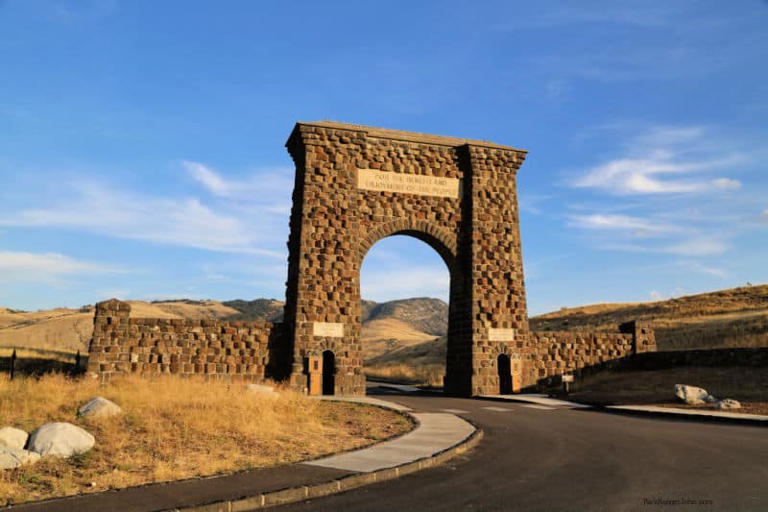

Yellowstone & Grand Teton Itinerary for 2, 3, 4, or 5 days (+Info & Tips)
By Author Jurga
Posted on Last updated: February 8, 2024

Grand Teton and Yellowstone National Parks are both amazing destinations for outdoor lovers. If you love wildlife, vast landscapes, and incredible natural wonders, then you cannot go wrong with this combo of two of the most popular National Parks in the U.S .
But how to best plan your time and see the best of Yellowstone and Grand Teton in one trip?
In this article, we share the suggested Grand Teton and Yellowstone itinerary for any trip from 2 to 5 days. If you have time for a longer visit, it’s easy to expand on these itineraries as well. Take a look!
Good to know: One day is really too short to see both parks. That’s why our ‘combo’ itineraries foresee at least 2 days for Grand Teton and Yellowstone. So if you only have a day in the area, you’ll have to choose just one park. If you wonder which is better – Grand Teton or Yellowstone, our personal recommendation is to visit Yellowstone. It’s more diverse and the sights are truly unique.
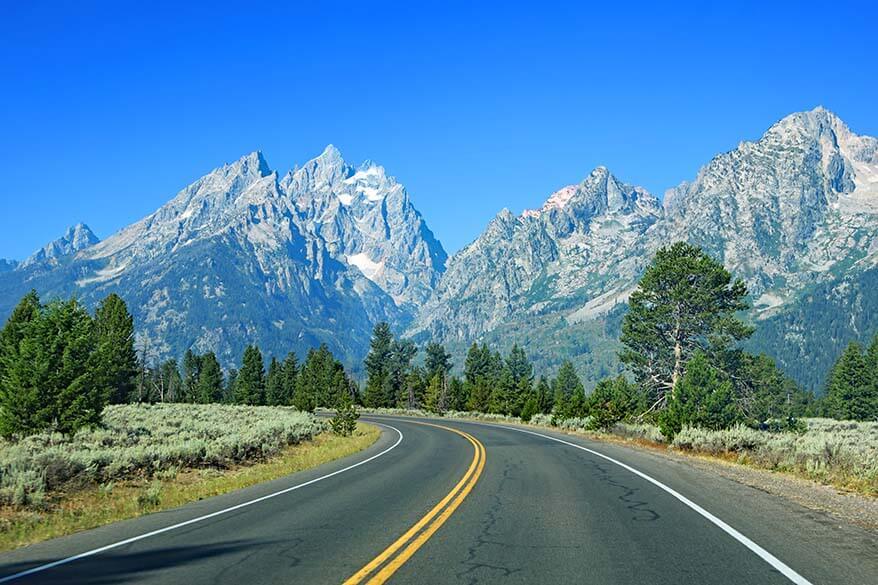
Where to start your trip: For the sake of simplicity and because this is the most popular option, we assume that you start and end your trip to Grand Teton and Yellowstone from the Jackson Hole area. So book a stay in Jackson, WY or Teton Village hotels for the first and the last nights of your trip. But you can easily adapt these itineraries depending on where you are arriving from.
TIP: Using the map below, you can also compare hotels and vacation rentals in the area and find the best deals for your travel dates . The map now shows Jackson accommodations and you can also zoom it out to see other places nearby. Check it out!
These accommodations are for the beginning/end of your trip. In the itinerary below, you’ll find our specific suggestions for where to stay every day during the road trip itself.
Important! This Yellowstone and Grand Teton itinerary is for summer only, when the roads are open (from around mid-May to mid-October). It’s also essential to check road conditions and closures on the official website , to be sure that the roads you are planning to take are open.
Entrance fee. Yellowstone NP and Grand Teton NP both have an entrance fee. It costs 35 USD for one park, per private vehicle, and is valid for 7 days. So it will cost your family 70 USD to visit both parks. TIP: If you are planning to visit several U.S. National Parks over a period of one year, it’s better to get America the Beautiful Pass. It costs 80 USD for the whole family traveling in the same vehicle and is valid in all National Parks and 2,000 federal recreation sites across the United States for 12 months from the month of purchase.
Without a car: Staying in Jackson Hole also makes it possible to visit Grand Teton and Yellowstone with organized tours . In our itineraries below, you can find the best tour recommendations that cover the same places as we describe in the same amount of time. Alternatively, check our detailed guide to the best Yellowstone tours .
TIP: We recommend packing a picnic lunch for every day of your trip. This will give you more flexibility during the day and you’ll be able to explore more without having to waste your time looking for a place to eat.

Without further ado, here are our suggested itineraries for Yellowstone and Grand Teton:
Grand Teton & Yellowstone: 2 Days Itinerary
If you have a total of 2 days for Yellowstone and Grand Teton, we recommend spending a day in each park.
Here is the 2-day organized tour that you could join – it covers the highlights of both parks. And here is what your self-drive Yellowstone Grand Teton road trip itinerary could look like:
Day 1 – Grand Teton National Park
Start your day very early and drive to the Kelly area . One of the main highlights here is the Mormon Row Historic District with its picturesque historic barns and homesteads. Another place not to be missed is the scenic Antelope Flats Road .
This is a beautiful scenic area with amazing views of the entire Teton Range. It’s also one of the best places to see wildlife in Grand Teton. Coming here in the morning will highly increase your chances to see animals as they are most active at dawn and at dusk. If you can’t make it here first thing in the morning, come in the late afternoon!
A must for any Grand Teton visitor is a scenic boat ride on Jenny Lake . The scenery you get to see from the boat is worth a short trip in itself, but we highly recommend to also do some hiking on the other side of the lake. Boats run very frequently and you can easily take another boat back after your hike. Just try to come here early in the morning or it gets crowded!
The easiest and the most popular hike is that to Hidden Falls . This family-friendly walk is just 1.3 miles round trip from the boat. After that, continue to Inspiration Point . This hike is about 2.2 miles round trip and requires some uphill climbing, but the views from the top are truly worth it. Our 5-year-old kids could do this hike without any problems, so it’s really not as difficult as it might look at first sight.
Afterwards, take the boat back to Jenny Lake Visitor Center and explore more of the Grand Teton National Park. Here are some scenic spots that are worth checking out: Jackson Lake , String Lake , Oxbow Bend , and Schwabacher’s Landing .

Accommodation: There are several lodging options between Grand Teton and Yellowstone. Hotels near Moran have the best location for both parks and would fit this itinerary best. We recommend Jenny Lake Lodge , Jackson Lake Lodge , or Headwaters Lodge – all perfectly located for this itinerary. You could stay here for two nights, so also for exploring Yellowstone on the next day.
However, accommodation here is really limited and often booked-up months in advance. In that case, you may have to return to Jackson Hole where you started your trip, stay in Yellowstone , or drive all the way to West Yellowstone where you can find more accommodation options (it’s also closer to Yellowstone for the next day).
Tour suggestion: You can also visit Grand Teton National Park with this organized tour from Jackson Hole . The itinerary of this day tour is very similar to our recommendations above.
READ ALSO: One Day in Grand Teton National Park
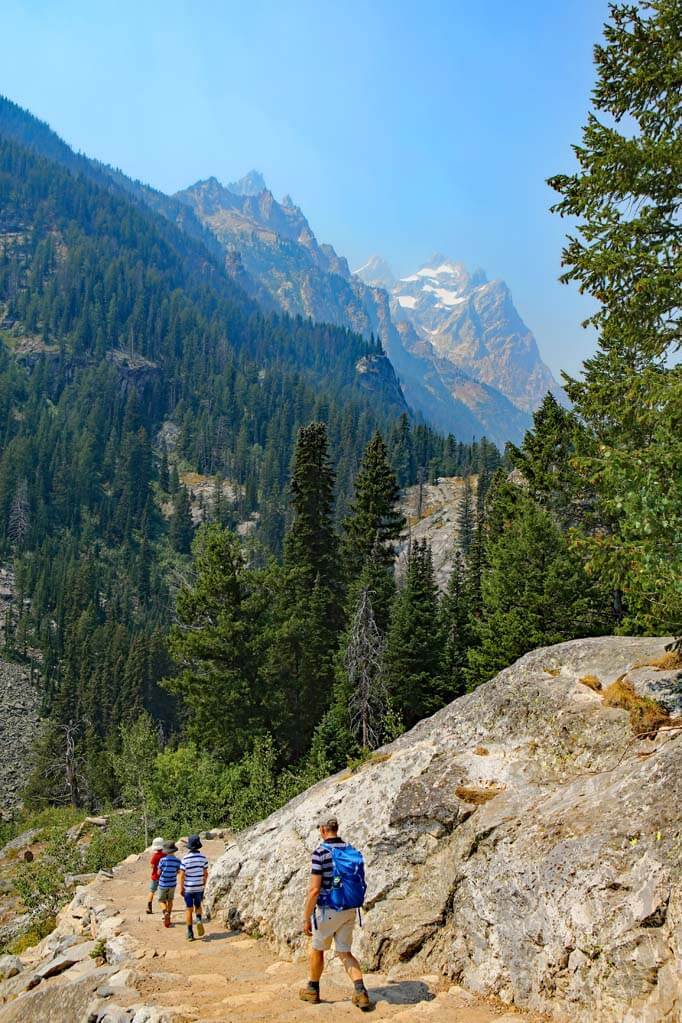
Day 2 – Yellowstone Lower Loop
Yellowstone National Park is huge and one day is not even enough to cover all the main landmarks of Yellowstone . However, if you plan well, you can see the most famous places in one day.
With just one day in Yellowstone, we recommend that you focus on the Lower Loop instead of trying to see it all. Even then, your day will be packed and you will only have the time to quickly check out most places.
Here is what your day in Yellowstone could look like:
- Visit the Old Faithful Area
- See the Grand Prismatic Spring
- Visit the Grand Canyon of the Yellowstone
- Drive through Hayden Valley (great for wildlife)
- Stop at West Thumb Geyser Basin at the Yellowstone Lake
MORE DETAILS FOR THIS DAY: One Day in Yellowstone & Best Places to See on Yellowstone South Loop
Accommodation: Same as the previous night or back to Jackson Hole.
Tour suggestion: You can also visit Yellowstone for a day with an organized tour from Jackson Hole .
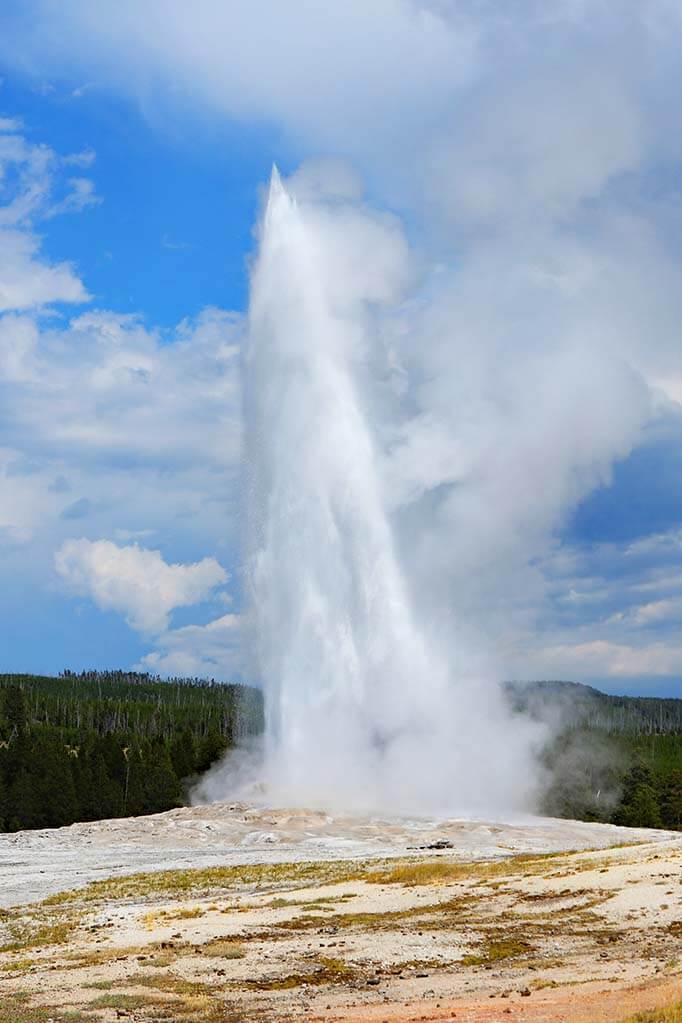
Yellowstone & Grand Teton Itinerary for 3 Days
If you have three days for Yellowstone and Grand Teton, we recommend spending one day in Grand Teton National Park and two days in Yellowstone. Here is what your trip could look like:
Day 1 – Grand Teton
See all the main highlights of Grand Teton National Park following our suggestions from the first day of the 2-day itinerary above .
Day 2 – Yellowstone West
Arriving from the south, we suggest that you concentrate on the west side of the Yellowstone Grand Loop on this day. So drive through the park all the way from south to the north, on the western side.
Here’s what your day could look like:
- Visit Old Faithful Geyser and the Upper Geyser Basin.
- Visit Grand Prismatic Spring and – potentially – hike to the Grand Prismatic Overlook .
- Explore part of the Norris Geyser Basin.
- Visit Mammoth Hot Springs.
Accommodation : Stay in Mammoth Hot Springs Hotel (inside the park) or in Gardiner (just outside the park).
READ ALSO: Best Hotels to Stay Near Yellowstone National Park

Day 3 – Yellowstone North & East
On your second day in Yellowstone, we recommend exploring North Yellowstone and the eastern side of the park . Here’s what your day could look like:
- Short stop at Undine Falls.
- Drive through Lamar Valley (wildlife).
- Short stop at Tower Fall.
- Drive via Dunraven Pass.
- Visit the Grand Canyon of the Yellowstone.
- Drive through Hayden Valley (wildlife).
- Short stop at Mud Volcano (optional).
- Yellowstone Lake – West Thumb Geyser Basin.
Accommodation : Drive back to Jackson Hole.
MORE DETAILS : Two Days in Yellowstone
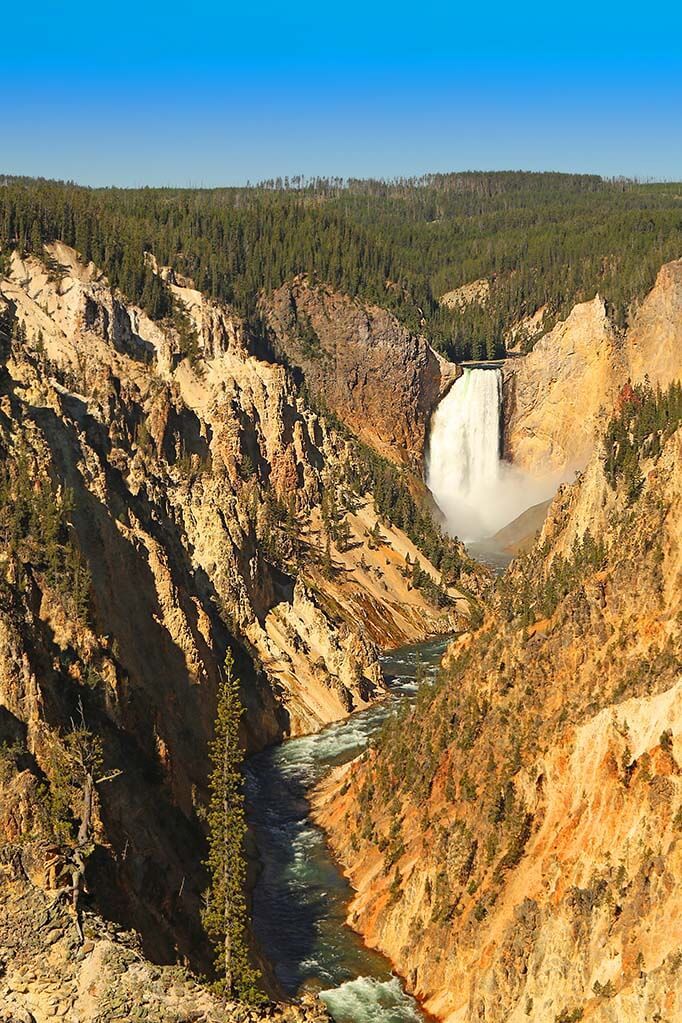
Yellowstone and Grand Teton: 4 Days Itinerary
With four days for Grand Teton and Yellowstone, we recommend spending one day in Grand Teton and three in Yellowstone National Park. With 3 days in Yellowstone, you can devote more time to each of the main areas of the park and explore them deeper.
If you find all the planning overwhelming, you can consider this highly-rated 4-day tour that covers both parks . Alternatively, here is our suggested itinerary for a self-drive Yellowstone and Grand Teton road trip in four days:
See the best places in Grand Teton National Park following our suggestions from day 1 of the 2-day itinerary above .
Day 2 – Yellowstone West Side
- Visit the Old Faithful and explore the entire Upper Geyser Basin.
- Visit Grand Prismatic and hike to the overlook
- Explore both parts of the Norris Geyser Basin
Accommodation : Stay in Mammoth Hot Springs Hotel (inside the park) or in Gardiner (just outside the park). Alternatively, see if you can find accommodation at the Old Faithful Inn or in the town of West Yellowstone , which could both be ok for the next night as well.

Day 3 – Yellowstone North Side
- Undine Falls.
- Short easy hike to Wraith Falls.
- Drive to Lamar Valley.
- Tower Fall.
- Dunraven Pass.
Accommodation: The best place to stay would be Canyon Lodge . However, if it’s not available (it’s usually booked up a year in advance), it might be better to stay in West Yellowstone or in the above-mentioned Old Faithful area.
Day 4 – Yellowstone East Side
- Explore the Grand Canyon of Yellowstone River. Visit all the lookout points and do some hiking.
- Hayden Valley.
- Mud Volcano area.
- Storm Point hike at Yellowstone Lake.
- West Thumb area.

5 Days in Yellowstone and Grand Teton
If you have five days for Yellowstone and Grand Teton National Parks, you could follow the 4-day itinerary above and add an extra day in Grand Teton. You can add this extra day either at the beginning or at the end of your trip, depending on what works best for you.
Grand Teton National Park has lots of hiking trails . Kayaking or rafting are also popular options. And – if you want to see more wildlife – there are lots of popular wildlife safari tours .
So with an extra day in the park, you could go for a safari ride in the morning and go for a nice hike in the afternoon. For example, the popular Taggart & Bradley Lakes loop hike takes just 2-3 hours (more info here ). Or you could head to one of the lakes for some kayaking. Colter Bay Marina is a good place to rent a kayak.
Otherwise, book one of the scenic rafting trips on the Snake River from Jackson. The river here is not too wild (class 2-3 rapids), but wild enough for a fun adventure. For most tours, kids from 6-7 years old can participate, but there is also a very popular easy rafting tour that can be done with a bit younger kids as well. And if that tour is unavailable, take a look at this easy floating trip on the Snake River .
And – if you are looking for something truly special to end your Yellowstone Grand Teton trip, go for a hot air balloon ride !
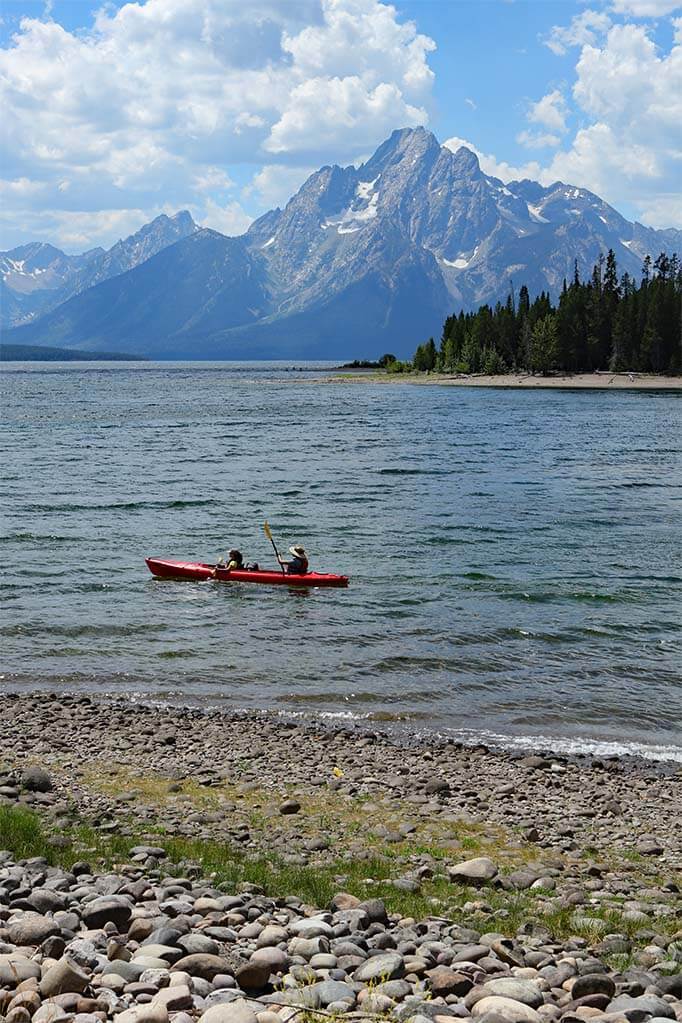
So, these are just some ideas on what your Yellowstone and Grand Teton itinerary could look like. If you have a week for this area, please check our Yellowstone itinerary for even more inspiration on places to see and how to plan your time. Also in Grand Teton and Jackson Hole you can find plenty of things to do (see activities and tours here ).
For practical information and travel tips to the area, please check our Yellowstone travel guide . It contains an overview of all our articles about the area, such as the best time to visit Yellowstone , Yellowstone packing list , or Yellowstone tips that will help you make the most of your trip!
TIP: If your trip continues further north, please check our suggested itineraries for Glacier National Park .
READ ALSO: Best Things to Do in Jackson Hole
Yellowstone – Grand Teton FAQ
Yellowstone and Grand Teton National Parks are both very different and each is worth a trip. However, if you only have time to visit one park, then definitely go to Yellowstone! With active geysers and colorful geothermal areas, Yellowstone National Park offers a truly unique experience that can’t be compared to any other place on the planet.
Grand Teton and Yellowstone almost border each other. The two parks are connected by John D. Rockefeller, Jr. Memorial Parkway. The distance between the two parks is a bit less than 7 miles, although the parkway itself extends into both parks for a total distance of 27 miles (43 km).
Yes, you can easily drive from Yellowstone to Grand Teton. In summer season, when all the roads are open, simply take US Hwy 191 which stretches through both parks.
If you want to see two parks in one trip – Yellowstone and Grand Teton – two days is an absolute minimum. This will allow you to see just the main highlights of each National Park. We recommend at least 4-6 days in the area: 3-4 days in Yellowstone and 1-2 days in Grand Teton. But you can easily spend a week or two here and you’ll find plenty to do.
The best time to visit Yellowstone and Grand Teton National Parks is in summer, from around mid-May to October. That’s when all the roads are open in the area and you can explore both parks to the fullest.
READ ALSO: Yellowstone in Summer (What It’s Really Like & Essential Tips)
If you found this post helpful, don’t forget to bookmark it and share it with your friends. Are you on Pinterest? Pin these images!
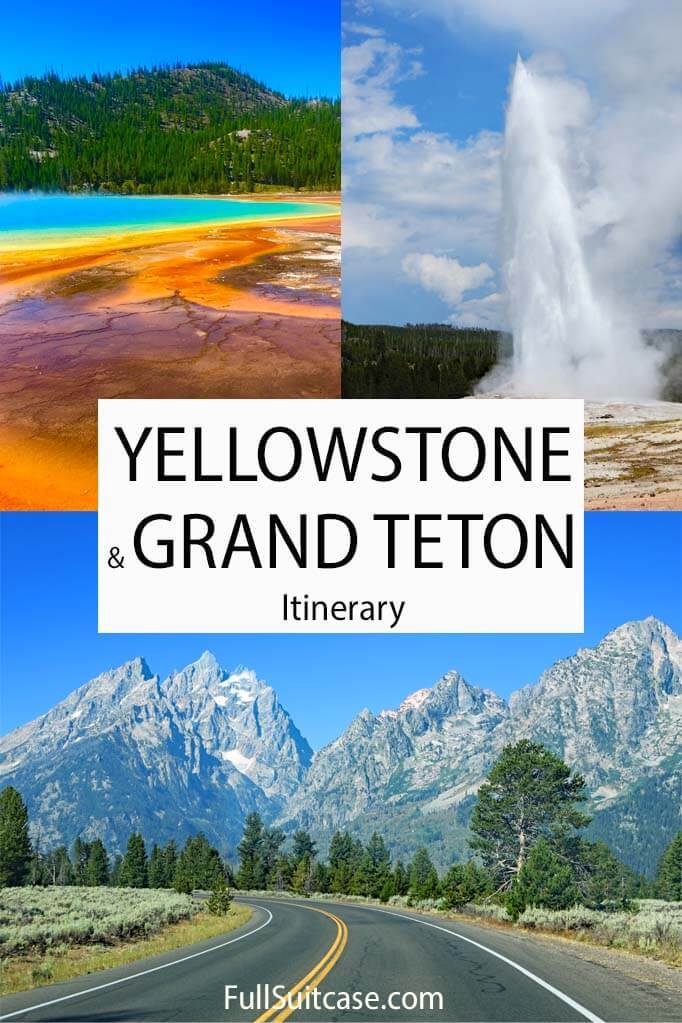
More travel inspiration for National Parks all over the USA:
- Best U.S. National Parks with Kids
- Lesser-known National Parks for Families
- Zion – Bryce Canyon Itinerary
- Grand Canyon Day Trip
- Glacier National Park Itinerary
- Rocky Mountain National Park Itinerary
- Acadia National Park Itinerary
- Grand Canyon – Antelope Canyon Itinerary
- Yosemite Travel Tips
- Best Places to See in Death Valley National Park
- Olympic National Park Itinerary
- Grand Canyon in Winter
- … for many more destinations, please see our USA travel guide .
This site uses Akismet to reduce spam. Learn how your comment data is processed .
Thursday 22nd of February 2024
Hi! I'm starting to plan a trip to Grand Teton and Yellowstone for September 2024, is this too short notice to find close places to stay? I'm getting overwhelmed with the planning and where to stay and for how long...we're thinking of a week long trip to see both parks. This is such an informative post, thank you for putting it together!
Friday 23rd of February 2024
Hi Alex, you just have to check accommodation availability for your travel dates and you'll quickly see what's still possible. The chances of finding something inside the national parks are probably pretty slim by now, unless you are very flexible to adjust your plans if you find a night or two free at some loges. But there should still be plenty of options in the Jackson Hole area as well as West Yellowstone and Gardiner. With a week for two parks, you could spend 2-3 days in Grand Teton and the rest in Yellowstone. How exactly to plan your trip will indeed depend on where you base yourself. So look for hotels first and then make more precise plans based on that. Good luck (and don't wait too long!).
Thursday 13th of July 2023
I happened to stumble across your website and I wish I would've found it years ago. I'll never plan another trip without looking at your website first. Thank you for all this incredibly helpful information!
We plan on staying July 30-August 3 in Yellowstone and August 3-August 6 in Grand Teton. From my understanding, we should stay at separate hotels for both parks because of the distance in between, right? There's not one hotel that's conveniently located in between both places?
We're going to follow your four day itinerary. Where it says Yellowstone north, south, east sides, do you have to enter from those respective entrances or can you enter from say the west side every day and just drive to those places on the itinerary for that day?
My elderly grandparents may only want to do the parks one or two days due to all the walking. Are there things for them to do outside of Yellowstone or Grand Teton while my son and I are in the park? Thank you!
Friday 14th of July 2023
Hi Jordan, thank you for the kind feedback. As for your trip, it's really last-minute, so you'll probably struggle to find hotels in that area, let alone find something that would be ideally located for both parks. For Yellowstone, you should probably look at the West Yellowstone area - it has a lot of accommodations, so you may find something there. For Grand Teton, Jackson Hole is probably your best shot. In both cases, you'll have quite some driving to do to get to the main places in these parks. And yes, you can enter the park anywhere you like and drive to the other areas. Just keep in mind that it will be VERY busy everywhere, so try to start your days early. See also our article with Yellowstone summer tips for more info. Both - West Yellowstone and Jackson Hole are nice little towns with good facilities, so they are good places for your parents to stay if they are not going into the parks with you. But - at least in Yellowstone - most of the top landmarks are easily accessible, so take your parents with you. Hope this helps. Book your hotels ASAP and enjoy your trip!
Hazel Ledesma
Friday 30th of June 2023
What is the best hotel to stay in Yellowstone in terms of distance to the place? We are planning for 5 to 6 days trip both Grand Theton and Yellowstone. Then we want to go to Mt. Rushmore. We are from Southern California. Thanks.
Saturday 1st of July 2023
Hi Hazel, Yellowstone is so big that there is no one 'best' hotel. Plus, by now, all the hotels inside the park are long booked up for the summer season. So if you are traveling this summer, it's really a matter of finding something that is available for your travel dates and suits your itinerary. The places where you'll find most accommodation options are West Yellowstone and Gardiner. Both are just outside the park. Please take a look at our guide on where to stay in Yellowstone for more information and accommodation suggestions just near the park. Hope this helps.
Wednesday 8th of March 2023
We are planning a trip to see Yellowstone, Grand Tetons and Jackson Hole in July for about 8 days. We will be driving from Texas. What itinerary and route do you recommend?
Hi Andrea, I recommend spending as much time as you can in the area; so take a look at the 4-5 days itinerary suggestions in the article. The rest really depends on how long it takes you to get there and which accommodations you will be able to find. If you are traveling in the summer, you may have difficulties finding accommodation in the best locations in Yellowstone and Grand Teton, so your itinerary will depend on that too. Good luck with the planning, book asap, and have a great trip!
Wednesday 8th of February 2023
Hi Jurga, Very informative blog. We are planning a trip to Yellowstone and Grand Teton this May and we'll be flying into and out of Bozeman (for flight connections etc it works out better). We have 3 days total and would like to cover 2 days in yellowstone and one in grand teton. Can you suggest an itinerary and place of stay (West Yellowstone or Gardiner) (we prefer to just stay in one place instead of two different places) and an optimal plan to cover important points from both places?
Friday 10th of February 2023
@Jurga, Thank you Jurga. Appreciate your response. Yes, I was thinking on similar lines.
Hi Ram, as much as I'd like to help, unfortunately, I really have no time to help with individual itineraries. You could take a look at our 2-day Yellowstone itinerary and adjust it to start from Gardiner or West Yellowstone (and even just stay in one place). However, visiting Grand Teton from any of these towns is really quite far (at least 2.5-3.5 hours drive one way); West Yellowstone is somewhat closer than Gardiner. So, ideally, you would do Bozeman - Yellowstone - Grand Teton - Yellowstone - Bozeman (staying in either Gardiner or West Yellowstone on the first and the last night and somewhere closer to Grand Teton on the second night, if you can still find accommodation in that area). Hope this helps a bit. Good luck with the planning!
- Yellowstone National Park Tourism
- Yellowstone National Park Hotels
- Yellowstone National Park Bed and Breakfast
- Yellowstone National Park Vacation Rentals
- Flights to Yellowstone National Park
- Yellowstone National Park Restaurants
- Things to Do in Yellowstone National Park
- Yellowstone National Park Travel Forum
- Yellowstone National Park Photos
- Yellowstone National Park Map
- Yellowstone Travel Articles
- All Yellowstone National Park Hotels
- Yellowstone National Park Hotel Deals
- Yellowstone National Park
- Things to Do
- Restaurants
- Vacation Rentals
- Travel Stories
- Rental Cars
- Add a Place
- Travel Forum
- Travelers' Choice
- Help Center
June 2024 Itinerary Critique/Advice - Yellowstone National Park Forum
- United States
- Wyoming (WY)
- Yellowstone National Park
June 2024 Itinerary Critique/Advice
- United States Forums
- Europe Forums
- Canada Forums
- Asia Forums
- Central America Forums
- Africa Forums
- Caribbean Forums
- Mexico Forums
- South Pacific Forums
- South America Forums
- Middle East Forums
- Honeymoons and Romance
- Business Travel
- Train Travel
- Traveling With Disabilities
- Tripadvisor Support
- Solo Travel
- Bargain Travel
- Timeshares / Vacation Rentals
- Wyoming forums
- Yellowstone National Park forum

Our rough itinerary stands as follows ( we would love and appreciate your advice/critique):
Land in BZN at 10:40 PM
Stay the night in Bozeman
Travel to North Entrance of YNP (leave Bozeman after 9:00 AM pick up of rented bear spray, cooler, etc)
Mammoth Hot Springs - stop quickly for maps, etc.; do the rest tomorrow
Wraith Falls Hike
Petrified Tree
Tower-Roosevelt
Tower Falls
Lamar Valley
Trout Lake Trail and/or part of the Lamar River Trail if we have time
Overnight in Gardiner
Mammoth Hot Springs - walk the boardwalks, etc.
Norris Geyser Basin
Ice Lake Hike
Canyon Village
Grand Canyon of the Yellowstone
Drive through Hayden Valley if we have time
Artists Paintpots
Gibbon Falls
Fountain Paintpot
Midway Geyser Basin/ Grand Prismatic Spring
Biscuit Basin - Mystic Falls Hike
Old Faithful
Kepler Cascades
Overnight in West Yellowstone
*could choose to do this backwards today, getting up early to get to Hayden Valley near sunrise
West Thumb Geyser Basin
Trail to Yellowstone Lake Overlook
Natural Bridge Hike
Mud Volcano
Sulfur Cauldron
Hayden Valley
Head to Jackson and GTNP
7 replies to this topic

When? How much time do you have allotted for GTNP and the southern half of Greater Yellowstone?
I think you will find quite a few people that like several outings a day like you're planning. I tire quickly of multiple quicker roadside objectives. I am a person that likes longer, more immersive "goals." If you can hike, not stroll, I'd think about one if not more of Yellowstone's classic DAY hikes provided you're coming in actual hiking season. Just one guy's opinion.
I forgot. Early June can be COSNIDERABLY different than late June. The actual dates you'll be here are crucial for sound recommendations.
Thanks much for your input, Absarokanaut! We land at BZN on Saturday, June 8, and will be in YNP June 9, 10, 11 and 12. We leave for Jackson/GTNP on Thursday, June 13, and will be there June 13, 14, 15, and 16....flying back out on the 17th.

Interested in how you chose Ice Lake for a first visit hike.
Anything you miss on the lower west or lower east side you can grab as you go to GTNP if you plan to go through Yellowstone. You can decide that day which way to go.
You can certainly go outside of the park to get to GTNP. And you can decide at the time! You have some longer days, but it all depends on the length of stops. As you are returning to Gardiner and West Yellowstone, you can pick up something if you want on another day. You can't see everything in a lifetime anyway, so prioritize you stops, then enjoy filling in your days as it works for you.
Sun 9 get supplies/ food/ snacks…see mammoth, night mammoth
Mon 10 Sunrise lamar valley, see sone of beartooth, lunch Cooke city, pm mammoth and dunhaven pass
Tue 11 norris, geyser basin, old faithful night west yell
Wed 12 old faithful , westvthumb , geyser basin night west yell
Thu 13 am canyon, pm lake, night Tetons
Fri 14 Tetons
Sat 15 Tetons
Sun 16 Tetons
Mon 17 fly home. Dollar, thrifty, and hertz rental car sites are not on airport property. Thrn have once an hr shuttles to the airport. Dollar/ thrifty is in the downtown jackson area while hertz is off thr main road onnthe turn off to Teton village.
- Itinerary Question 7:18 pm
- Cody, Yellowstone and Tetons trip 6:14 pm
- Buying supplies 6:03 pm
- 4 days 5:58 pm
- One week based in Island Park 5:44 pm
- Aug 2023 YNP GTNP Itinerary- I am so indecisive! 11:52 am
- Old Faithful Inn Flag Lowering Ceremony on the Roof today
- Yellowstone and Grand Teton yesterday
- Yellowstone Aug/Sep yesterday
- July 4 in Yellowstone itinerary Question yesterday
- Jackson Hole to Bozeman 7 day itinerary help yesterday
- 4-5 Day trip Yellowstone and Grand Canyon Apr 27, 2024
- Best coffee in Yellowstone? Apr 27, 2024
- September trip to Montana Apr 27, 2024
- Best airport to fly into for Yellowstone and itinerary help 11 replies
- Nearest International Airport 8 replies
- driving distance from Jackson Hole 5 replies
- How far from Salt Lake City? 19 replies
- Best Time to visit 2 replies
- Need Advice About Visiting Yellowstone :) 5 replies
- San Francisco to Yellowstone by Car 5 replies
- routes denver to yellowstone 5 replies
- Tetons-Yellowstone from Denver 10 replies
- Yellowstone vs. Yosemite 16 replies
Yellowstone National Park Hotels and Places to Stay
- 2024 Trip Reports
- 2023 Trip Reports
- 2022 Trip Reports
- Older Trip Report Links
- 2023 YNP Road Construction Delays & Night Closures
- Important 2023 Advance Reservation Changes for Yellowstone Park starting April 2022
- Please Report illegal behavior or criminal acts in Yellowstone. 2 choices.
- Road Conditions/Winter weather closures for WY, YNP, GTNP
- When is the best time to visit Yellowstone?
- Yellowstone IN PARK Lodging
- Avoid Third Party lodging bookers
- How do I prevent Altitude Sickness?
- For Yellowstone, which airport should I use?
- Are there tours available in the park?
- The Famous Yellow Buses of Yellowstone are Special.
- Visiting Yellowstone and Grand Tetons with limited mobility
- Do I need an SUV to visit YNP?
- RVing in YNP
- Cooking/Grilling in cabins/picnic areas in YNP
- Observing/Photographing wildlife. Scope Rental.
- Birding Resources
- Best Wildlife Locations in Yellowstone?
- How do I store my bear spray
- Beartooth Highway Distances/Hikes/Waterfalls
- How do you organize your trip information?
- What Do Newbies Need to Know?
- Best route between SLC and Jackson?
- YNP on Twitter & Facebook?


National Parks Traveler
Climate change and the parks
National Park Travel
Help power the National Parks Traveler’s coverage of national parks and protected areas.
You are here
Update | idaho man arrested after reportedly kicking yellowstone national park bison.
An Idaho man was arrested for allegedly harassing bison in Yellowstone National Park/NPS file
Editor's note: This updates with park staff saying the man was gored by the bison.
An Idaho man who allegedly kicked a bison and in turn was injured by the animal in Yellowstone National Park was arrested on several counts and faces the possibility of thousands of dollars in fines and time in jail.
Clarence Yoder, of Idaho Falls, reportedly kicked the animal in the leg on April 21 along the park's West Entrance Road near the Seven Mile Bridge, and the bison in turn gored the man, according to a park release. Rangers who responded to the area after receiving a report of a man harassing a herd of bison found Yoder's vehicle near the West Entrance and stopped it in the town of West Yellowstone, Montana.
The 40-year-old Yoder was arrested and charged with being under the influence of alcohol, disorderly conduct, approaching wildlife, and disturbing wildlife, the park release said. The driver of the vehicle Yoder traveled in, 37-year-old McKenna Bass, of Idaho Falls, Idaho, was also arrested and cited for driving under the influence, interference for failure to yield to emergency light activation, and disturbing wildlife, it added.
Yoder sustained unspecified minor injuries from the encounter with the bison, according to the release, and rangers took him to a medical facility where he was medically evaluated, treated, and released from medical care. He then was transported to the Gallatin County Detention Center. Yoder and Bass appeared in court on April 22 and pleaded innocent to the charges.
Each violation can result in fines up to $5,000 and six months in jail.
This is the first reported incident of a visitor being injured by a bison in 2024. The last reported incident occurred on July 17, 2023 . There was one reported incident in 2023 and three in 2022.
- Yellowstone National Park
- Parks in the News
- Add new comment
GOOD!!! What the hell!!!!
Add comment
This question is for testing whether or not you are a human visitor and to prevent automated spam submissions.
Support Journalism about National Parks!
National parks traveler is a 501(c)(3) nonprofit..
Donate Now!
The Essential RVing Guide

The National Parks RVing Guide , aka the Essential RVing Guide To The National Parks , is the definitive guide for RVers seeking information on campgrounds in the National Park System where they can park their rigs. It's available for free for both iPhones and Android models.
This app is packed with RVing specific details on more than 250 campgrounds in more than 70 parks. You'll also find stories about RVing in the parks, some tips if you've just recently turned into an RVer, and some planning suggestions. A bonus that wasn't in the previous eBook or PDF versions of this guide are feeds of Traveler content: you'll find our latest stories as well as our most recent podcasts just a click away. So whether you have an iPhone or an Android , download this app and start exploring the campgrounds in the National Park System where you can park your rig.
- Vallow-Daybell Coverage
- Coronavirus Coverage
- Crime Tracker
- Pay It Forward
- Prevent Child Abuse
- Scam Alerts
- First Alert VIPIR Radar
- Local Forecast
- 8-Day Forecasts
- Road Report
- Athlete of the Week
- Top Plays of the Week
- High School Athletics
- East Idaho Game Night
- Boise State Athletics
- Idaho State Athletics
- BYU Athletics
- Election Results
- Idaho Politics
- Interactive Results
- Local News 8 Newscast Livestream
- Livestream Events
- Must See Videos
- Mental Health Monday
- Entertainment
- Yellowstone Teton Territory Travel and Tourism
- Energizing Conversations with INL
- Question of the Day
- Banking on Business
- House & Home
- Safe at Home
- BOGO Buddy Pass Golf Card
- Contest Rules
- Submit Tips, Pics and Video
- Work for LocalNews8
- Meet the Team
- Advertise With Us
- TV Listings
- Closed Captioning
- Download Our Apps
- FCC Public File KIFI
- FCC Public File KIDK
- FCC Public File K34NC-D
- CW East Idaho
- Telemundo East Idaho
- Jobs and Internships
- Scholarships
- Translator Information
TCSAR rescues injured skier in Yellowstone
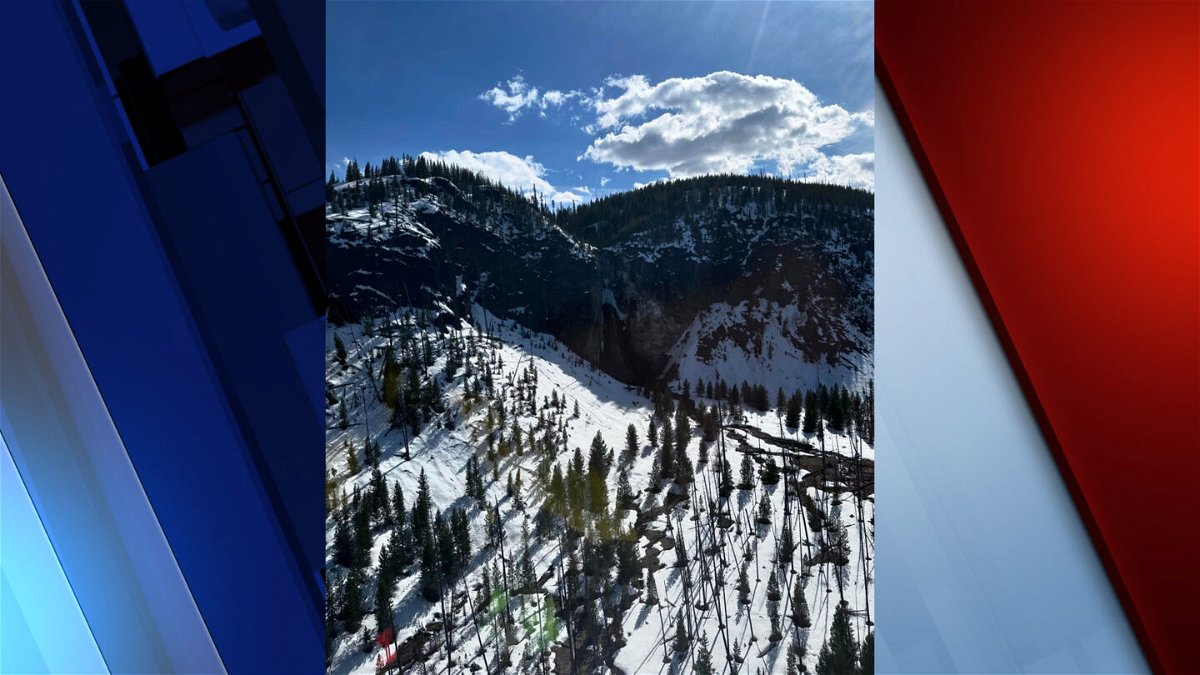
YELLOWSTONE NATIONAL PARK (KIFI) - Teton County Search & Rescue received an alert for an injured Nordic skier in the Fairy Falls area of Yellowstone National Park near Old Faithful on Wednesday, April 24.
The 55-year-old woman and her partner had skied about a mile into the backcountry before an injury prevented them from continuing on their own. They issued an emergency call that was picked up by the Yellowstone Communications Center.
Park rangers from Yellowstone skied in to help the injured skier. Upon arrival, rangers requested helicopter assistance from TCSAR. Currently, TCSAR has the region's only SAR-dedicated helicopter, and although Yellowstone is not a regular location for TCSAR missions, the team has done rescues in the park when requested by park officials.
TCSAR responded to this incident with a heli team consisting of three volunteers and a pilot, with an initial plan of doing a possible short-haul extraction. The team departed the hangar in Jackson at 3:36 p.m.
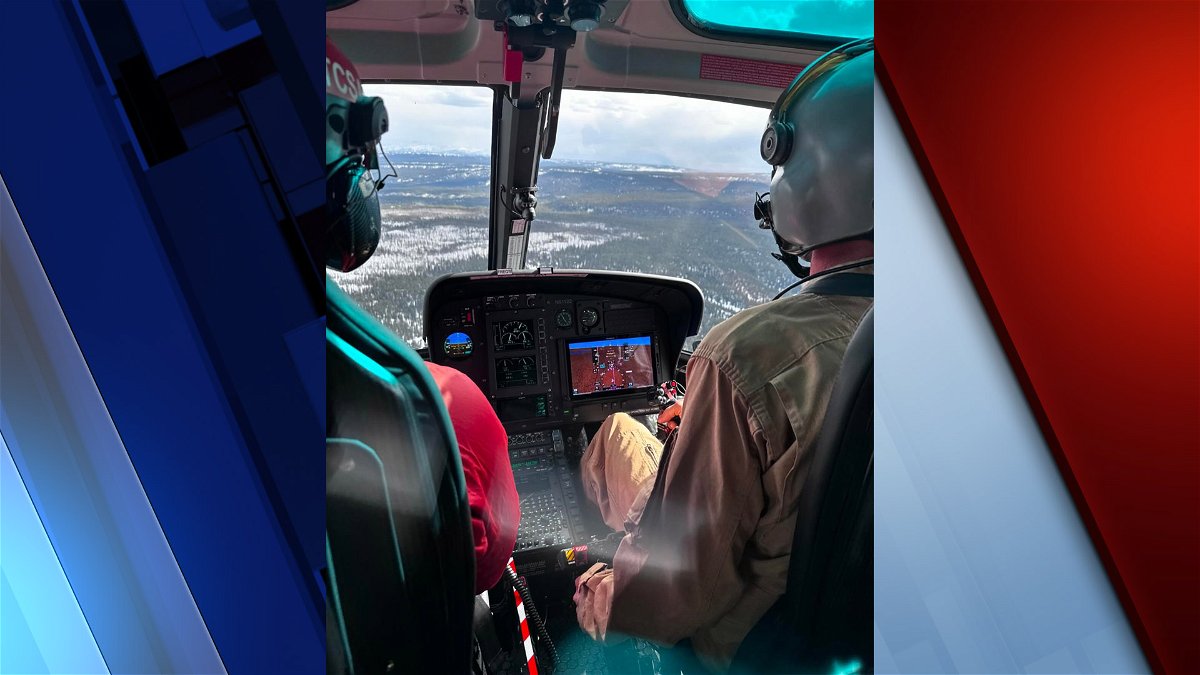
Flight time to the Fairy Falls area was about 30 minutes. The helicopter circled several times before spotting the injured party. After locating the patient, they landed the ship and were able to load the injured skier and partner into the helicopter. The team then flew the skiers to a landing zone on the Grand Loop Road inside the park, where they transferred the patient to a waiting ambulance.
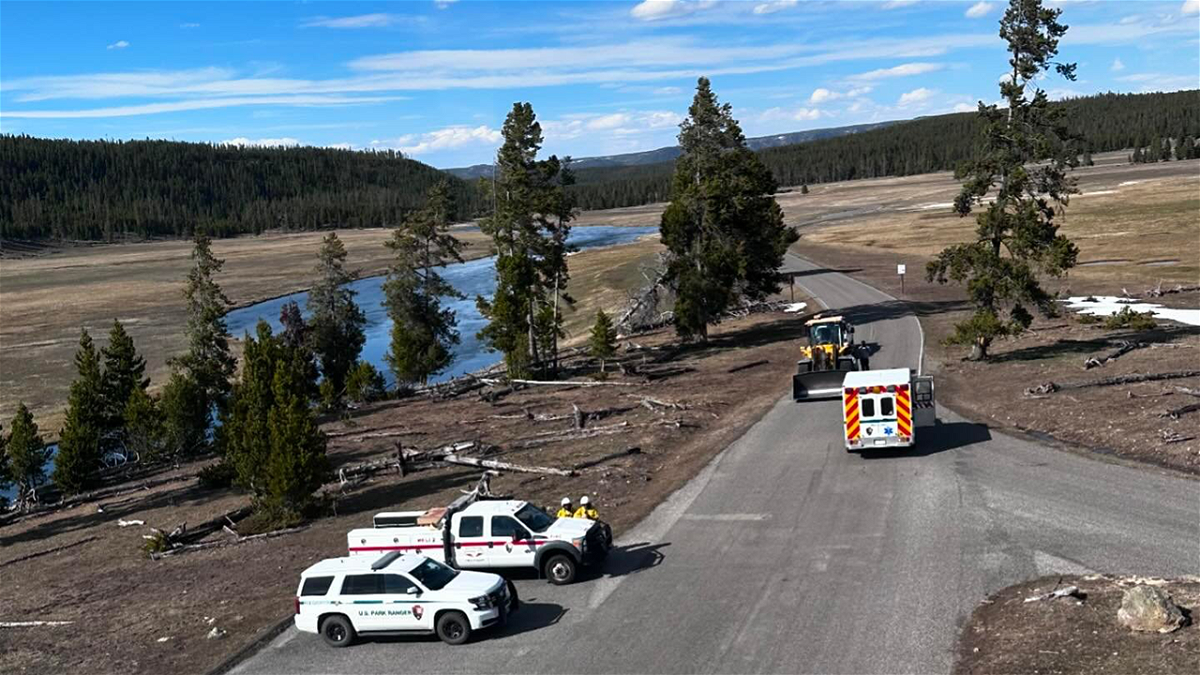
Afterward, the team flew back to Jackson, completing the mission in 3 hours and 30 minutes.
Jump to comments ↓

KIFI Local News 8 is committed to providing a forum for civil and constructive conversation.
Please keep your comments respectful and relevant. You can review our Community Guidelines by clicking here
If you would like to share a story idea, please submit it here .
- Share full article

Yellowstone’s Wolves: A Debate Over Their Role in the Park’s Ecosystem
New research questions the long-held theory that reintroduction of such a predator caused a trophic cascade, spawning renewal of vegetation and spurring biodiversity.
Yellowstone’s ecological transformation through the reintroduction of wolves has become a case study for how to correct out-of-balance ecosystems. But new research challenges that notion. Credit... Elizabeth Boehm/Danita Delimont, via Alamy
Supported by
By Jim Robbins
- April 23, 2024
In 1995, 14 wolves were delivered by truck and sled to the heart of Yellowstone National Park in Wyoming, where the animal had long been absent. Others followed.
Since then, a story has grown up, based on early research, that as the wolves increased in number, they hunted the park’s elk herds, significantly reducing them by about half from 17,000.
The wolves’ return and predatory dominance was believed to have had a widespread effect known as a trophic cascade, by decreasing grazing and restoring and expanding forests, grasses and other wildlife. It supposedly even changed the course of rivers as streamside vegetation returned.
Yellowstone’s dramatic transformation through the reintroduction of wolves has become a global parable for how to correct out-of-balance ecosystems.
In recent years, however, new research has walked that story back. Yes, stands of aspen and willows are thriving again — in some places. But decades of damage from elk herds’ grazing and trampling so thoroughly changed the landscape that large areas remain scarred and may not recover for a long time, if ever.
Wolf packs, in other words, are not magic bullets for restoring ecosystems.
“I would say it’s exaggerated, greatly exaggerated,” said Thomas Hobbs, a professor of natural resource ecology at Colorado State University and the lead author of a long-term study that adds new fuel to the debate over whether Yellowstone experienced a trophic cascade.
“You could argue a trophic trickle maybe,” said Daniel Stahler, the park’s lead wolf biologist who has studied the phenomenon. “Not a trophic cascade.”
Not only is the park’s recovery far less robust than first thought, but the story as it has been told is more complex, Dr. Hobbs said.
But the legend of the wolves’ influence on the park persists.

“How in the world does this lovely story — and it is a beautiful story — come to be seen as fact?” Dr. Hobbs wondered. A chapter of a book tried to answer that, concluding that a video called “ How Wolves Change Rivers ,” which has received tens of millions of views, contributed mightily to the tale.
The ecological record is complicated by the fact that, as elk declined, the number of bison increased substantially, continuing some of the same patterns, like heavy grazing in some places. Moreover, Yellowstone is growing warmer and drier with climate change.
Large numbers of elk in the north of the park had caused significant ecological changes — vegetation disappeared, trampled streams led to extensive erosion, and invasive plant species took hold. Riparian vegetation, or the grasses, the trees and the shrubs along riverbanks and streams, provides a critical habitat for birds, insects and other species to flourish and to maintain biodiversity in the park.
Once elk numbers dwindled, willows and aspens returned along rivers and streams and flourished. The beaver, an engineer of ecosystems, reappeared, using the dense new growth of willows for both food and construction materials. Colonies built new dams, creating ponds that enhanced stream habitats for birds, fish, grizzlies and other bears as well as promoting the growth of more willows and spring vegetation.
But wolves were only one piece of a larger picture, argue Dr. Hobbs and other skeptics of a full-blown trophic cascade at Yellowstone. Grizzly bears and humans played a role, too. For eight years after wolves re-entered the park, hunters killed more elk than the wolves did.
“The other members of the predator guild increased, and human harvest outside of the park has been clearly shown to be responsible for the decline in elk numbers the first 10 years after the wolves were introduced,” Dr. Hobbs said.
The changes attributed to the presence of stalking wolves, some research showed, weren’t only the result of fewer elk, but of a change in elk behavior called “the ecology of fear.” Scientists suggested that the big ungulates could no longer safely hang out along river or stream banks and eat everything in sight. They became extremely cautious, hiding in places where they could be vigilant. That allowed a return of vegetation in those places.
Dr. Hobbs and others contend that subsequent research has not borne that theory out.
Another overlooked factor is that around the same time wolves were returning, 129 beavers were reintroduced by the U.S. Forest Service onto streams north of the park. So it wasn’t just wolf predation on elk and the subsequent return of wolves that enabled an increase in beavers, experts say.
Some researchers say the so-called trophic cascade and rebirth of streamside ecosystems would have been far more robust if it weren’t for the park’s growing bison herd. The bison population is at an all-time high — the most recent count last summer found nearly 5,000 animals. Much larger than elk, bison are less likely to be vulnerable to wolves, which numbered 124 this winter.
The park’s bison, some researchers say, are overgrazing and otherwise seriously damaging the ecosystems — allowing the spread of invasive species and trampling and destroying native plants.
The heavily grazed landscape is why, critics say, some 4,000 bison, also a record, left Yellowstone for Montana in the winter of 2023-24, when an unusually heavy snow buried forage. Because some bison harbor a disease, called brucellosis, that state officials say could infect cattle, they are not welcome outside the park’s borders. (There are no documented cases of transmission between bison and cattle.)
Montana officials say killing animals that may carry disease as they leave the park is the only way to stem the flow. During a hunt that began in the winter of 2023, Native Americans from tribes around the region took part. All told, hunters killed about 1,085 bison; 88 more were shipped to slaughter and 282 were transferred to tribes. This year, just a few animals have left the park.
The Park Service is expected to release a bison management plan in the coming months. It is considering three options: to allow for 3,500 to 5,000 animals, 3,500 to 6,000, or a more natural population that could reach 7,000.
Richard Keigley, who was a research ecologist for the federal Geological Survey in the 1990s, has become an outspoken critic of the park’s bison management.
“They have created this juggernaut where we’ve got thousands of bison and the public believes this is the way things always were,” he said. “The bison that are there now have destroyed and degraded their primary ranges. People have to realize there’s something wrong in Yellowstone.”
Dr. Keigley said the bison population in the park fluctuated in the early years of the park, with about 229 animals in 1967. It has grown steadily since and peaked last year at 5,900.
“There is a hyperabundant bison population in our first national park,” said Robert Beschta, a professor emeritus of forest ecosystems at Oregon State University who has studied Yellowstone riparian areas for 20 years. He pointed to deteriorating conditions along the Lamar River from bison overgrazing.
“They are hammering it,” Mr. Beschta said. “The Lamar ranks right up there with the worst cattle allotments I’ve seen in the American West. Willows can’t grow. Cottonwoods can’t grow.”
A warmer and drier climate, he said, is making matters worse.
Such opinions, however, are not settled science. Some park experts believe that the presence of thousands of bison enhances park habitats because of something called the Green Wave Hypothesis.
Chris Geremia, a park biologist, is an author of a paper that makes the case that a large numbers of bison can stimulate plant growth by grazing grasses to the length of a suburban lawn. “By creating these grazing lawns bison and other herbivores — grasshoppers, elk — these lawns are sustaining more nutritious food for these animals,” he said.
Dr. Geremia contends that a tiny portion — perhaps one-tenth of one percent — of the park may be devoid of some plants. “The other 99.9 percent of those habitats exists in all different levels of willow, aspen and cottonwood,” he said.
The Greater Yellowstone Coalition, a conservation organization, favors a bison population of 4,000 to 6,000 animals. Shana Drimal, who heads the group’s bison conservation program, said that park officials needed to monitor closely changing conditions like climate, drought and bison movement to ensure the ecosystems wouldn’t become further degraded.
Several scientists propose allowing the bison to migrate to the buffer zones beyond the park’s borders, where they are naturally inclined to travel. But it remains controversial because of the threat of disease.
“The only solution is to provide suitable winter range outside the park where they should be tolerated,” said Robert Crabtree, a chief scientist for the Yellowstone Ecological Research Center, a nonprofit. “When they migrate outside the park now it’s to habitat they evolved to prefer — and instead we kill them and ship them away.”
Advertisement

IMAGES
COMMENTS
Preparing For Your Trip. Taking time to plan your visit will make your experience more safe, fun, and rewarding. Select a link for the most accurate and up-to-date information about: Safety. Maps. Fees and Passes. Operating Dates, Seasons, and Services. Park Roads. Goods and Services.
West Yellowstone Entrance. Driving Distance and Time from Entrance to Grand Loop: 14 miles, 45 minutes. This is the most popular entrance and the best choice if staying outside of the park. Located in West Yellowstone, MT, it has plenty of restaurants, grocery stores, and gas stations.
If you choose to drive to Yellowstone National Park, these are some rough distances from major cities or nearby towns: Jackson, WY - 1 hour to the South Entrance. Bozeman, MT - 1.5 hours to North Entrance. Cody, WY - 1.5 hours to East Entrance. Idaho Falls, ID - 2 hours to West Entrance.
Below is a map indicating each of the suggested places from our 4-day Yellowstone itinerary. Places indicated in red are the ones described on day 1 of this itinerary, purple - day 2, yellow - day 3, and green - day 4. The blue dots are the places that we mention in the 5-days Yellowstone itinerary further below.
Here's what you need to know to start planning your trip - and for more detail pick up a copy of the Lonely Planet Yellowstone and Grand Teton National Parks travel guide and Yellowstone National Park Planning Map. Editor's note: Due to the COVID-19 pandemic, Yellowstone National Park began a phased reopening on June 1.
Millions of people visit Yellowstone annually to make lifelong memories while watching erupting geysers, roaming wildlife, and the artistry of thermophiles. With so much to explore and learn, however, there are some important considerations to help make this a successful visit. Buy Your Park Entrance Pass Online
Here's everything you need to know to plan your trip to Yellowstone National Park. What to see and do in Yellowstone. Let me start with the highlight: the wildlife. Among the many rare species you might encounter are grizzly and brown bears, wolves, mountain lions, foxes, coyotes, elk, deer, buffalo, moose and every matter of birds. You can ...
For additional information, download the Yellowstone National Park Trip Planner (pdf) and the Official Park Newspaper. You can also print information in ten different languages including 日本語 (Japanese), 中文 (Chinese), Español, Français, and Deutsch. Visit the official online store for books, maps, and guides to the park. Operated by ...
1. Visit in shoulder season. More than 4 million people visit Yellowstone National Park every year, with almost 70% of visitors arriving in the three summer months of June, July and August. Campgrounds, trailheads, restaurants and roads are stuffed to capacity. If your vacation dates allow, visit the park at the very beginning or end of the ...
Planning A Trip to Yellowstone is More Than Must-Sees. Yellowstone boasts natural wonders like the iconic Old Faithful geyser, the Grand Canyon of the Yellowstone, and vibrant hot springs. You can explore diverse ecosystems and Yellowstone is home to a variety of wildlife, including bison, elk, and grizzly bears.
Midday Yellowstone Itinerary: Eat at Tower Roosevelt. Located near Lamar Valley on the north side of the park, Roosevelt Lodge is a lodge built in the 1920s with a BBQ restaurant and bar. At the same time, enjoy the views of Tower Fall. Afternoon Yellowstone Itinerary: Hike part of the 33-mile Lamar River Trail 3K 1.
Within the boundaries of the park also happens to be the Yellowstone Caldera, a 34 x 45 mile super volcano within the national park. With this comes extreme volcanic and seismic activity, the reason for its thousands of geothermal features, geysers, and springs. Taking a road trip to Yellowstone is a dream for a lot of Americans, and it's ...
At more than 3,400 square miles, Yellowstone is huge. It can take hours to drive from one part of the park to another and speed limits are 45 mph or slower on all roads. Not to mention notorious bison jams often cause delays. Plan your trip strategically so you don't spend all your time driving.
1. Norris Geyser Basin. Old Faithful may be the most famous geyser at Yellowstone, but don't miss the easy two-mile trail at North Geyser Basin to sample a variety of impressive geothermal features, including the largest active geyser in the world. Any Yellowstone road trip needs to include it.
Tips for Planning a Trip to Yellowstone National Park. First, let's break down some of the key items before you arrive at Yellowstone National Park. How to get to Yellowstone National Park. Yellowstone National Park can easily reach 2 to 5 hours on a flight from most U.S. cities in the Northwest corner of Wyoming. Yellowstone Airport is the ...
The National Park Service has assembled a collection of convenient trip planning guides, now available in 10 different languages! Take a few minutes to read through the trip planner information below to learn more about Yellowstone National Park, including maps, information about transportation, weather, entrance fees, park safety and more.
Download our free stunning Yellowstone Trip Planner filled with an inspiring itinerary, gorgeous photographs, a park map and everything you need to plan your dream vacation. Order this insider's guide to Yellowstone today to get tips on how to get there, what to do and where to stay. Get even more trip planning information in our email ...
2 nights at Fishing Bridge Village - by Yellowstone Lake. 2 nights at Mammoth Hot Springs Village. 1 night at Roosevelt Village. 2 nights at Old Faithful Village (Old Faithful Inn is gorgeous) I know, a lot of moving, but it is a short distance and you won't be spending much time in your room anyways.
Planning a trip to Yellowstone National Park. With insider tips from real park rangers. Created in 1872, Yellowstone National Park is the world's first and one of its most famous national parks. The park's legendary geothermal features, including geysers, hot springs, and bubbling pools, are powered by a slumbering supervolcano that ...
Day 5: Depart Yellowstone National Park for Jackson Trail ride with Jackson Hole Pack Trips Overnight at Spring Creek Ranch. ... Plan a Trip to Grand Rapids, Michigan . Scenic Spots to Watch the Total Solar Eclipse. Advertisement - Continue Reading Below. The 15 Best Beaches Near Orlando.
This Yellowstone road trip route is perfect for those who want to experience the beauty of the open road and some of America's most untamed areas. Embark on a journey that is so much more than just national parks! Experience an epic American road trip complete with old western towns, historic monuments, intriguing culture, and unbelievable ...
West Entrance/ West Yellowstone MT: The Gray Wolf Inn and Suites, 250 S Canyon St., and the Holiday Inn, 315 W Yellowstone Ave, West Yellowstone, MT 59758. Tesla stations are also located in West ...
If you want to see two parks in one trip - Yellowstone and Grand Teton - two days is an absolute minimum. This will allow you to see just the main highlights of each National Park. We recommend at least 4-6 days in the area: 3-4 days in Yellowstone and 1-2 days in Grand Teton.
2024 Trip Reports; 2023 Trip Reports; 2022 Trip Reports; Older Trip Report Links; 2023 YNP Road Construction Delays & Night Closures; Important 2023 Advance Reservation Changes for Yellowstone Park starting April 2022; Please Report illegal behavior or criminal acts in Yellowstone. 2 choices. Road Conditions/Winter weather closures for WY, YNP ...
An Idaho man who allegedly kicked a bison and in turn was injured by the animal in Yellowstone National Park was arrested on several counts and faces the possibility of thousands of dollars in fines and time in jail.. Clarence Yoder, of Idaho Falls, reportedly kicked the animal in the leg on April 21 along the park's West Entrance Road near the Seven Mile Bridge, and the bison in turn ...
YELLOWSTONE NATIONAL PARK (KIFI) - Teton County Search & Rescue received an alert for an injured Nordic skier in the Fairy Falls area of Yellowstone National Park near Old Faithful on Wednesday ...
The Park Service is expected to release a bison management plan in the coming months. It is considering three options: to allow for 3,500 to 5,000 animals, 3,500 to 6,000, or a more natural ...